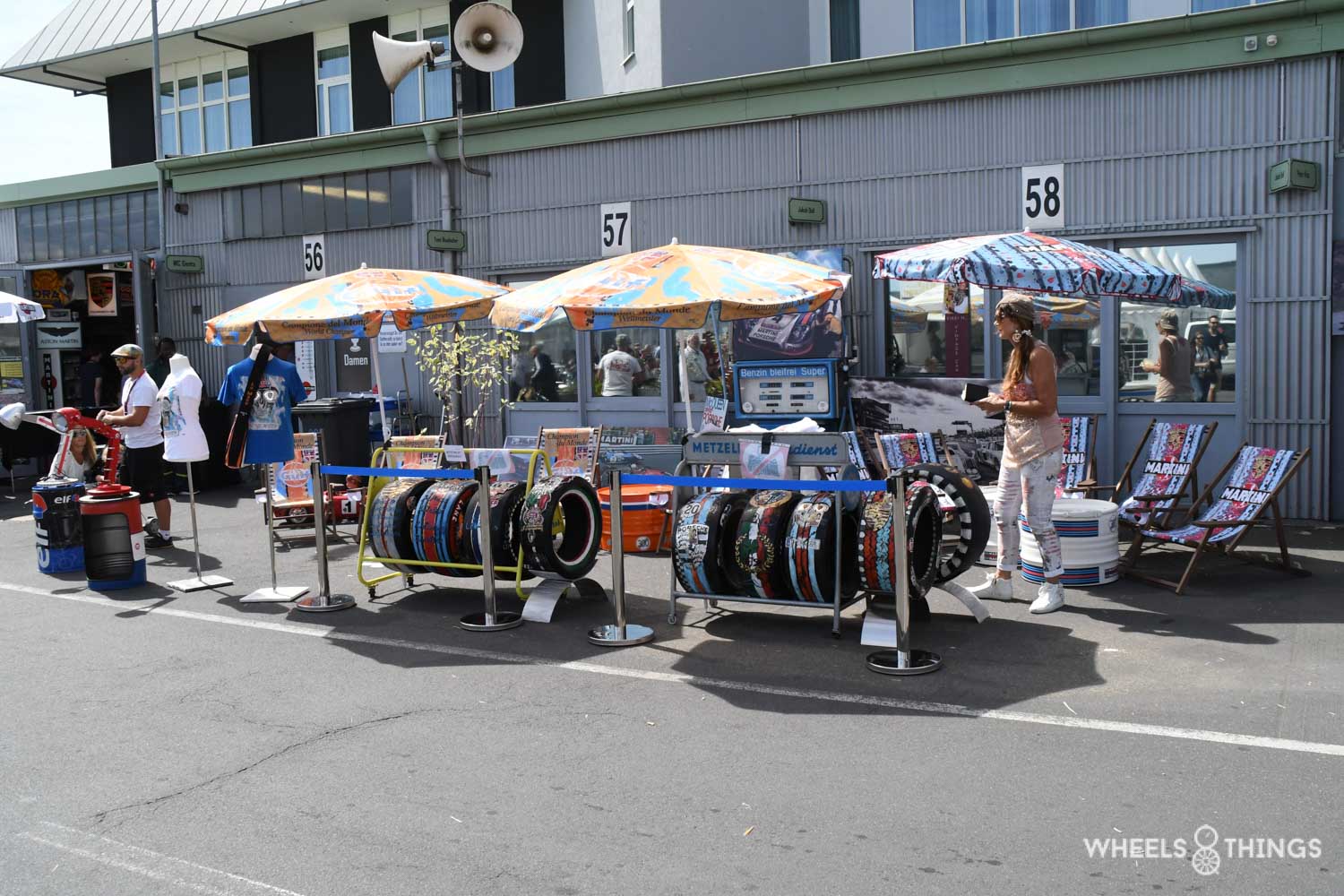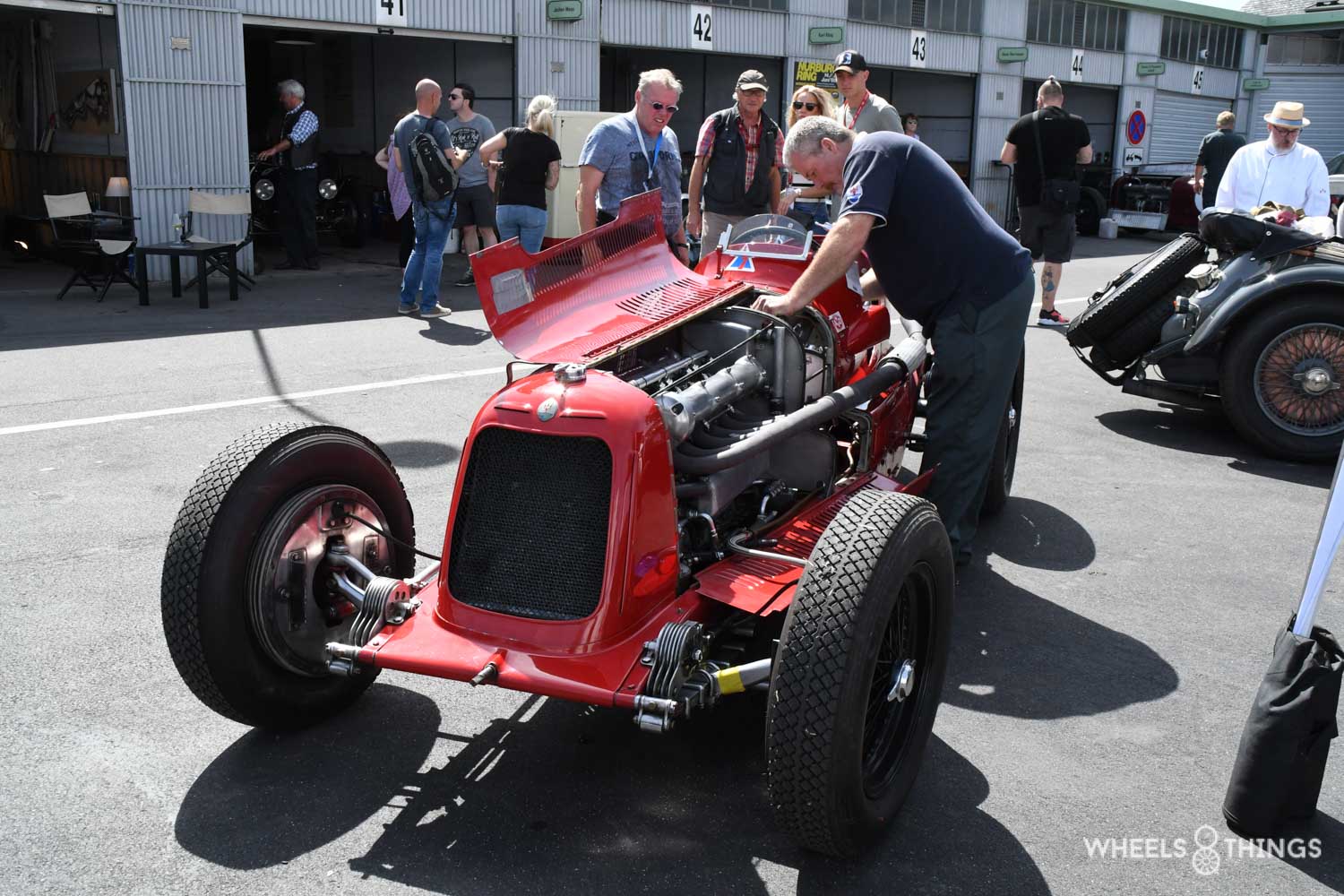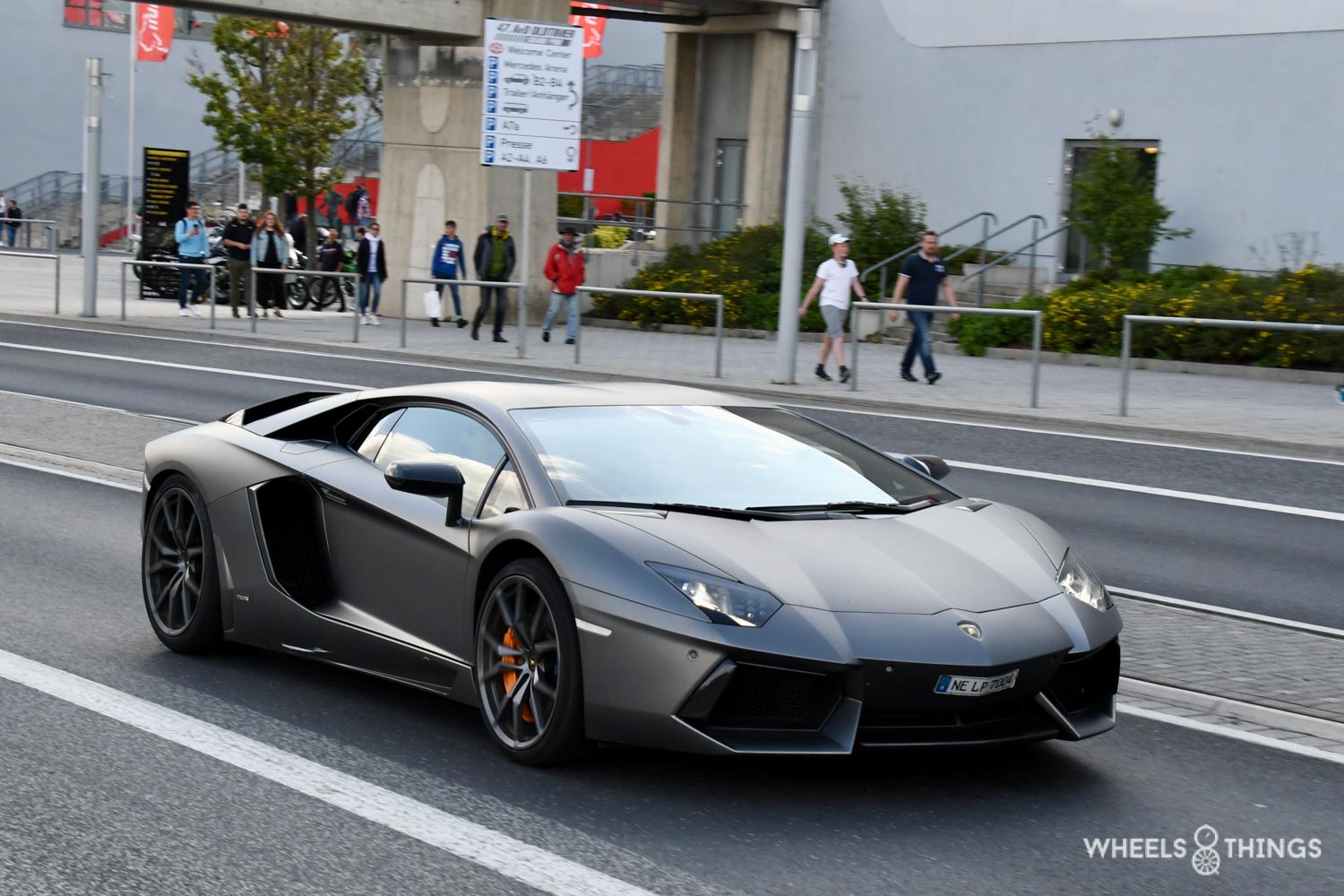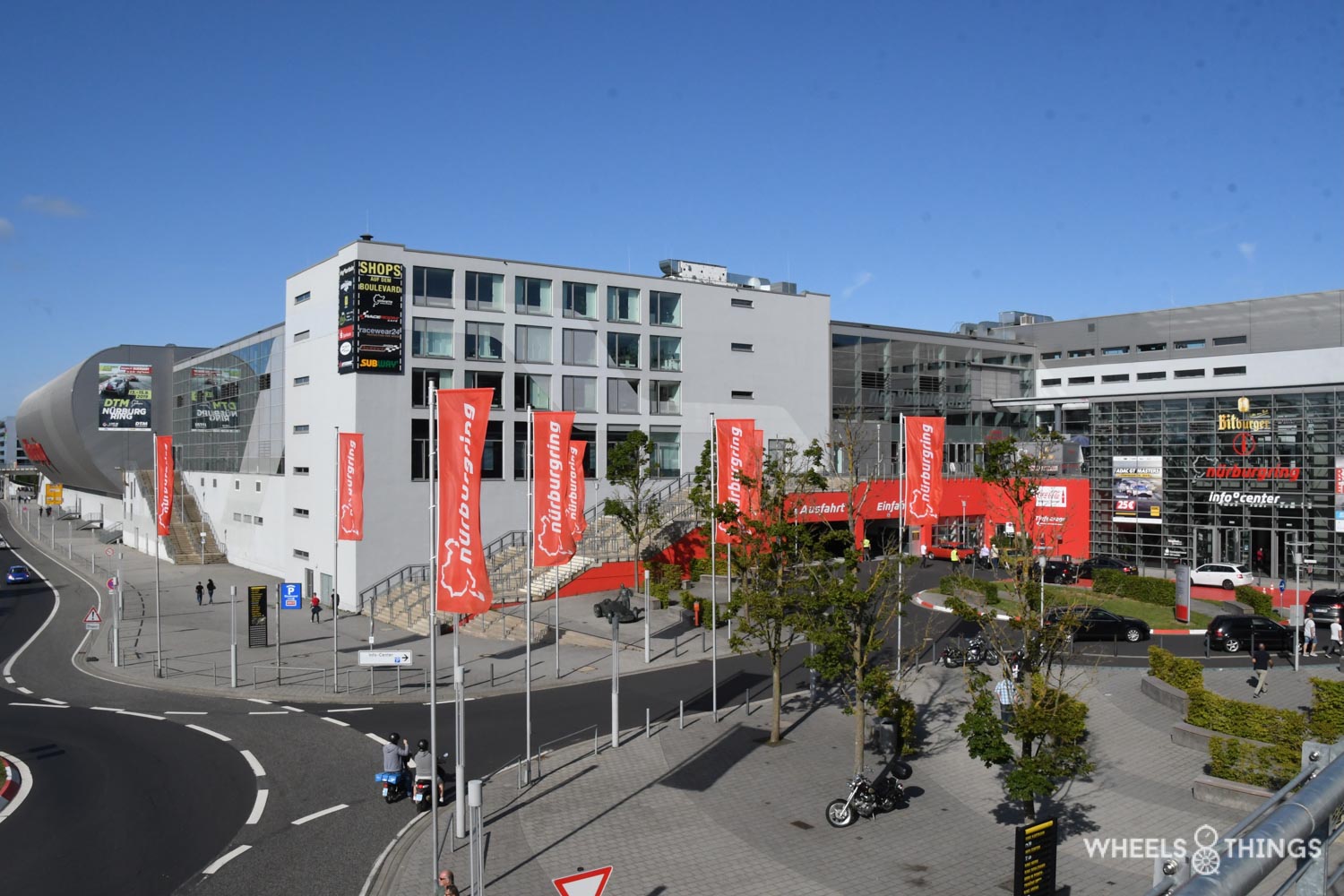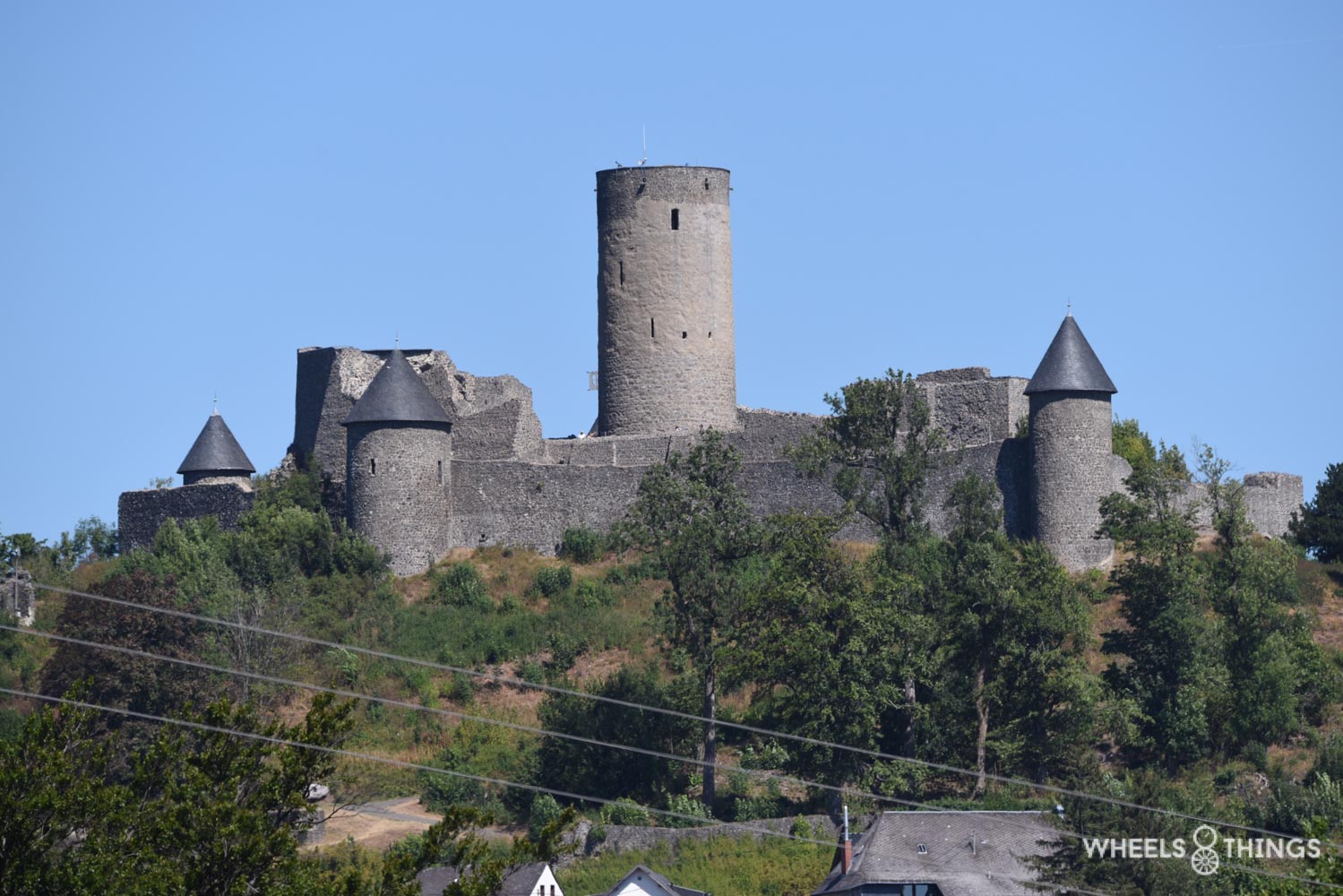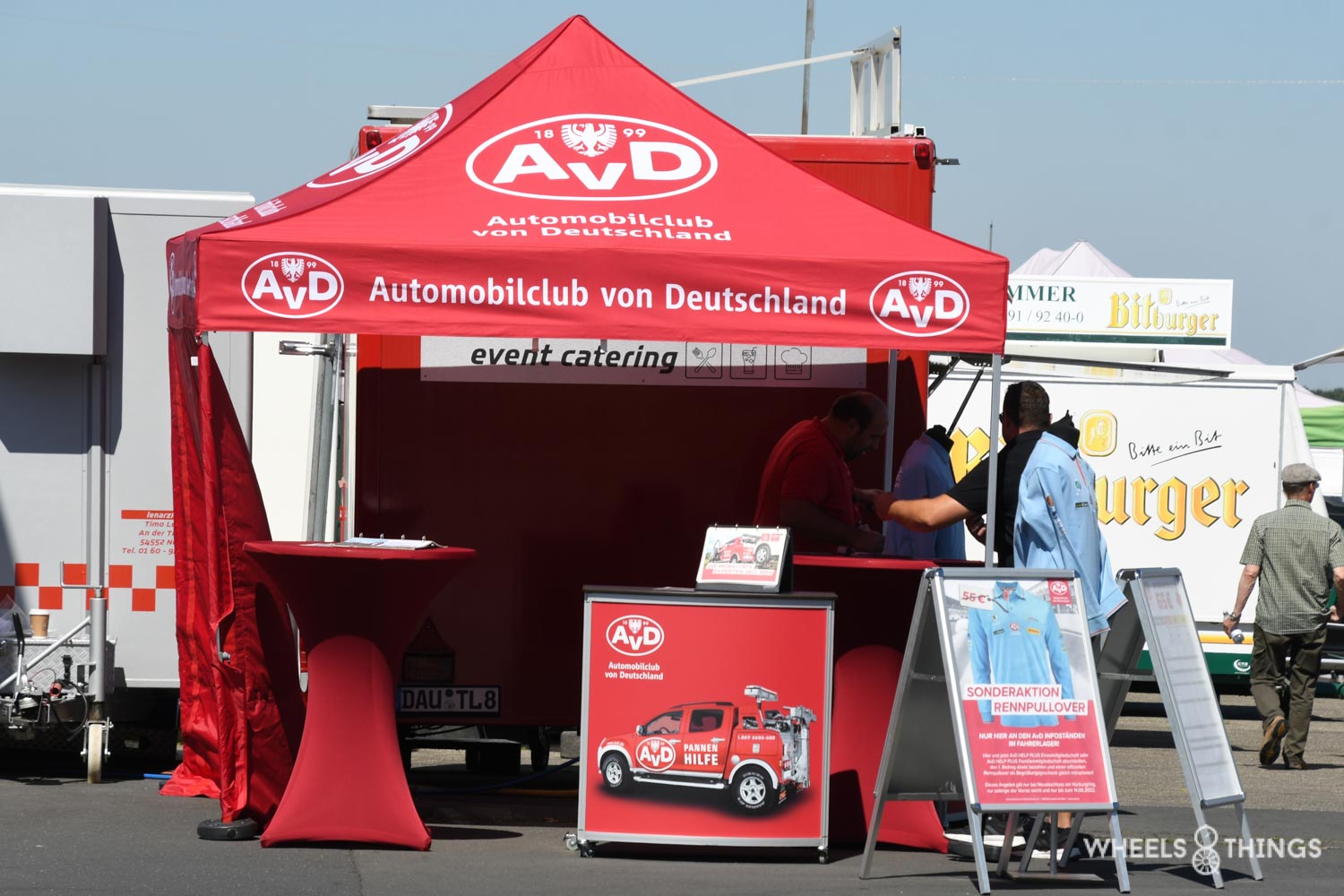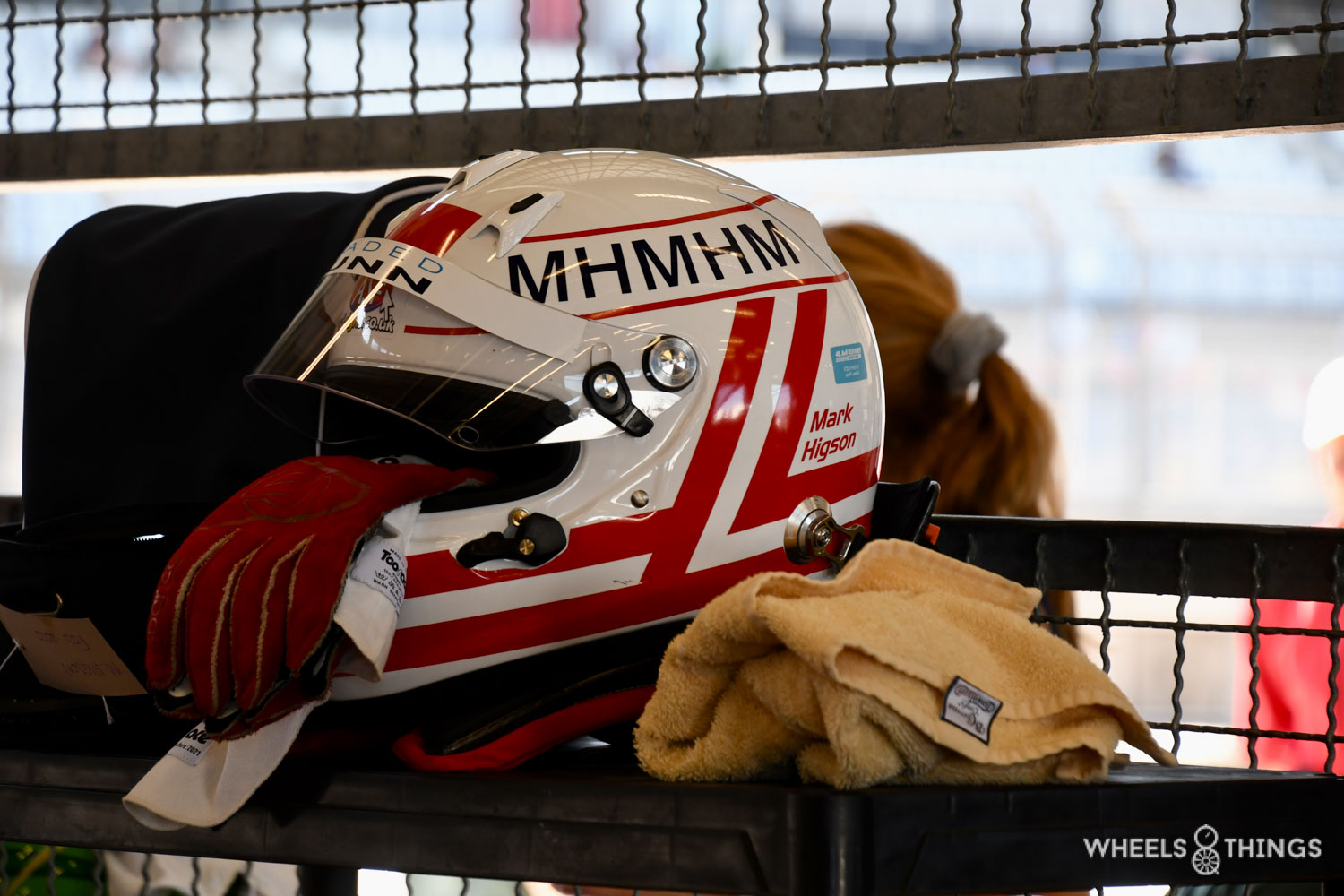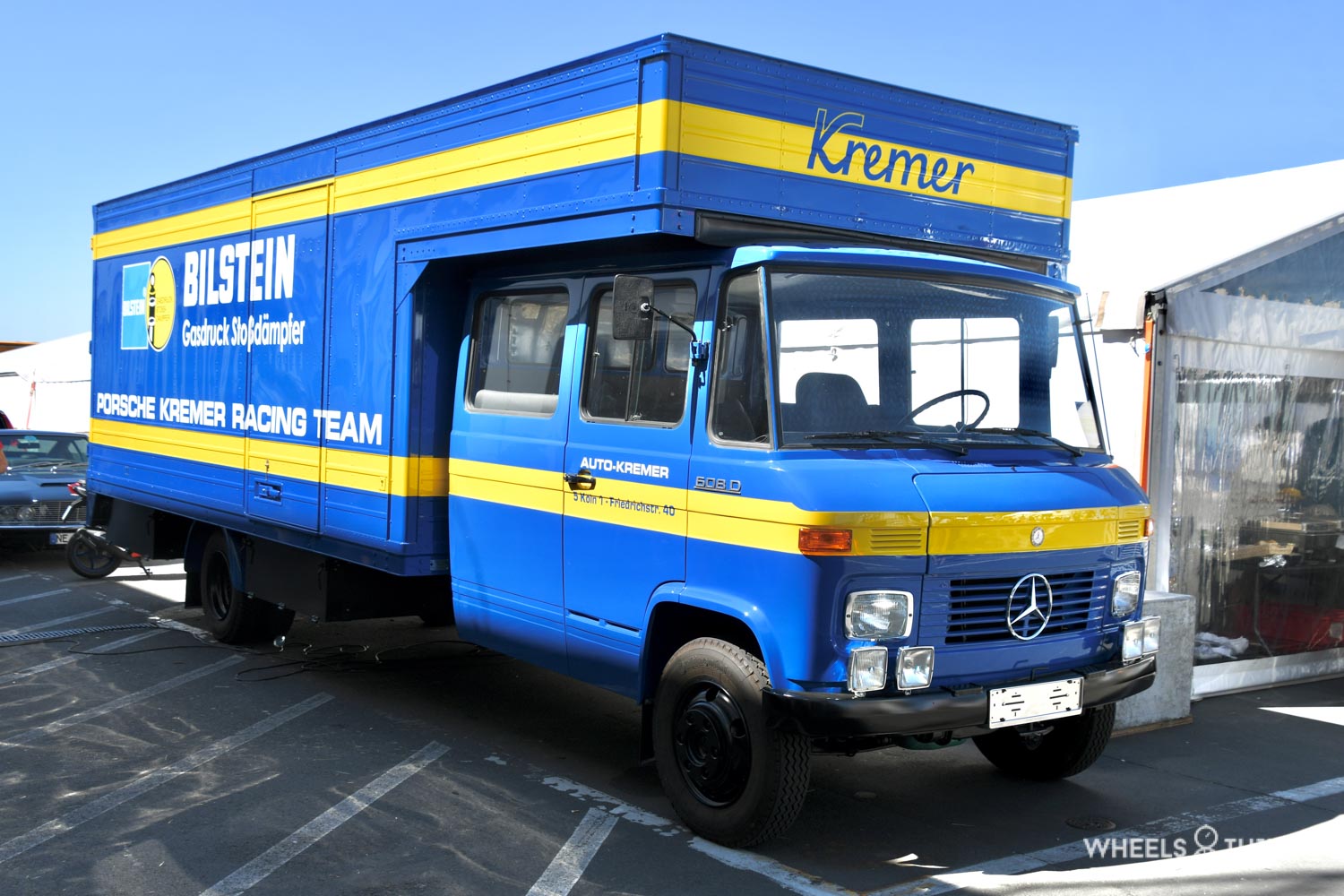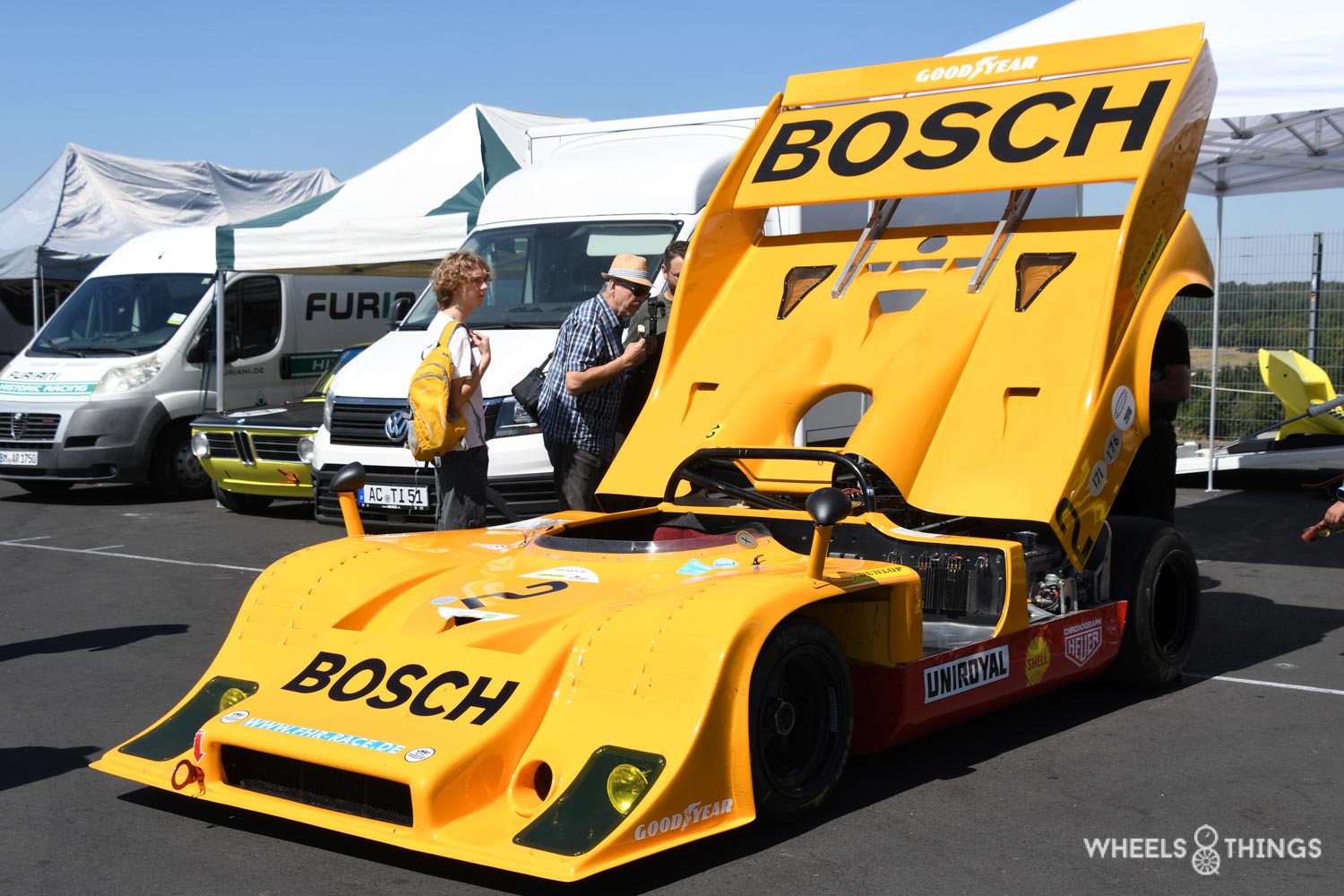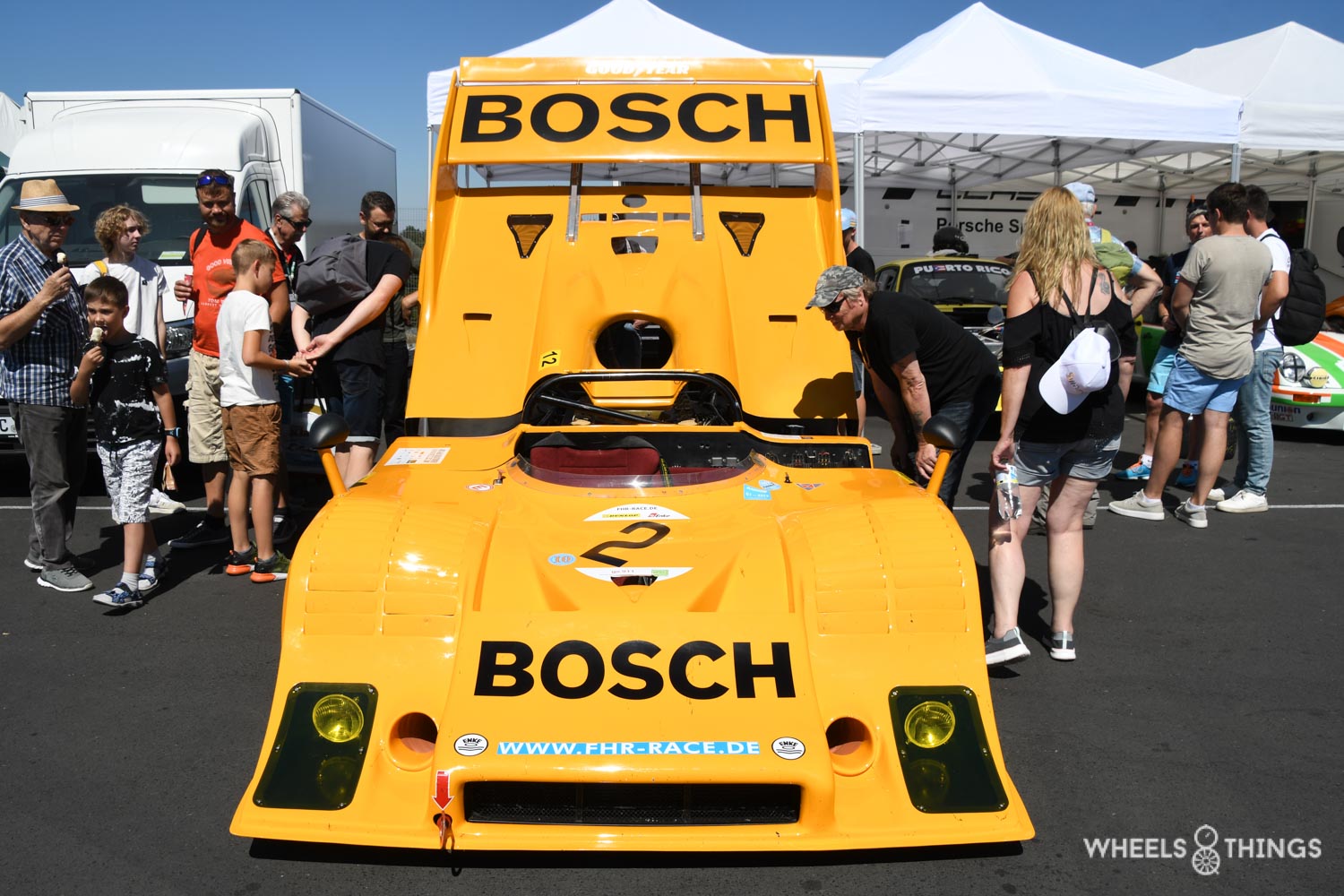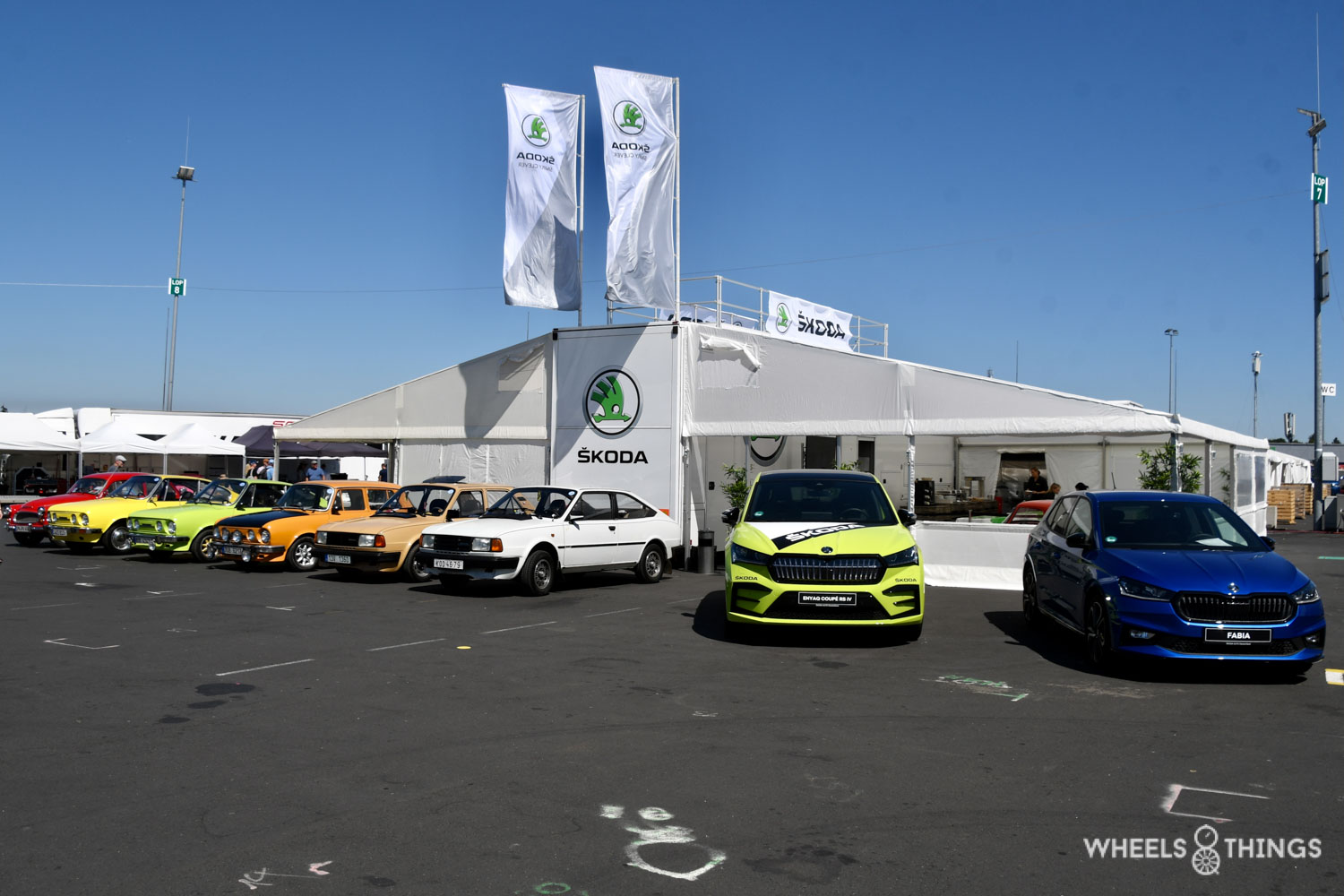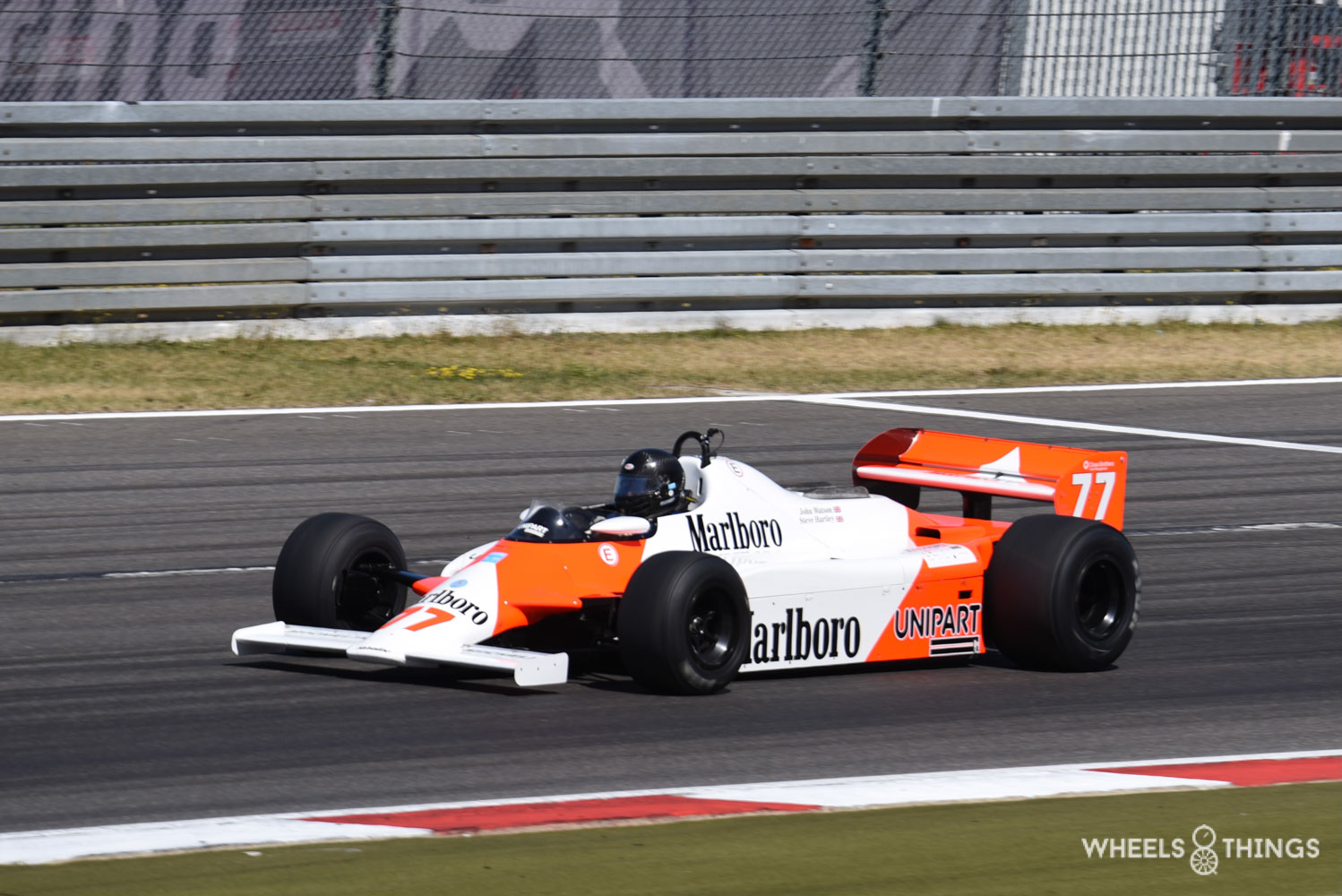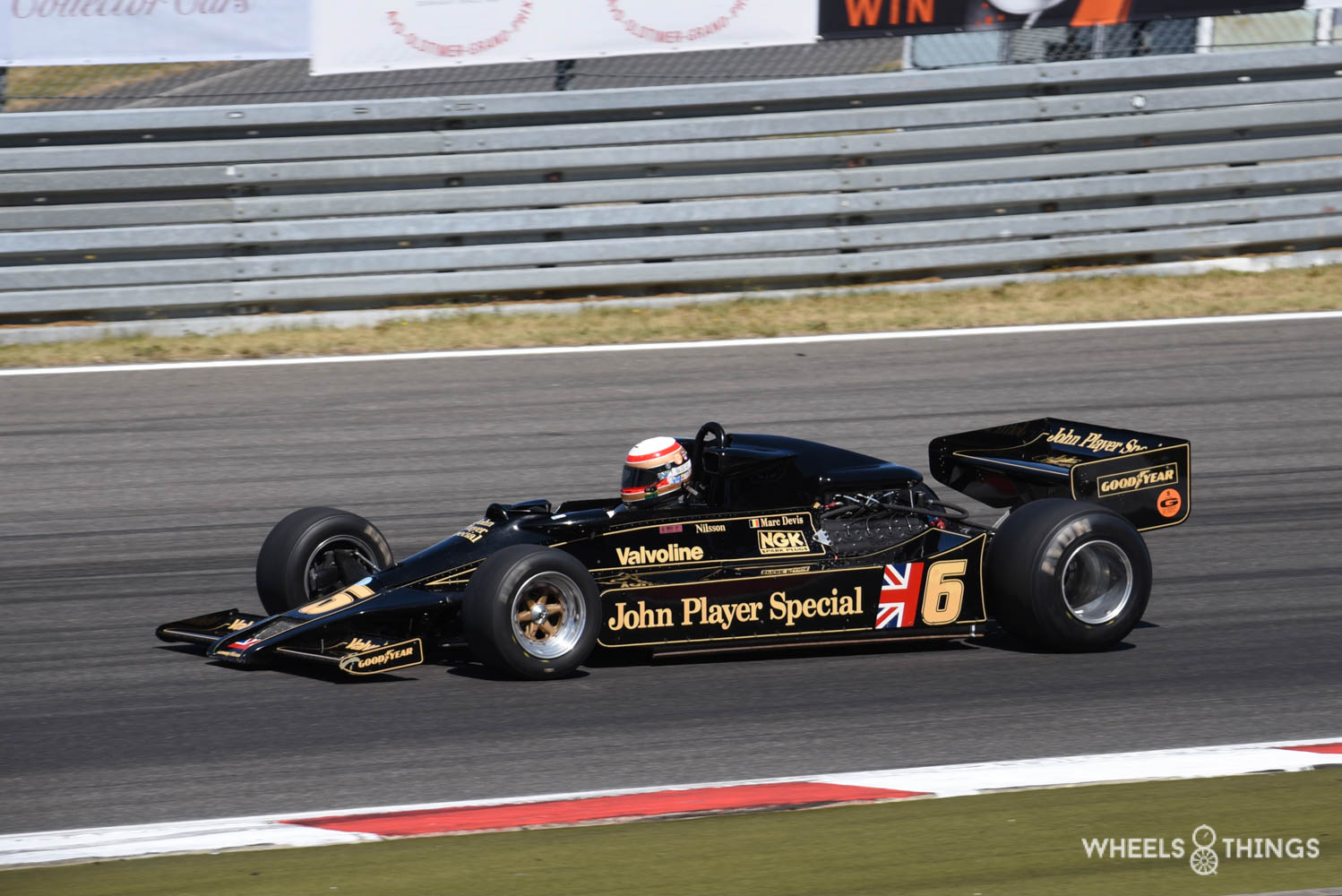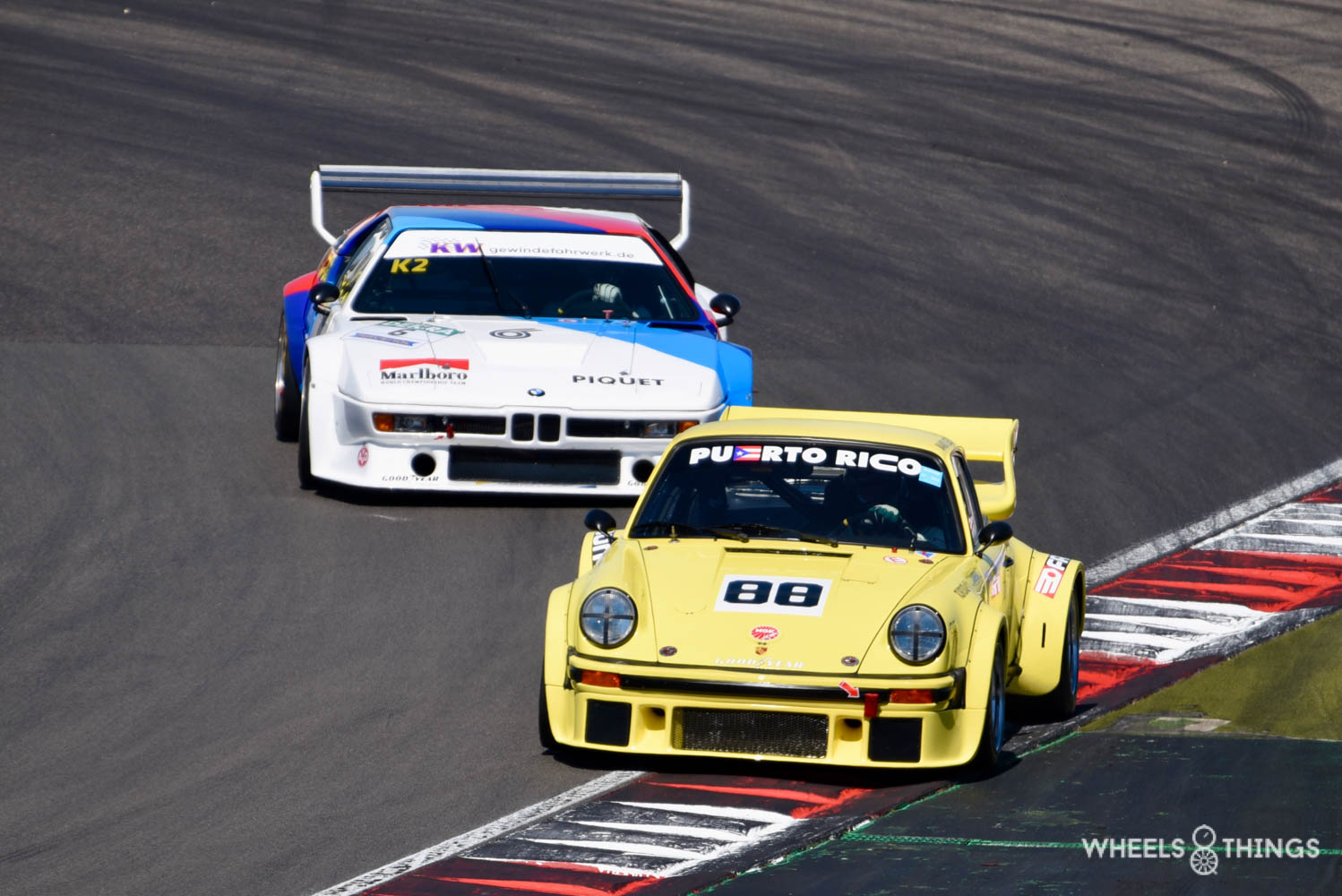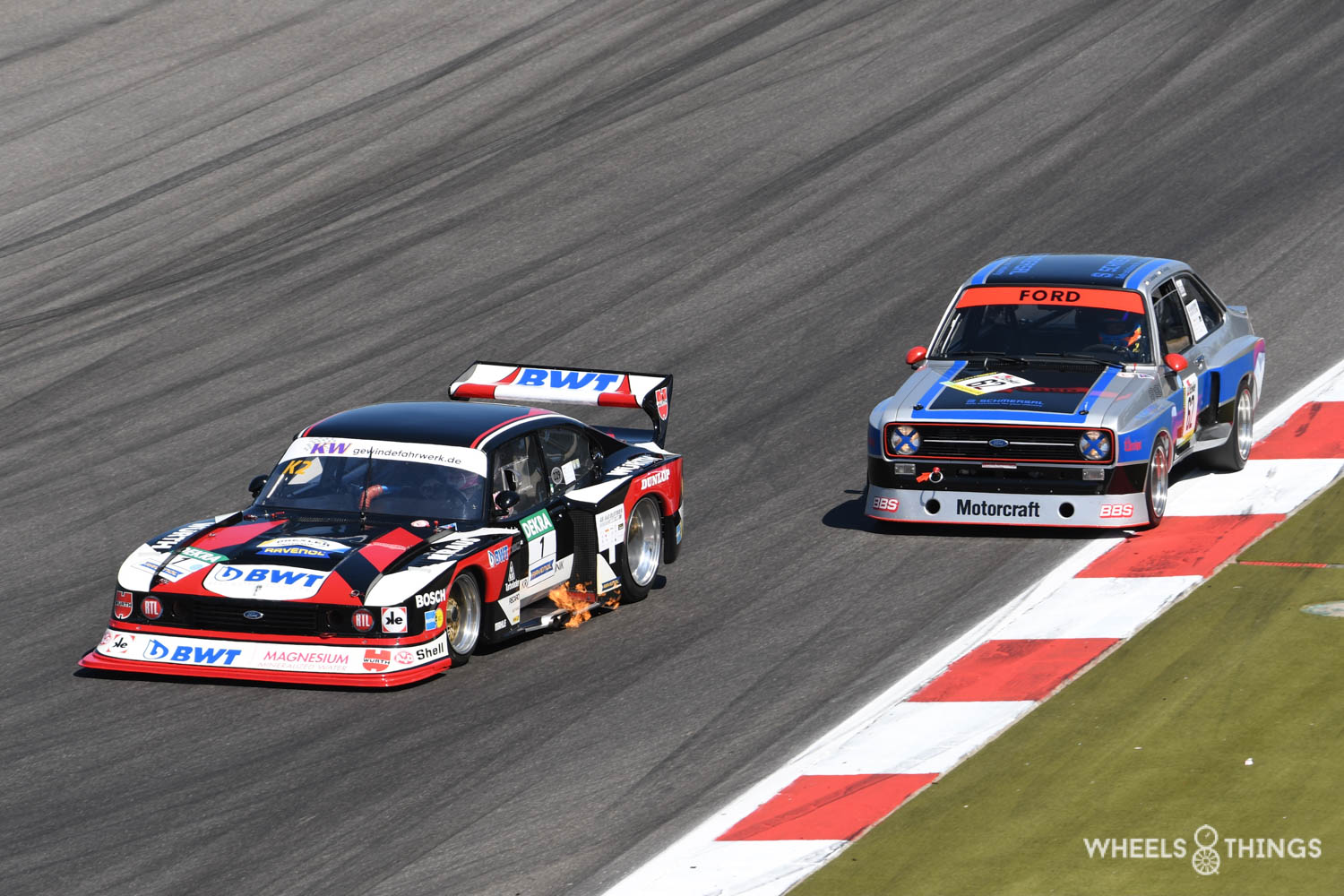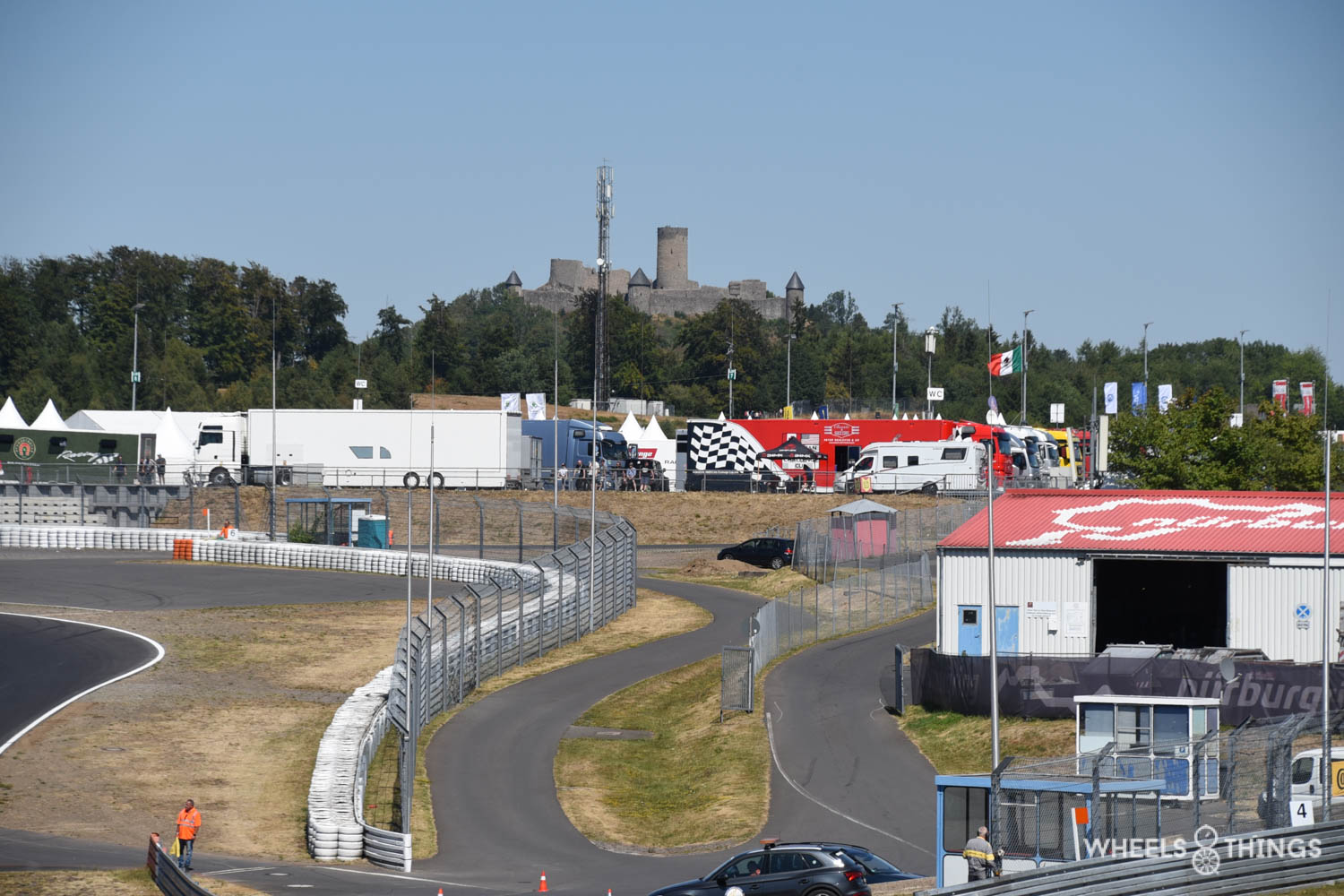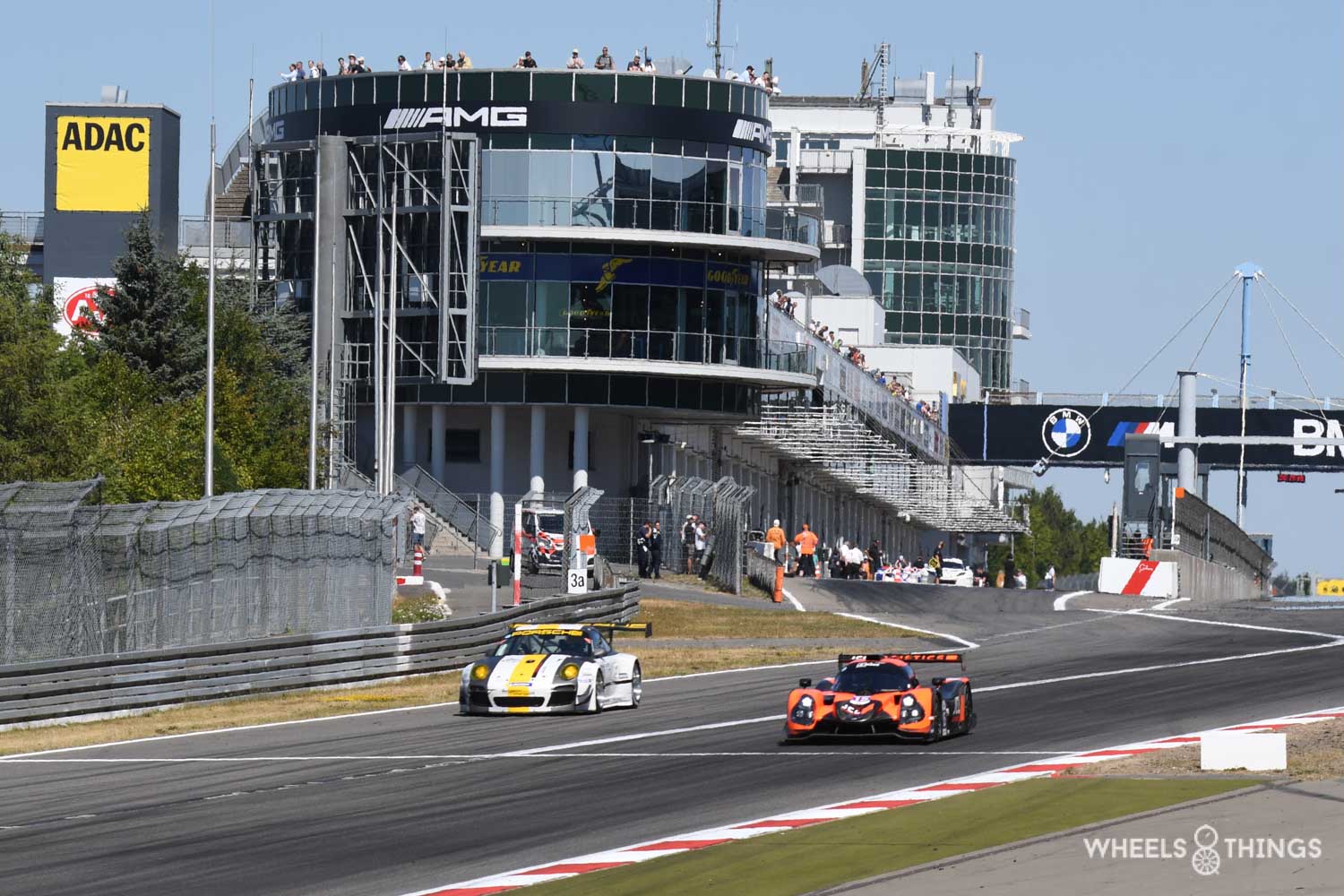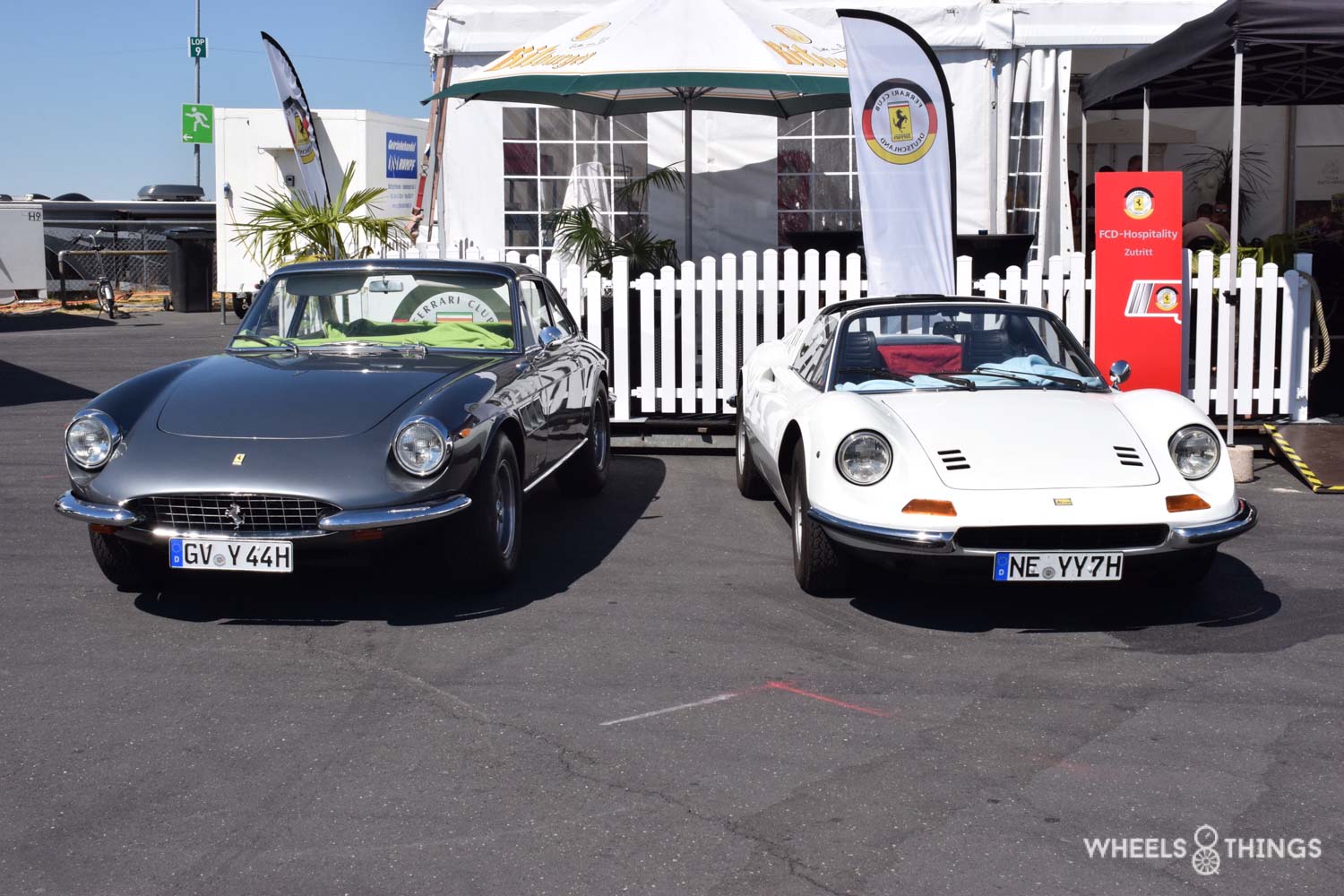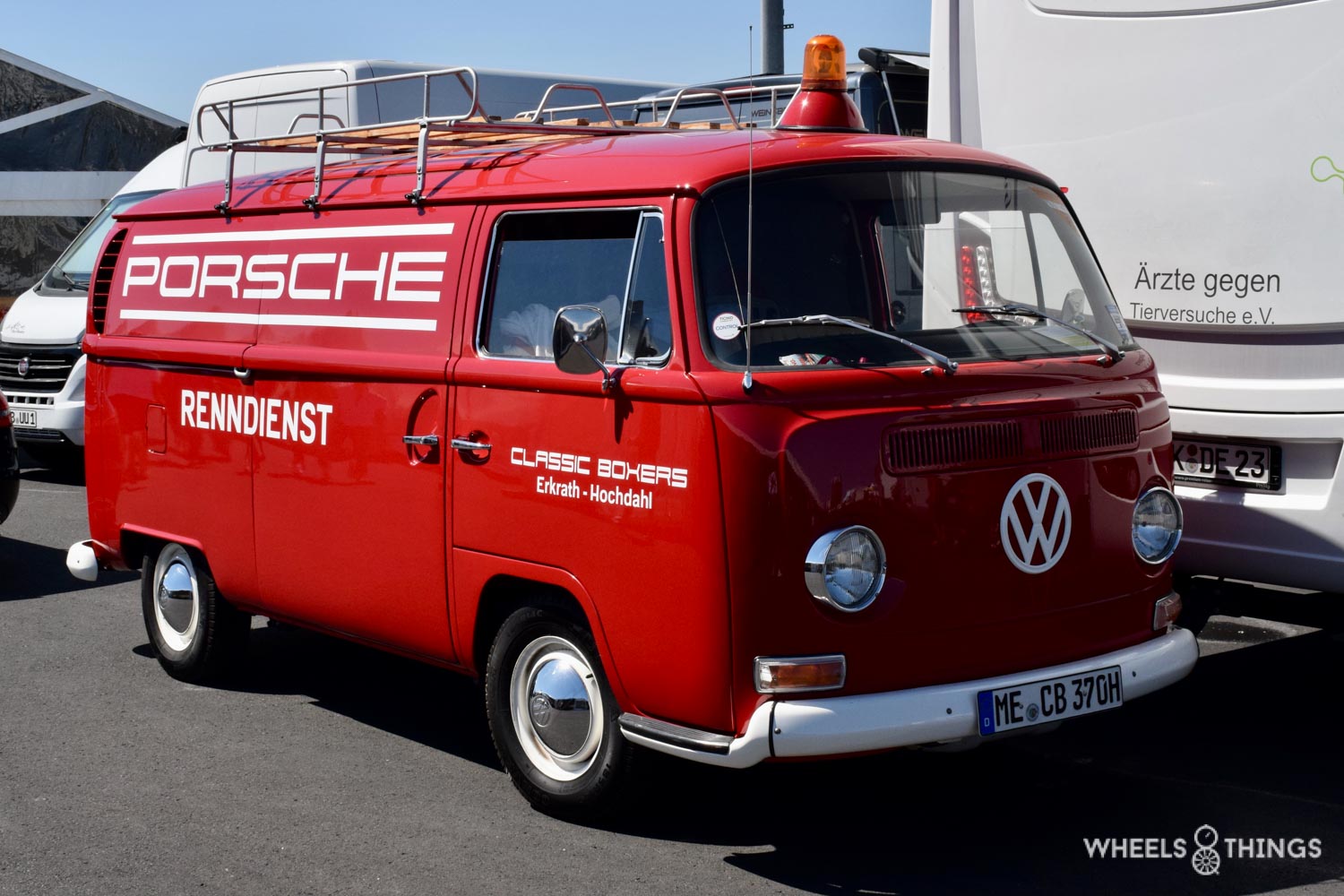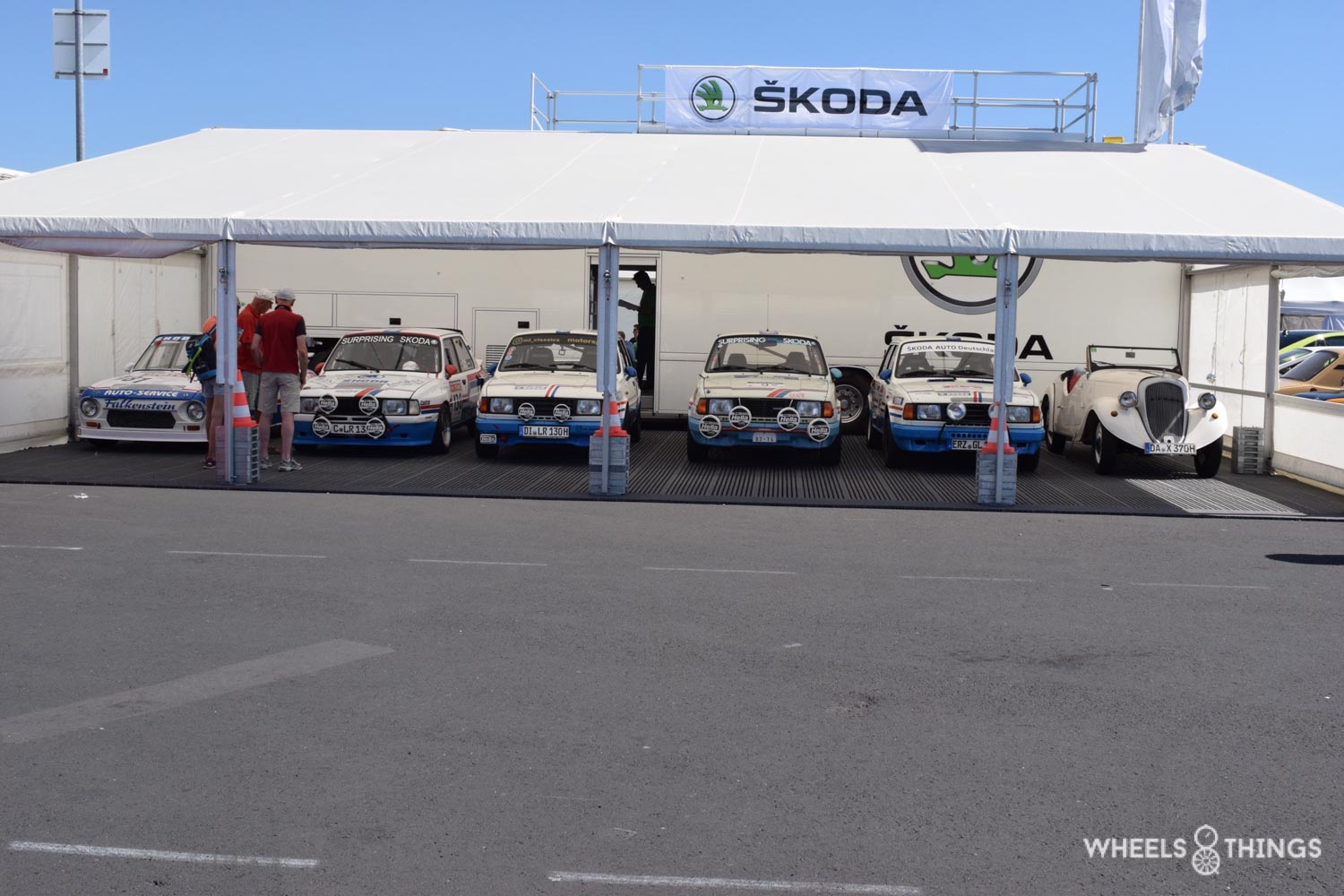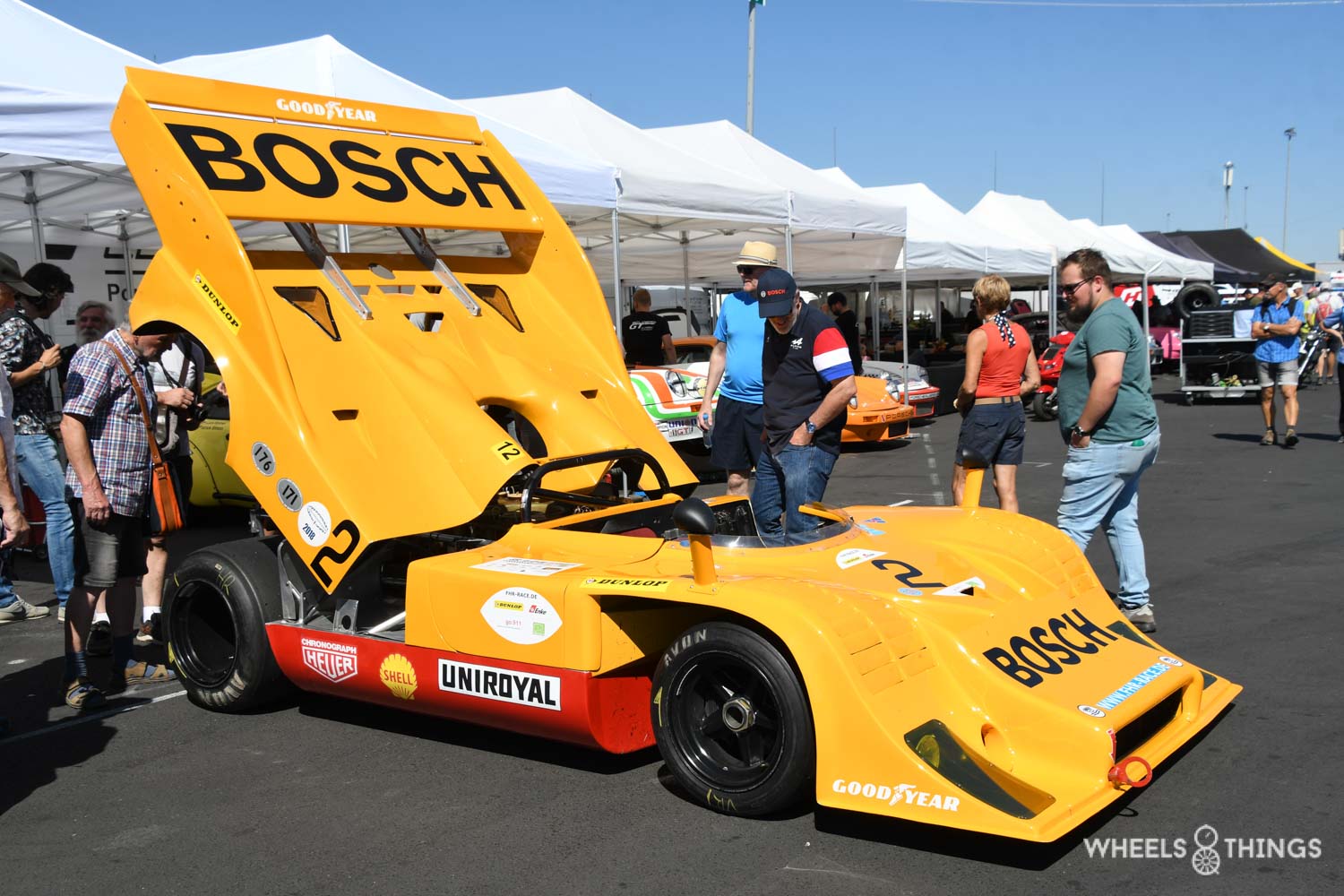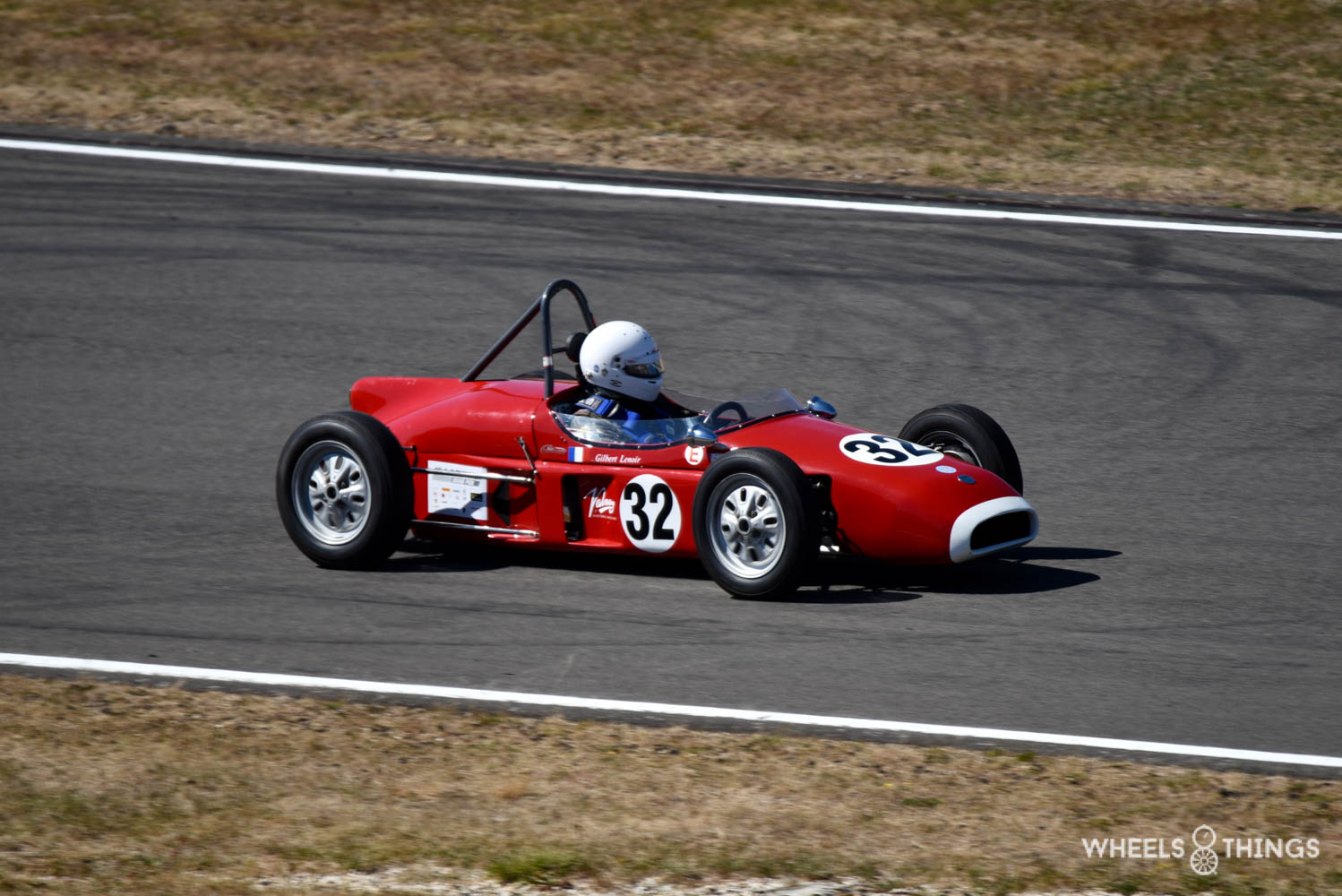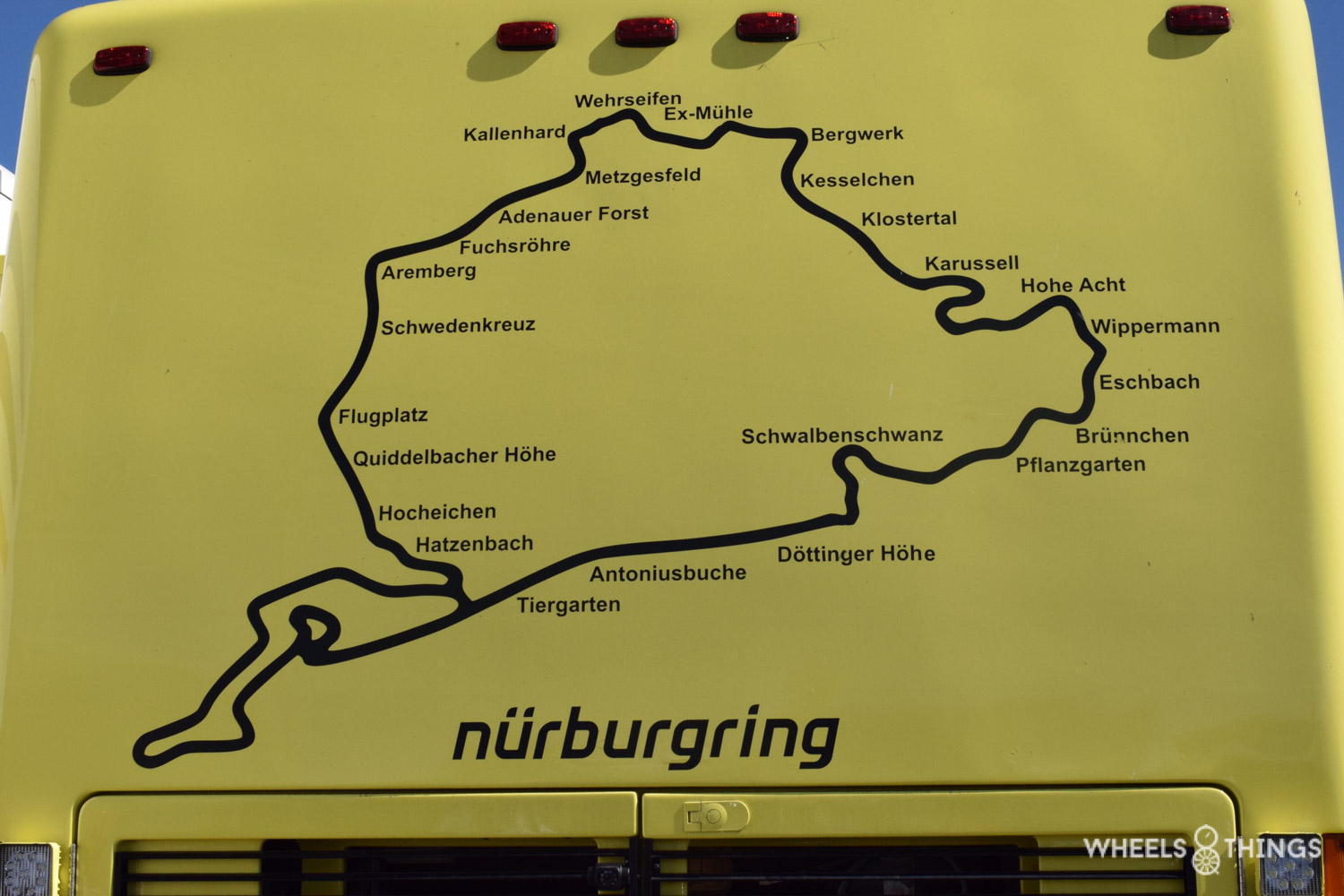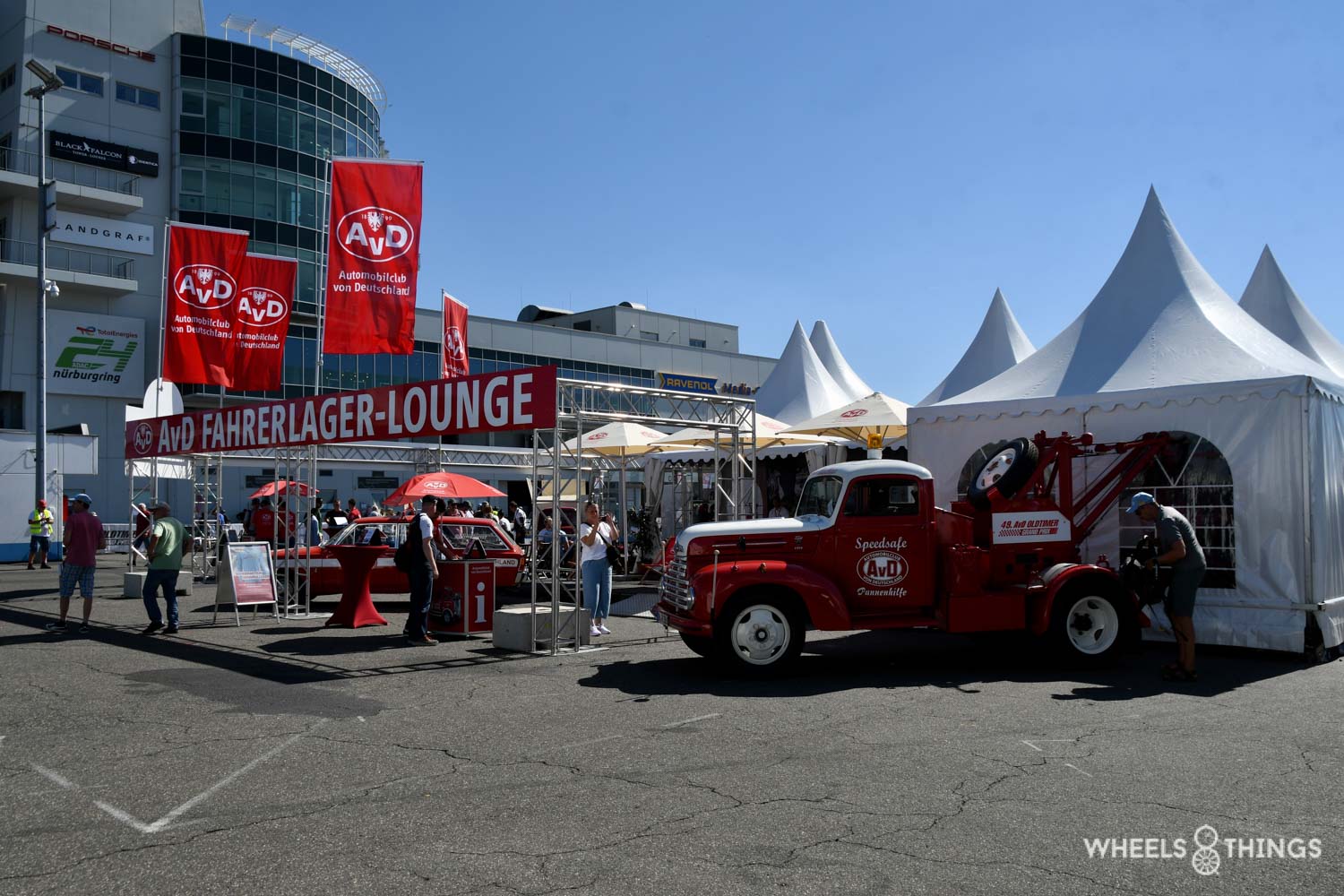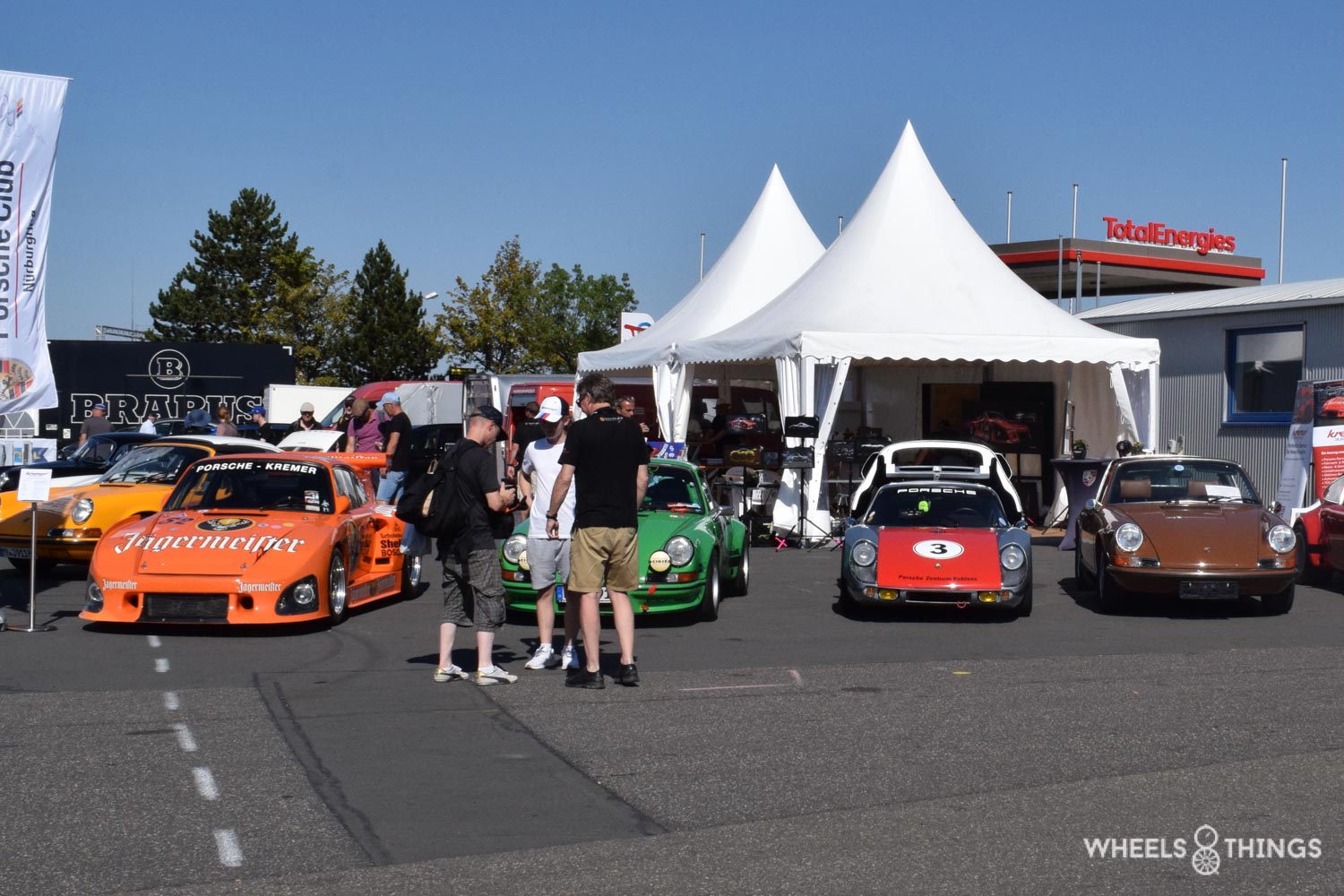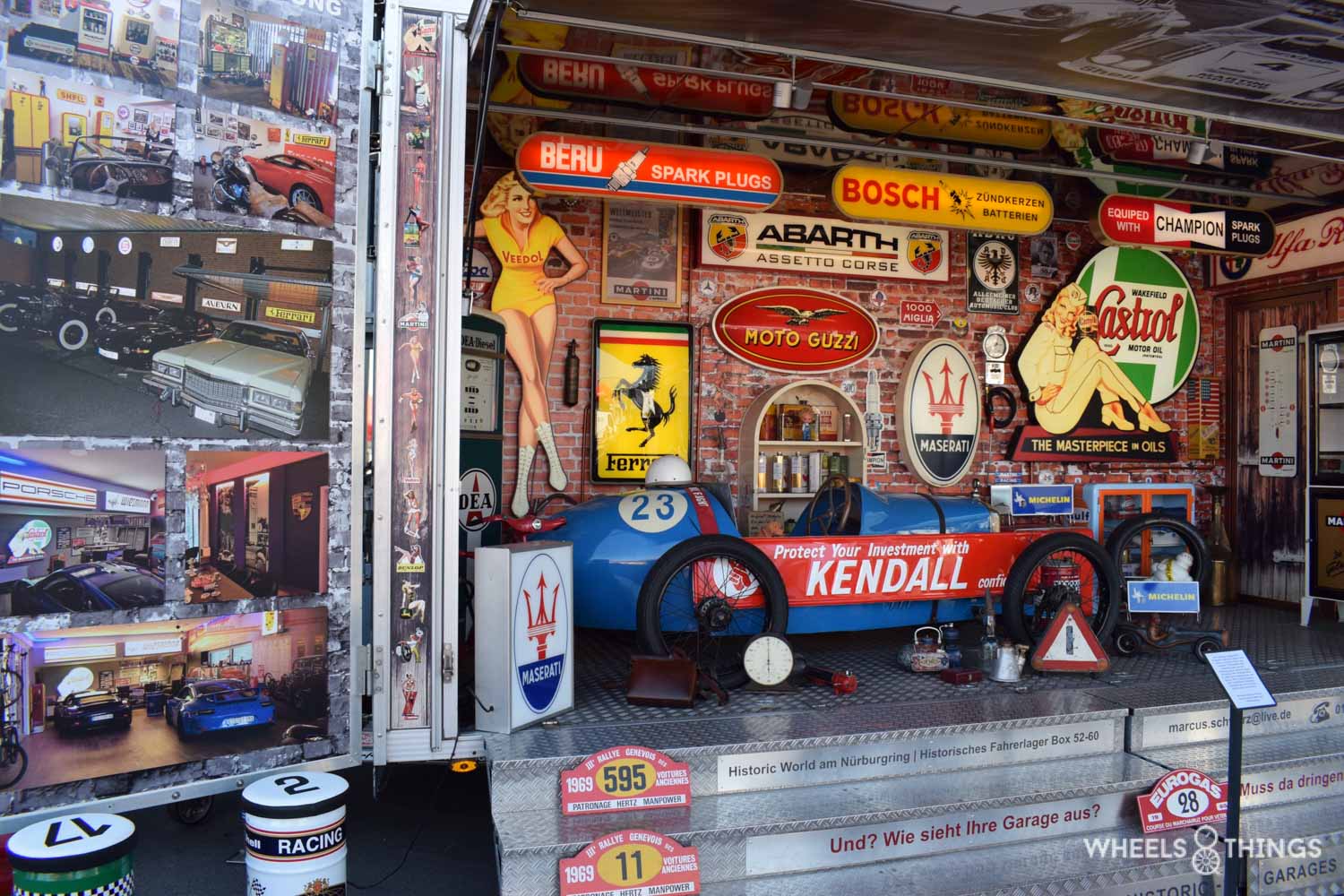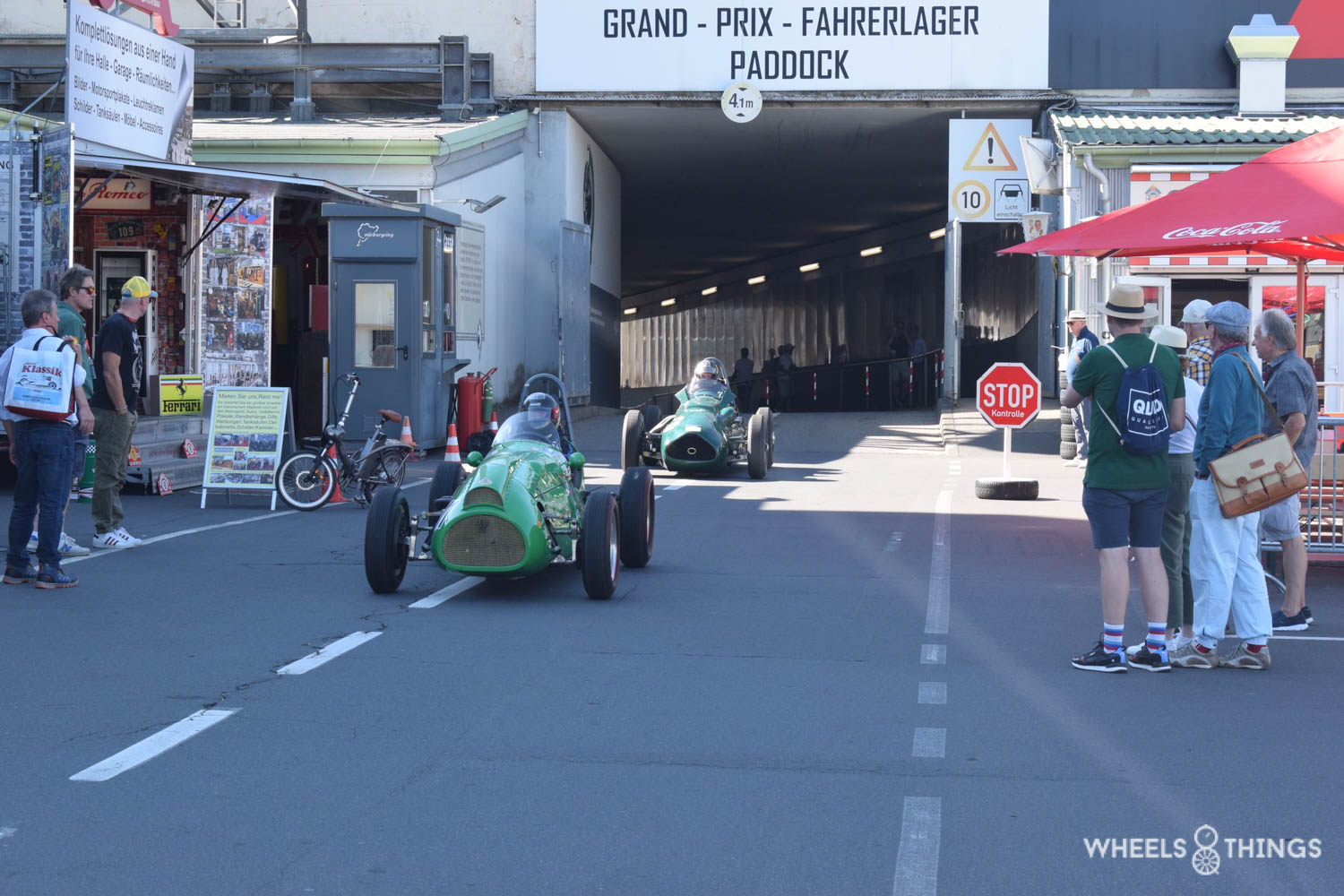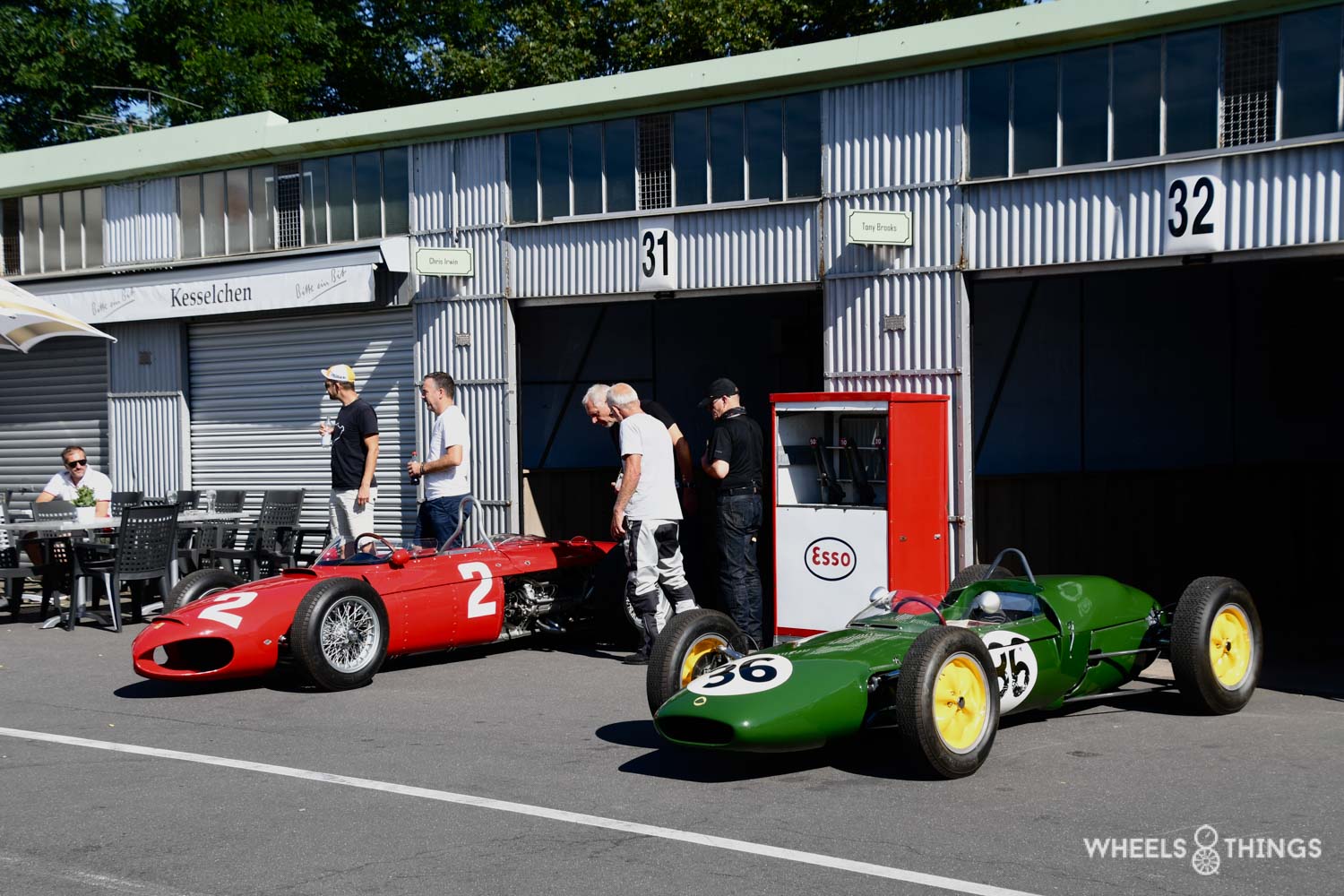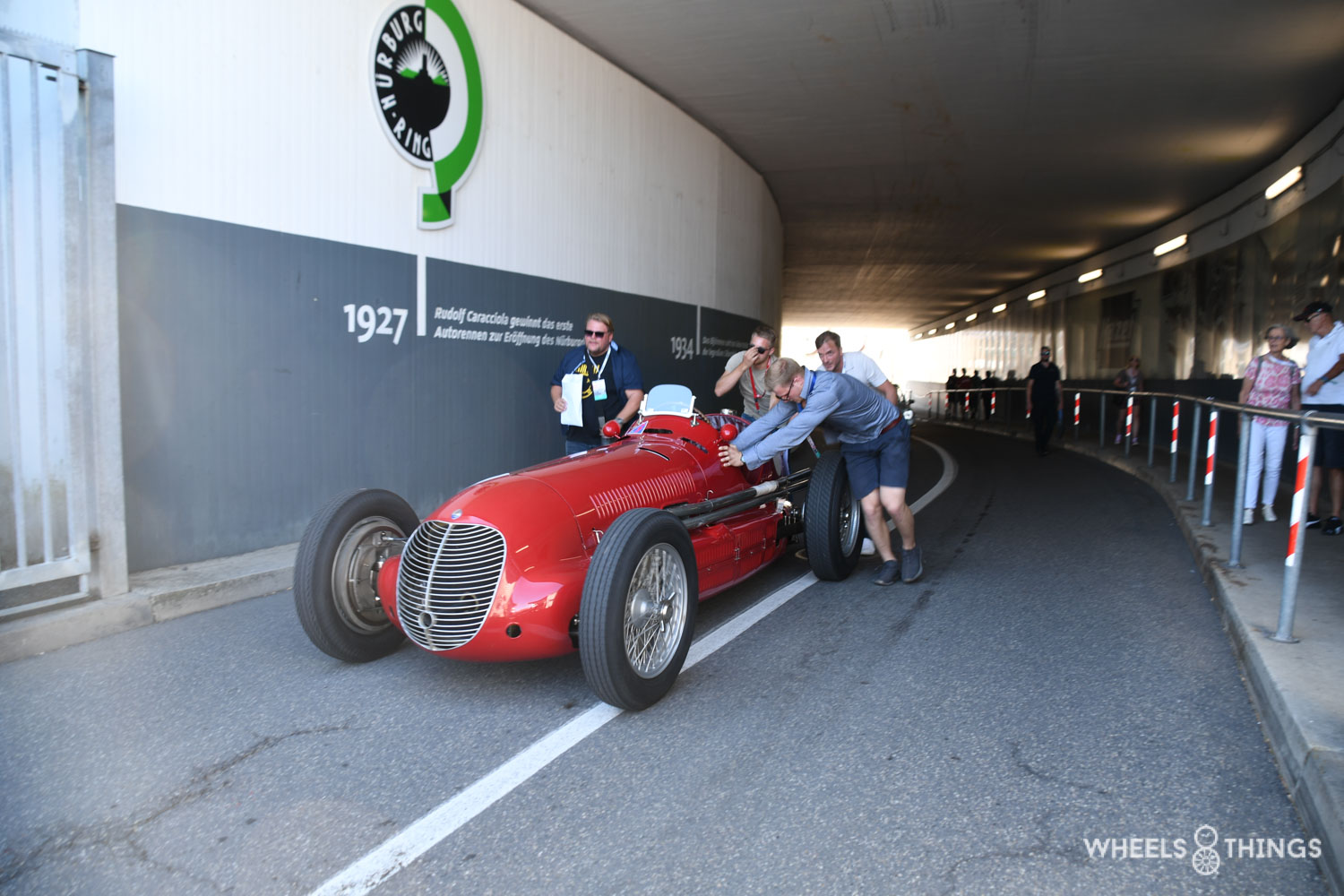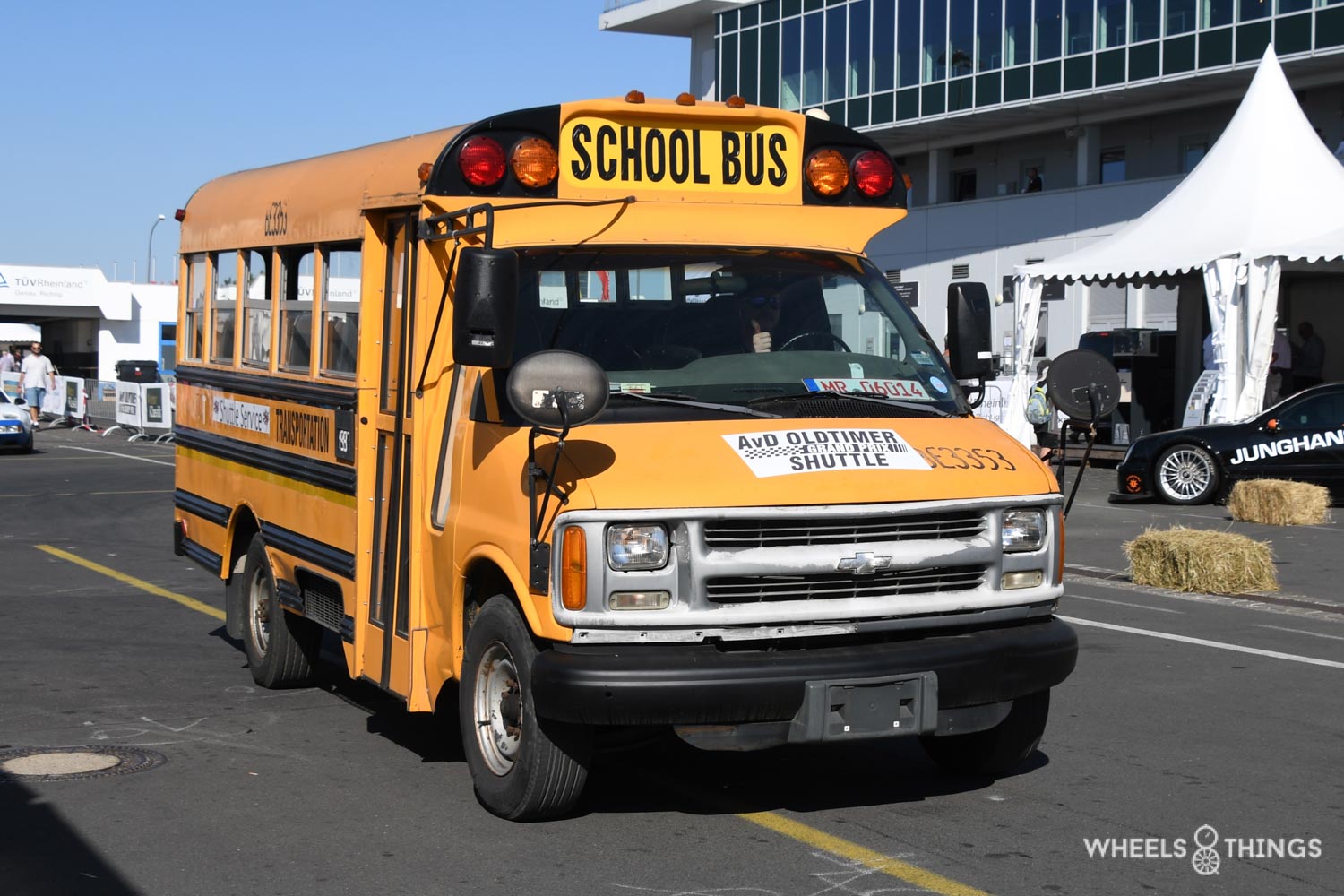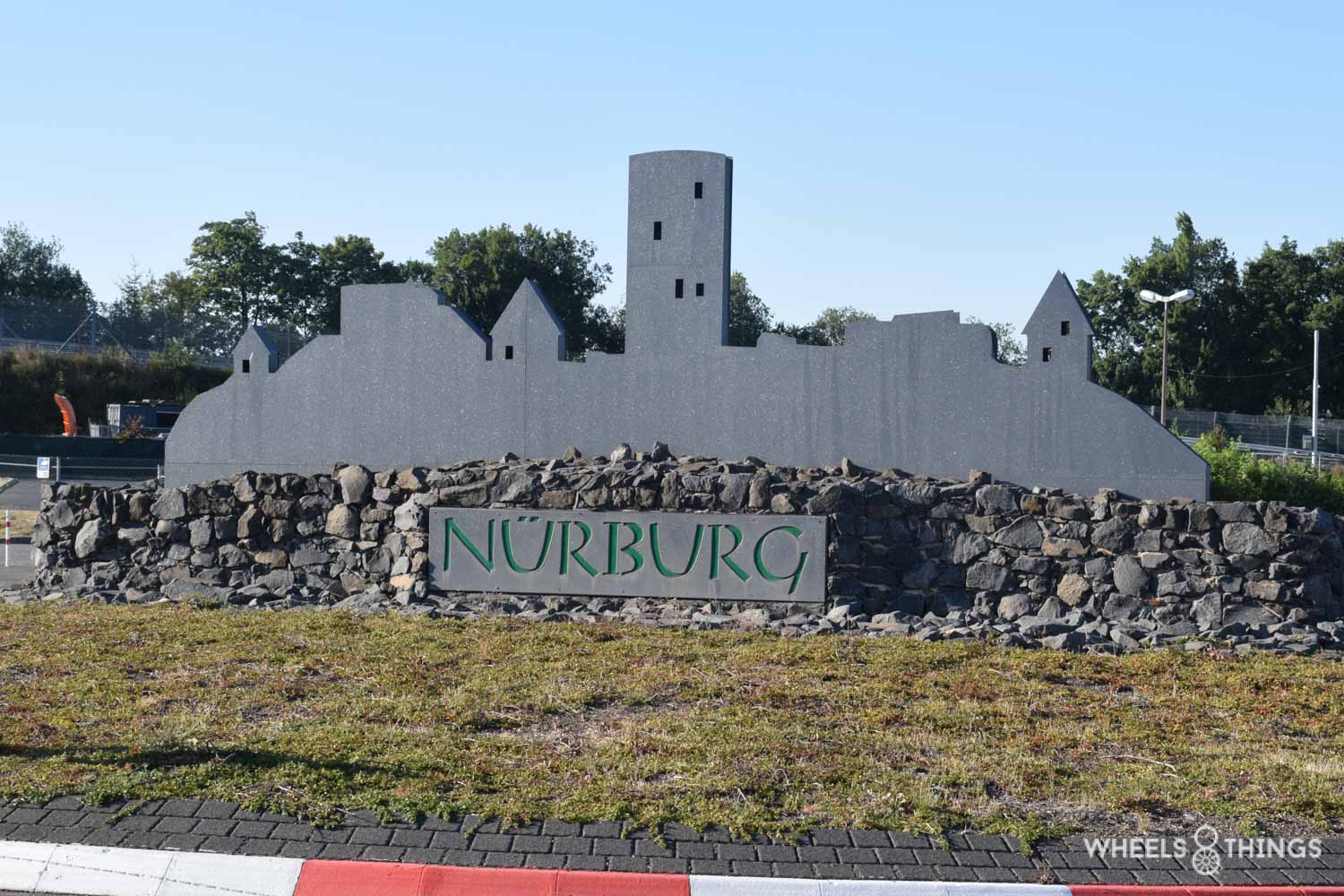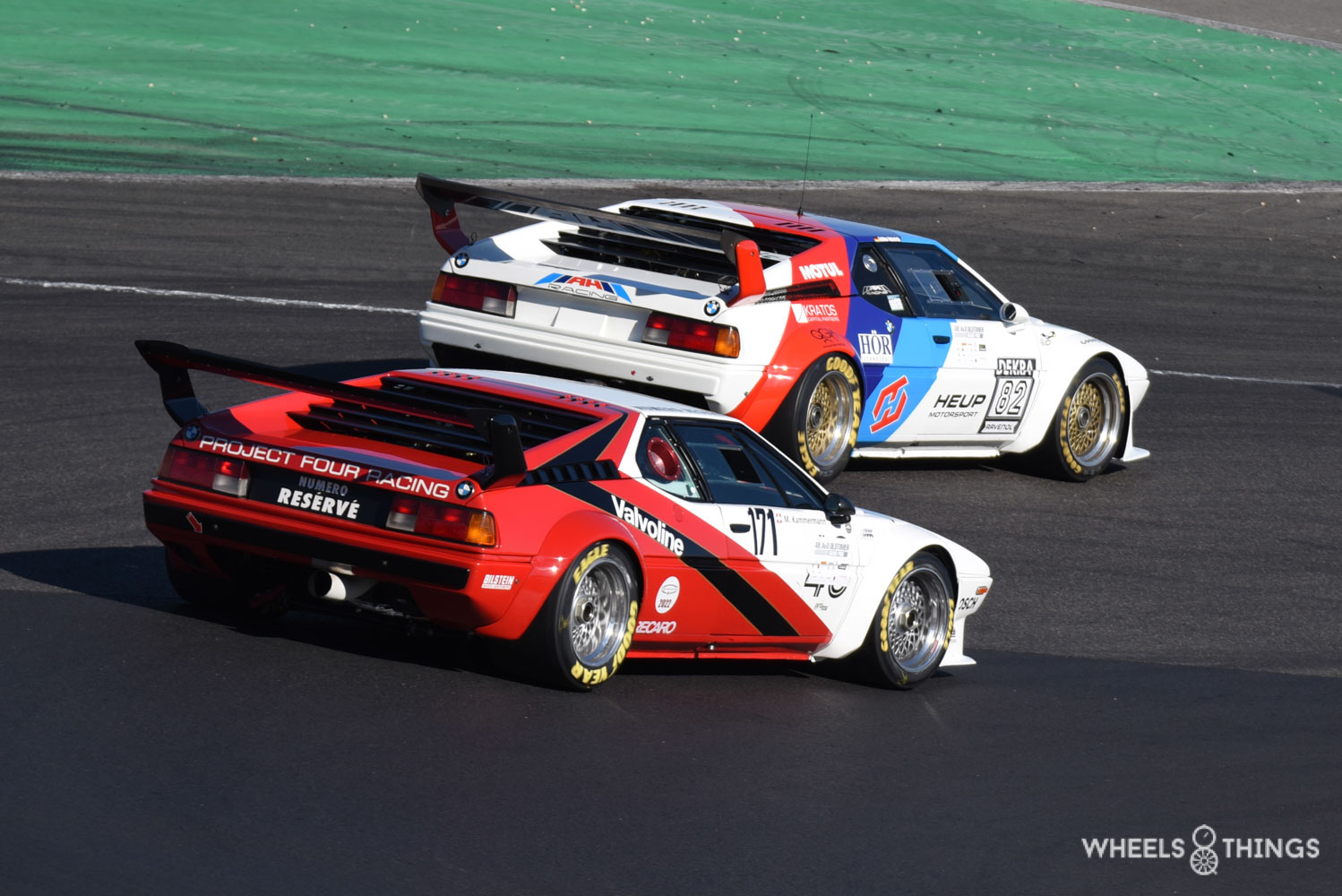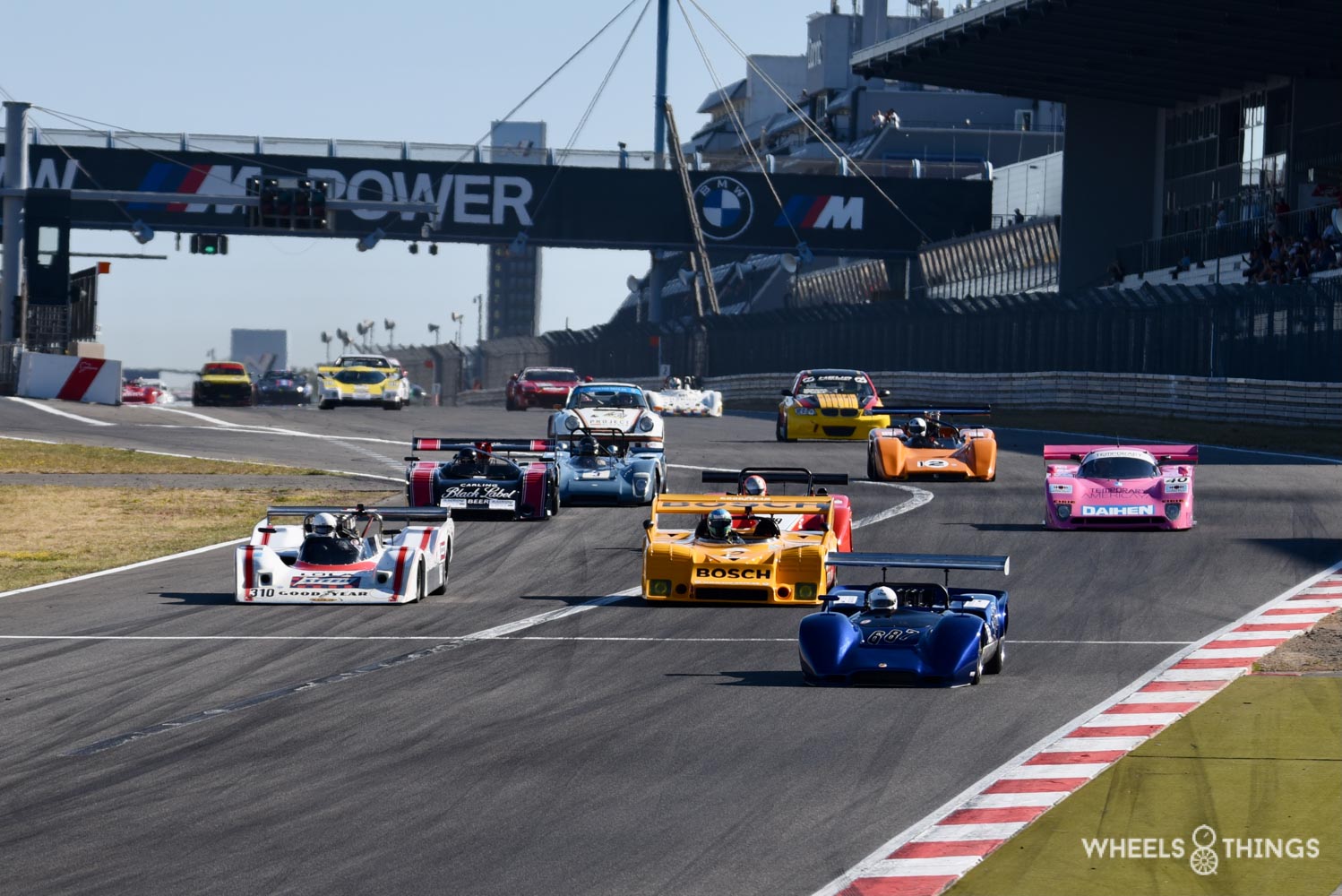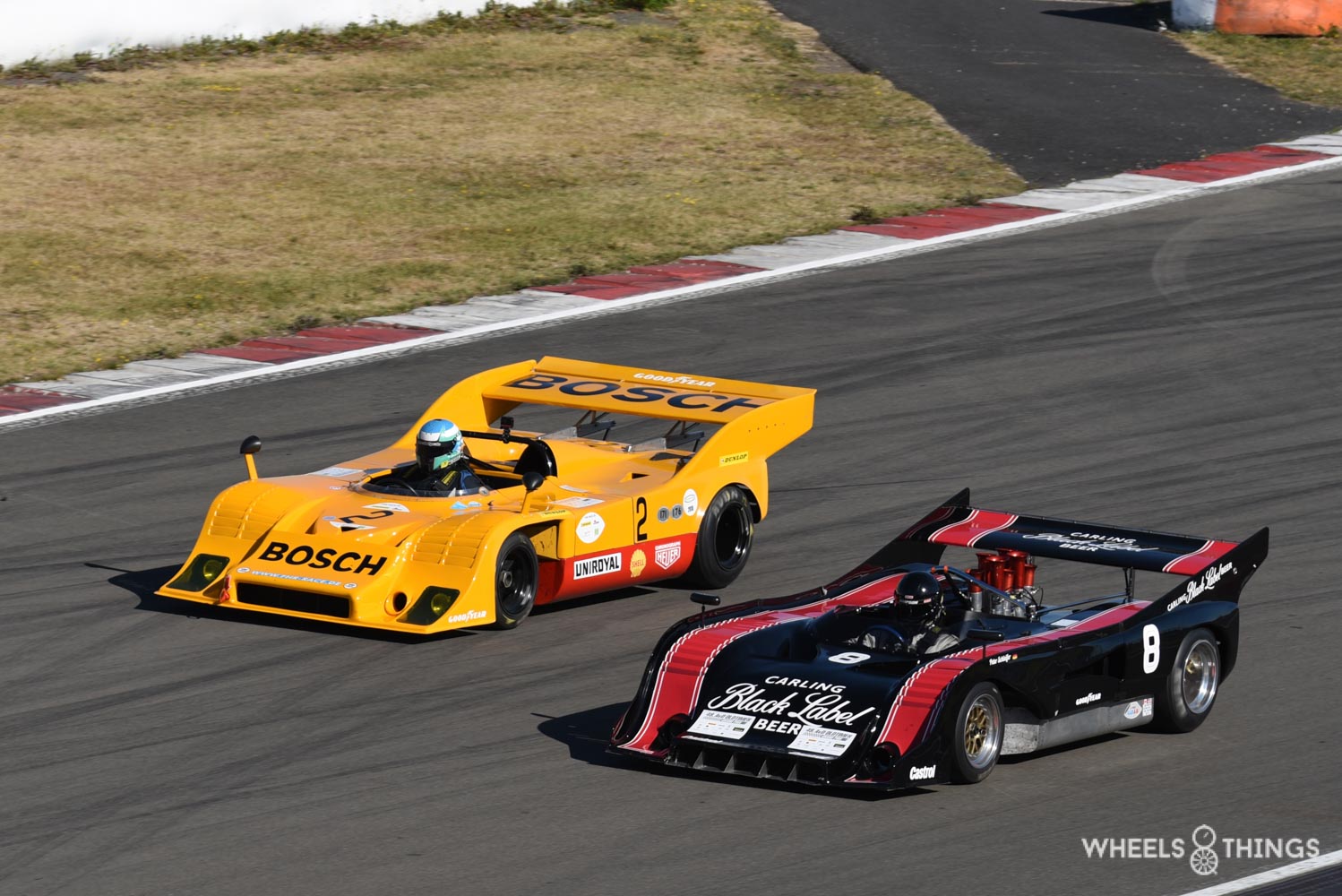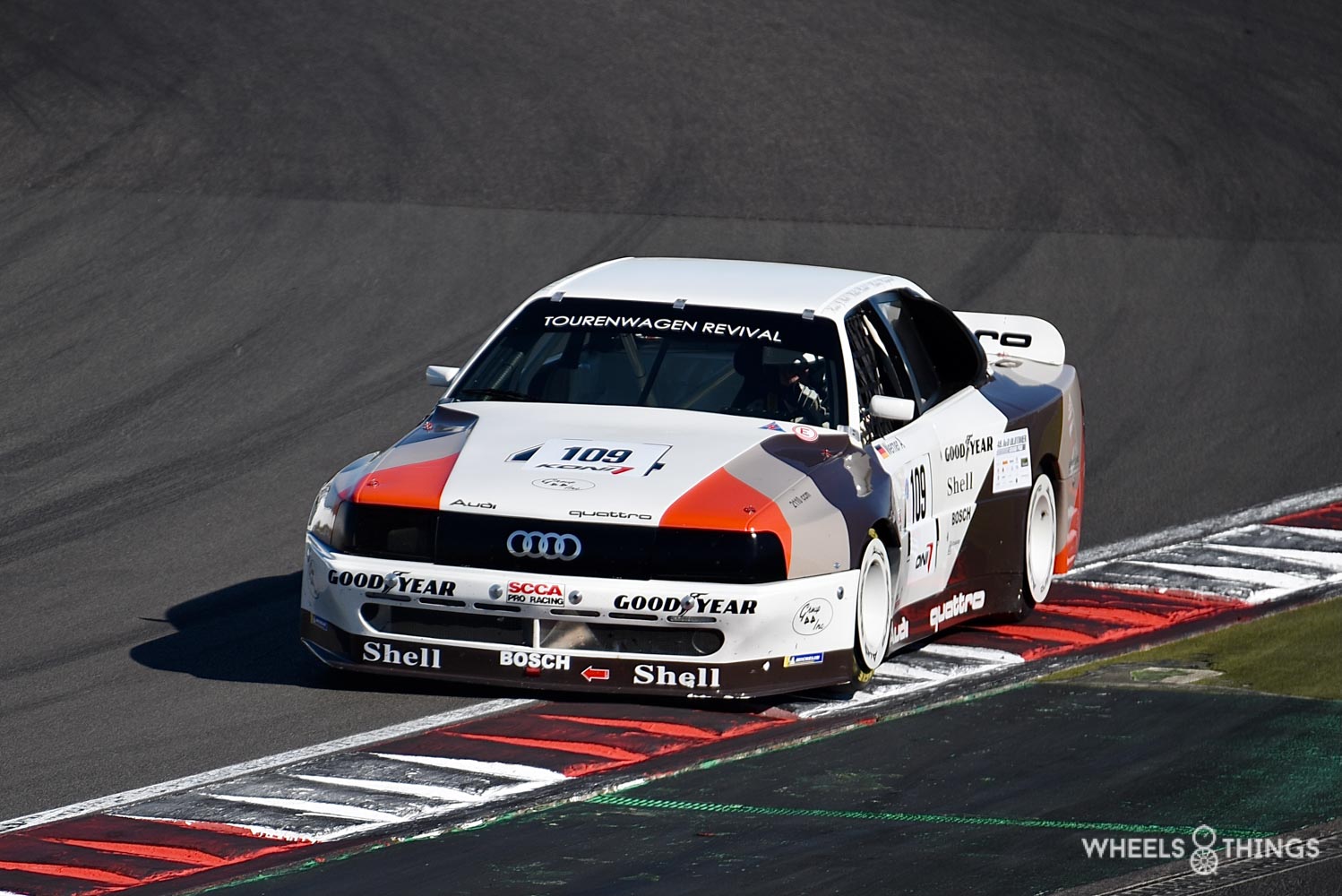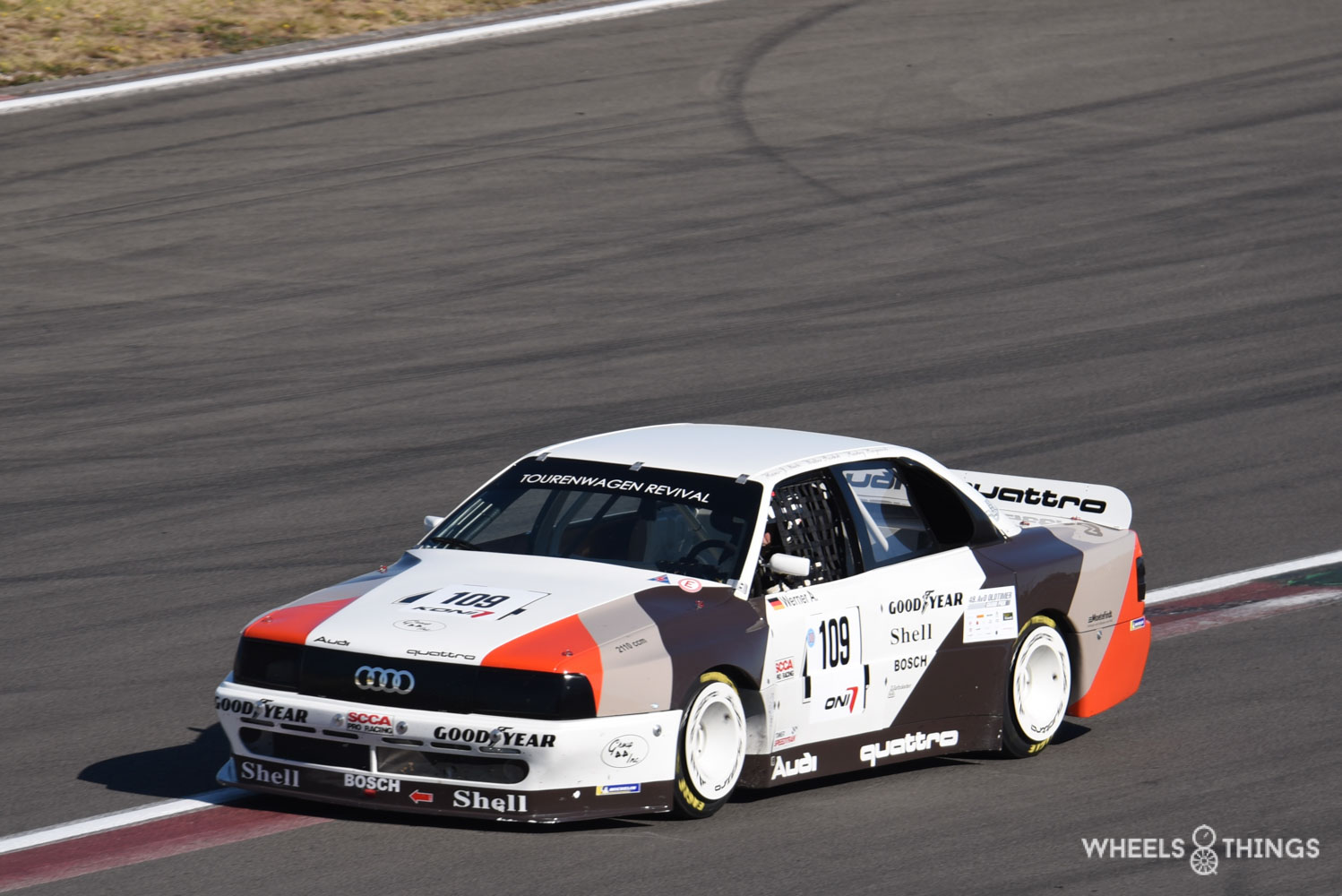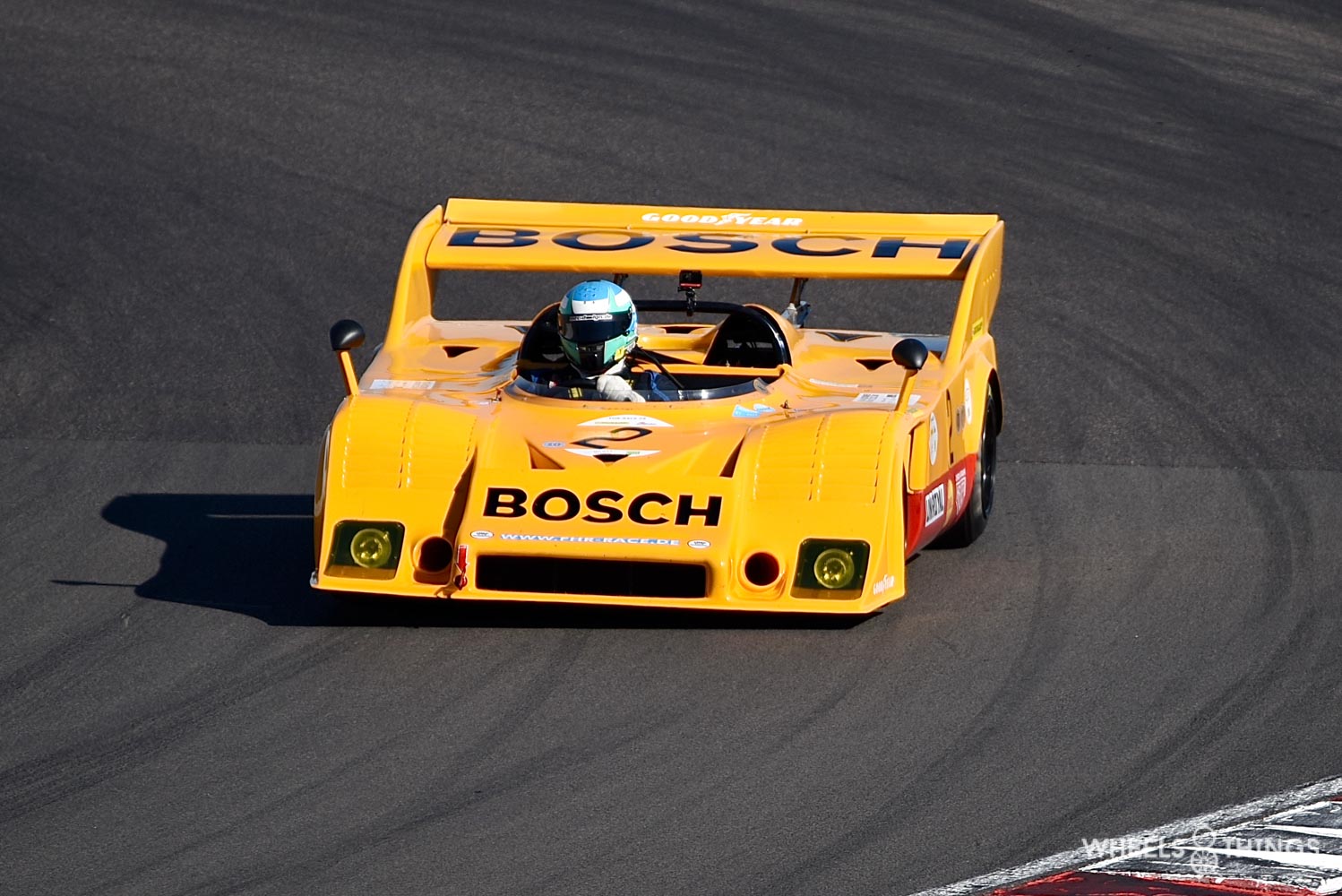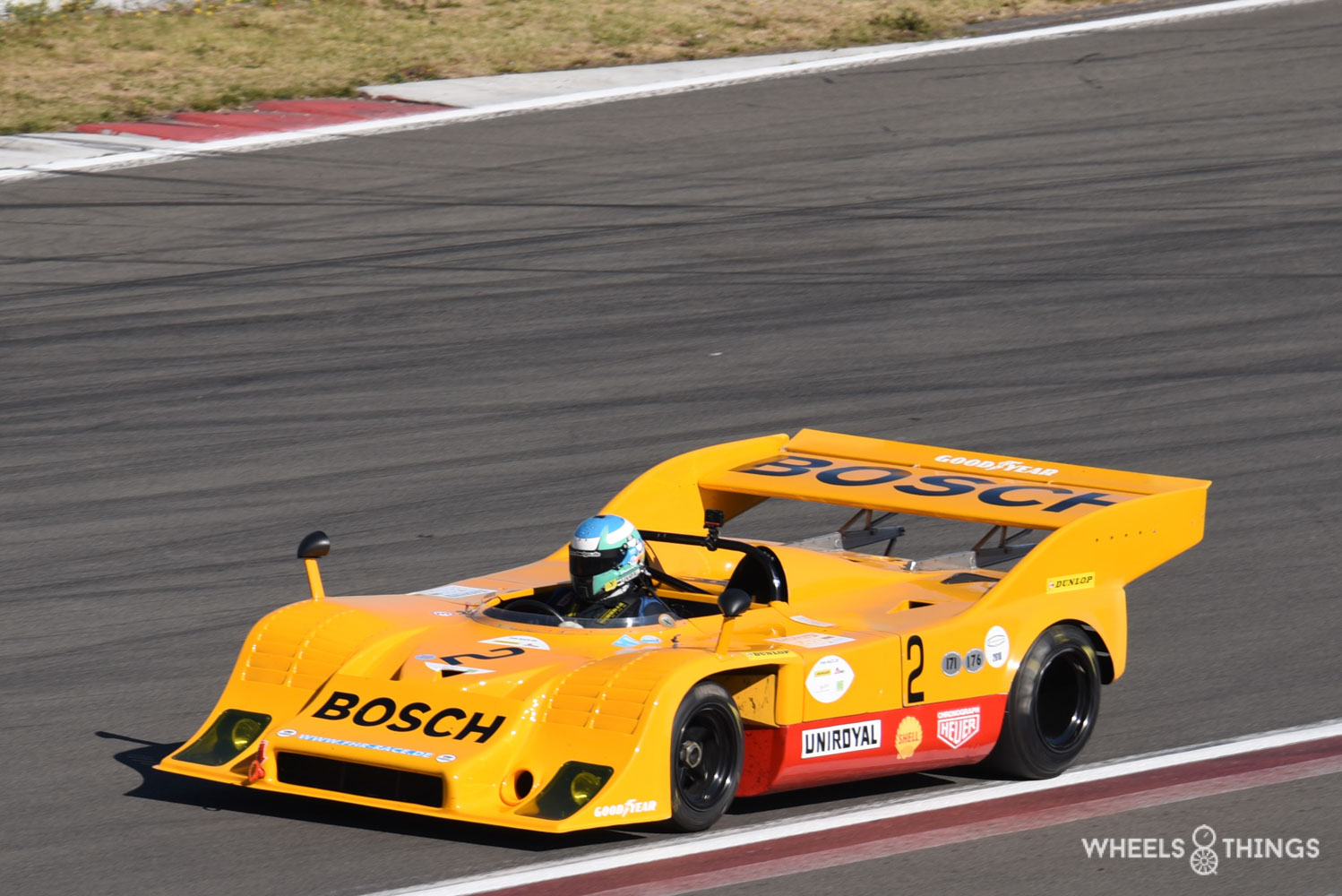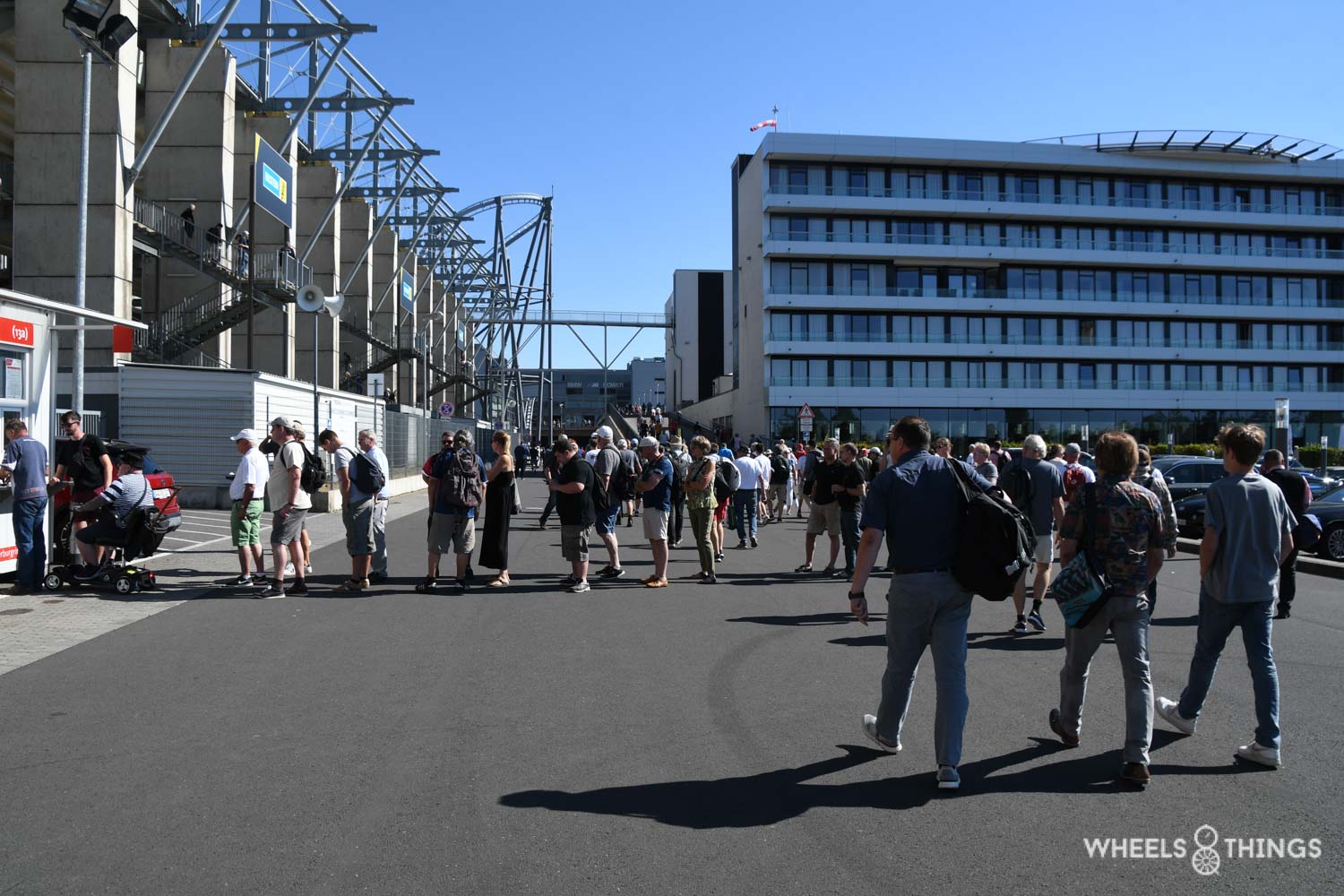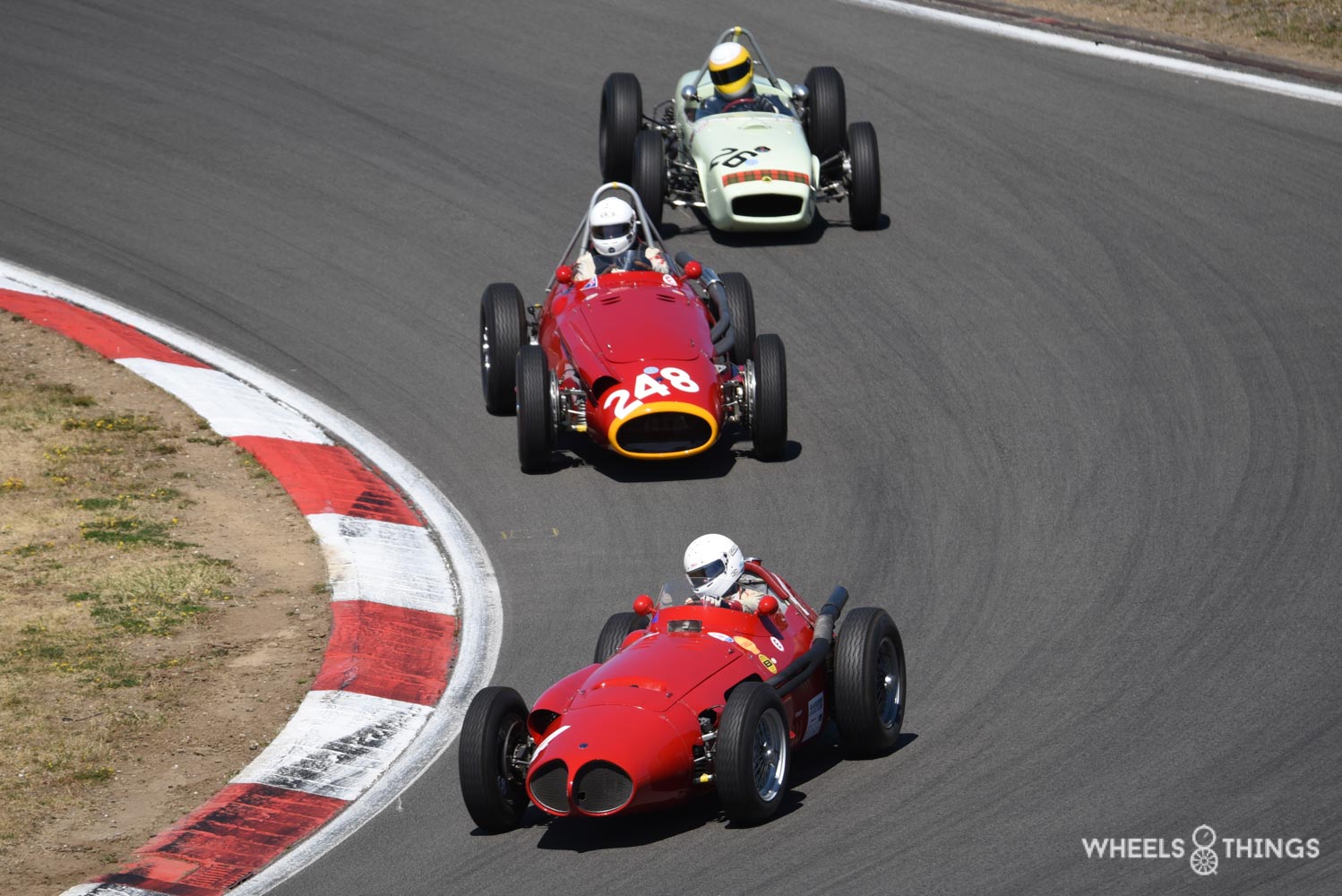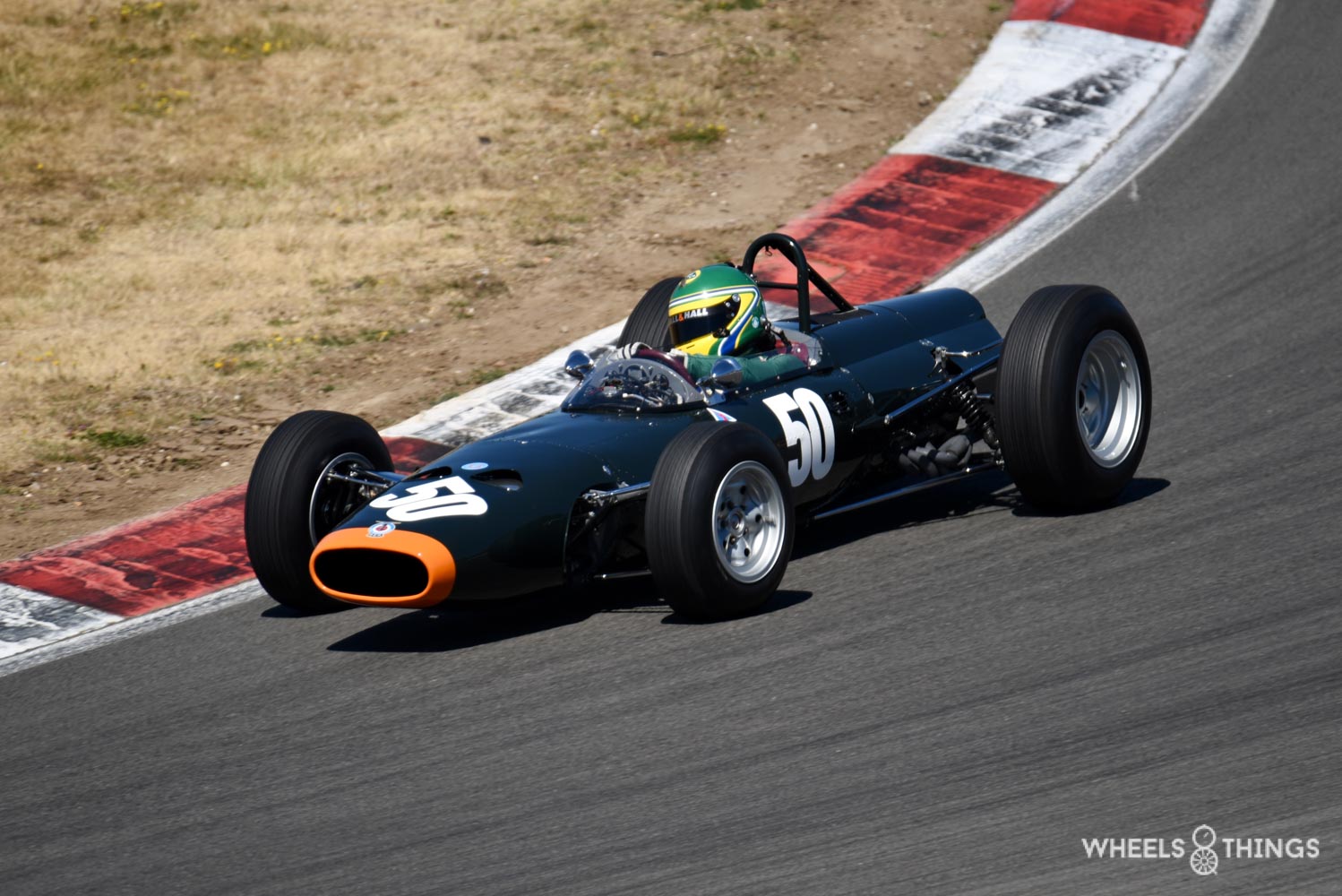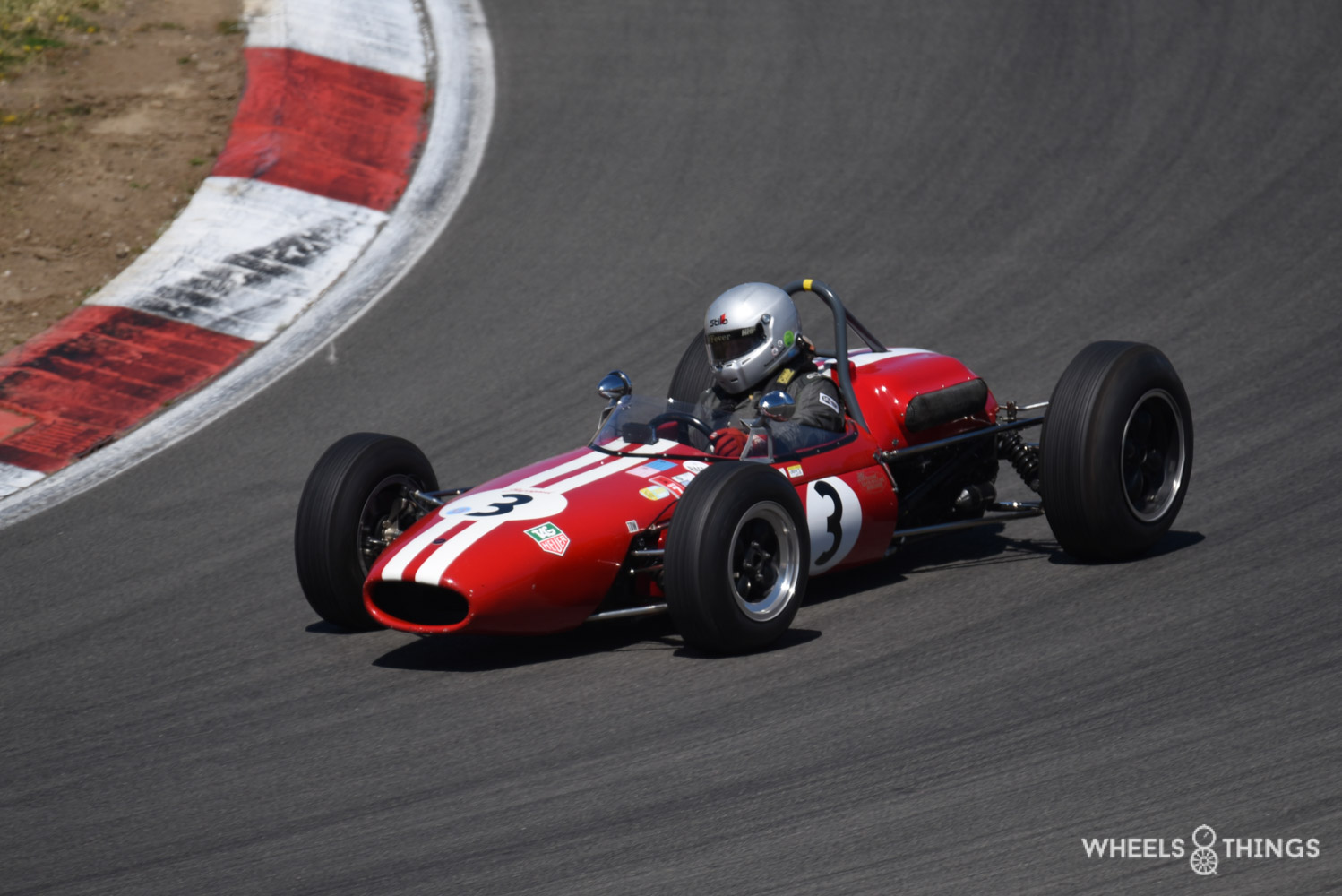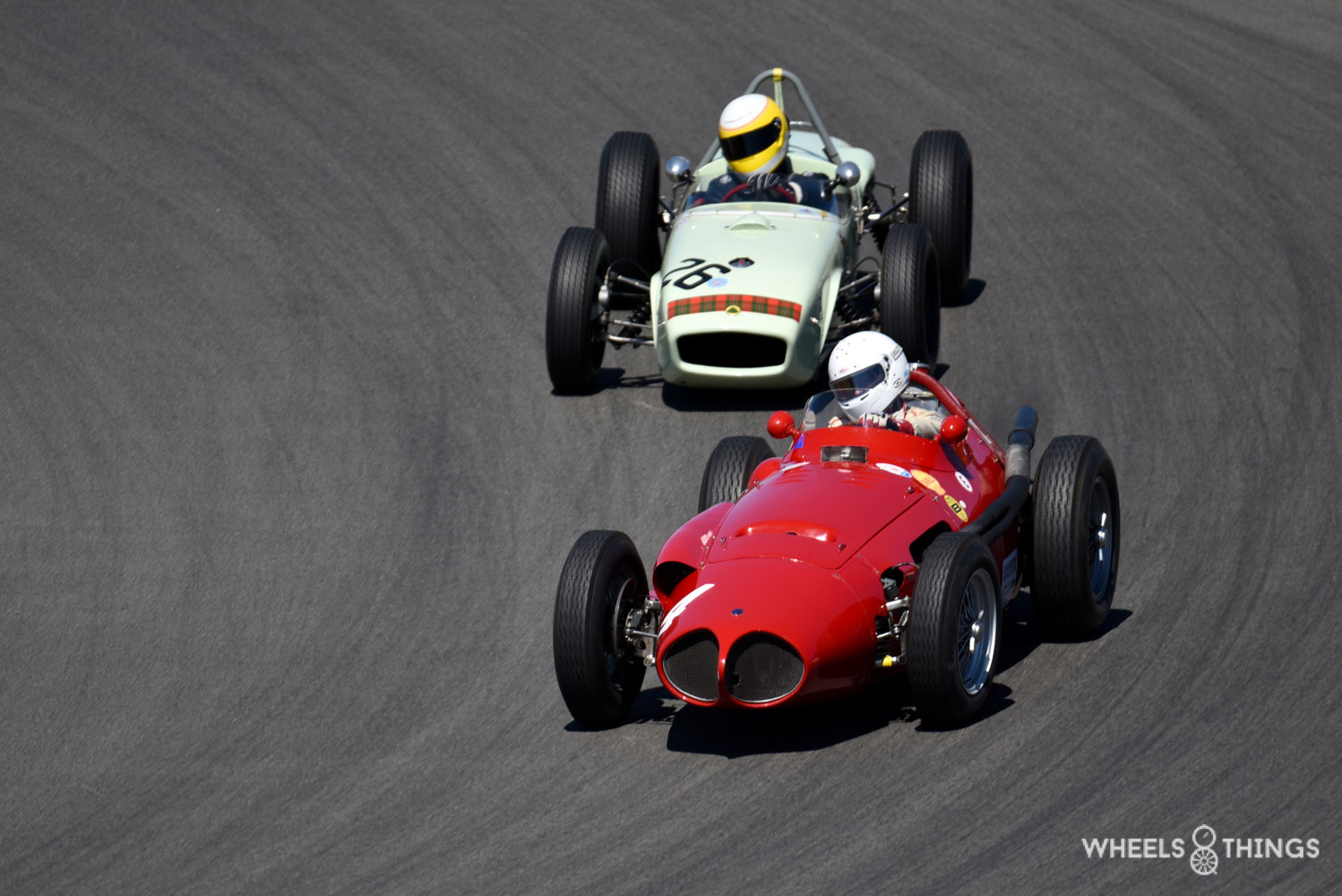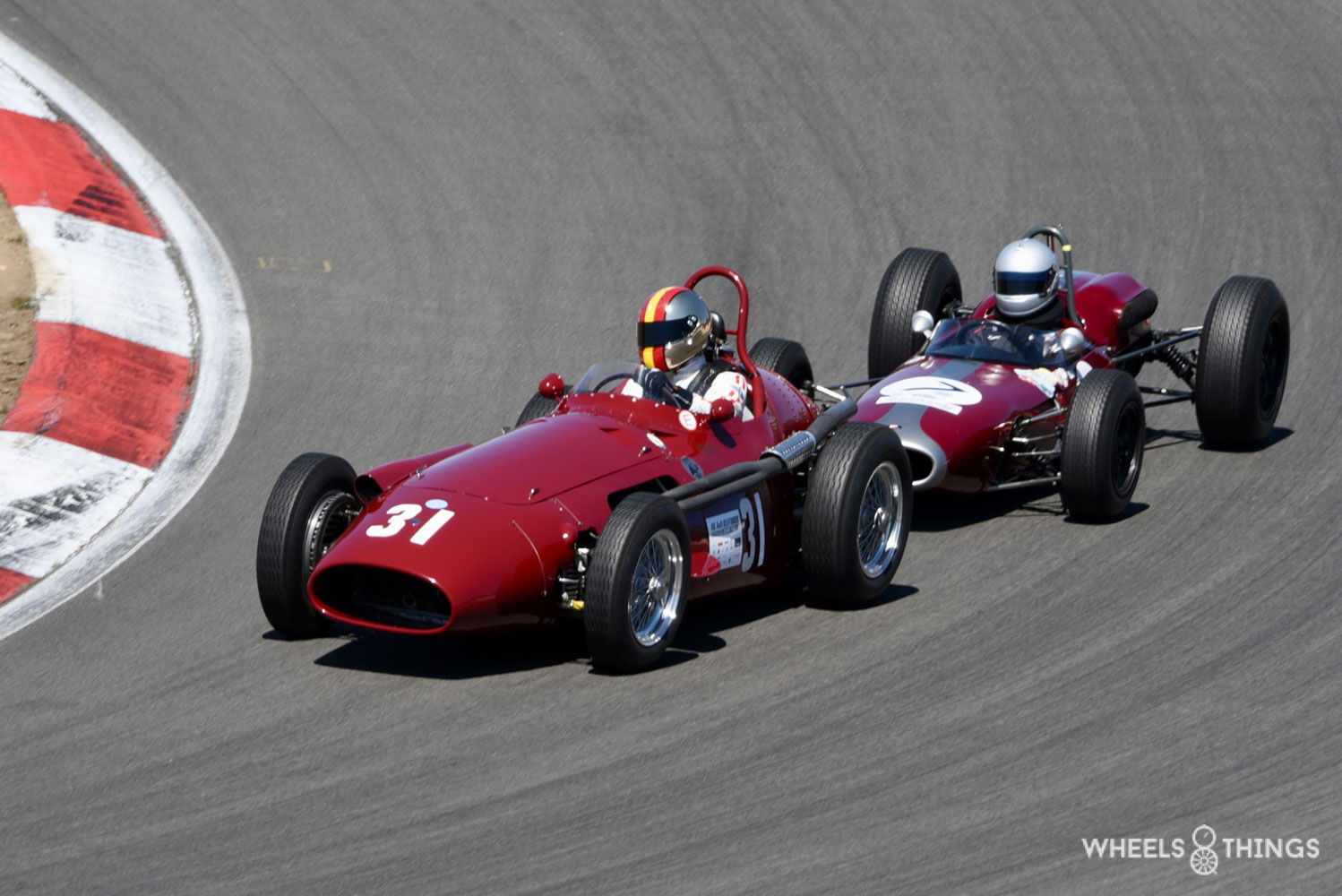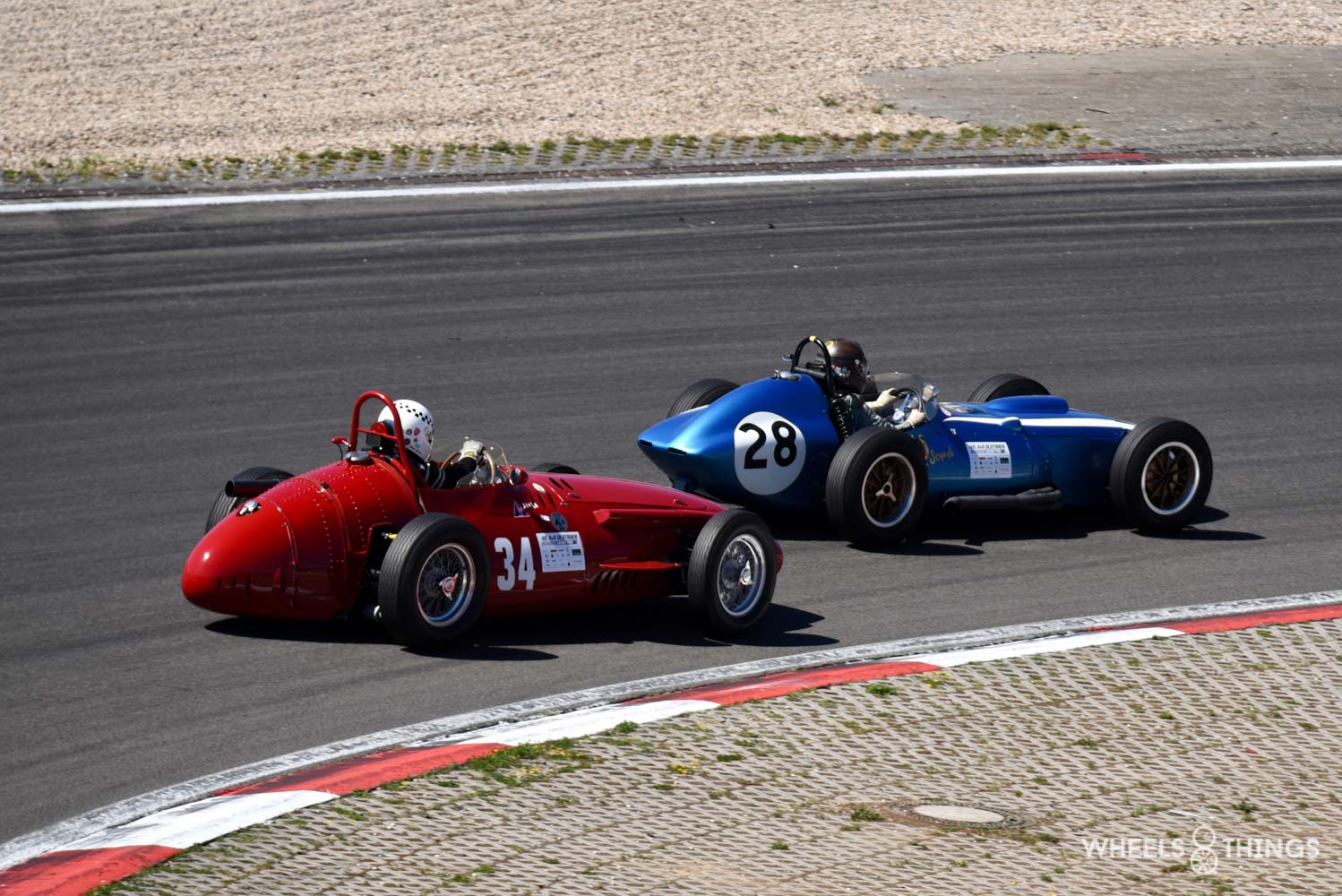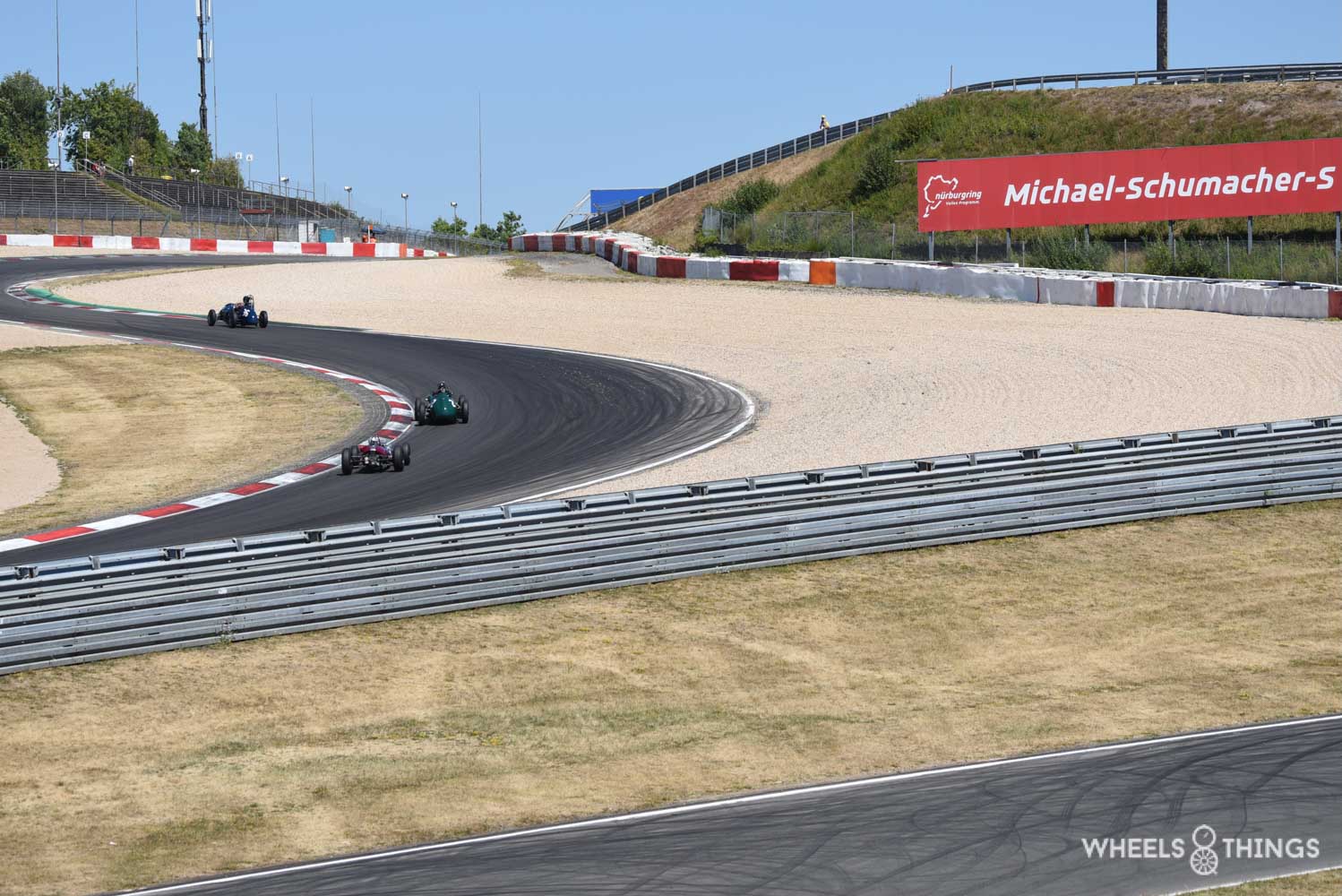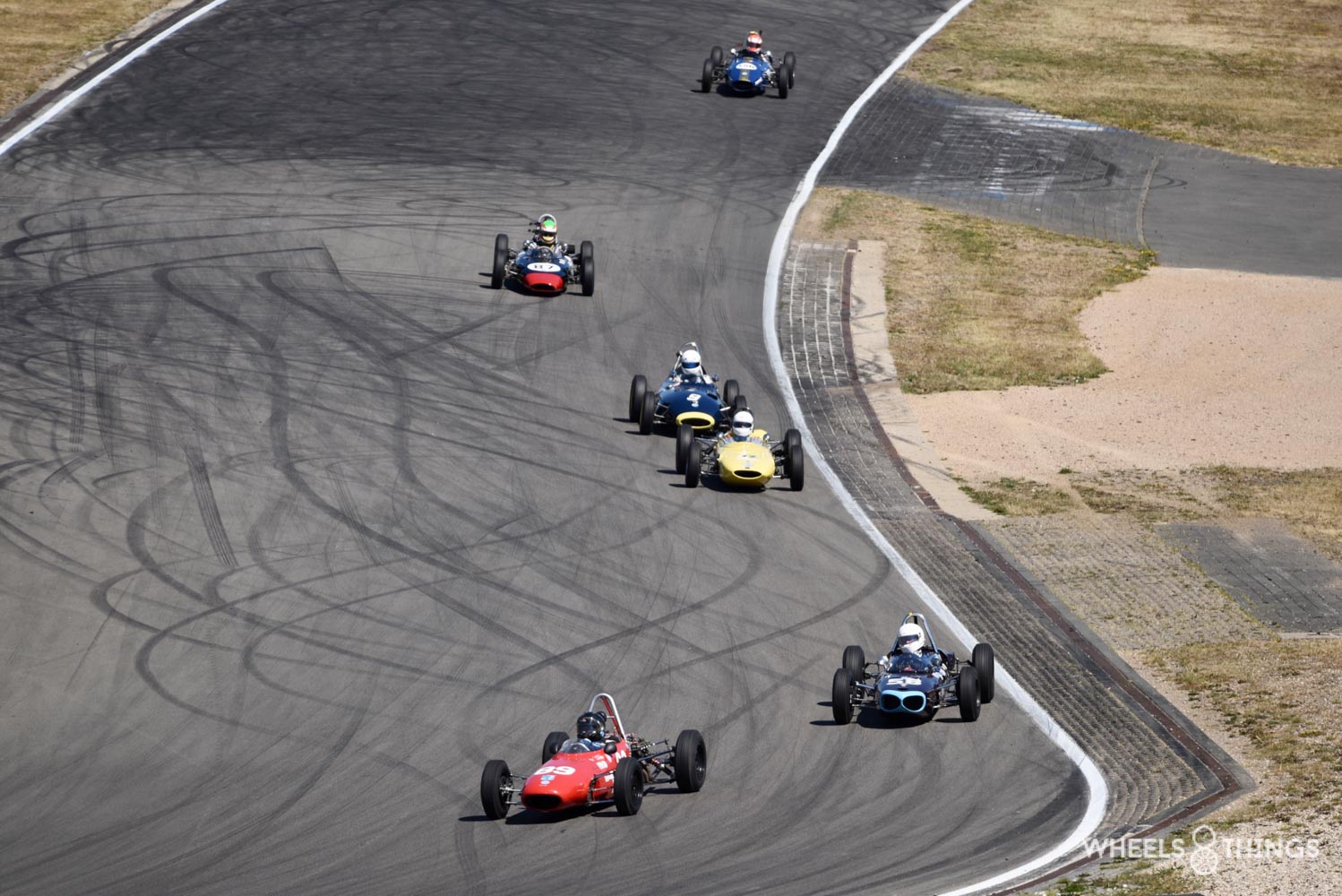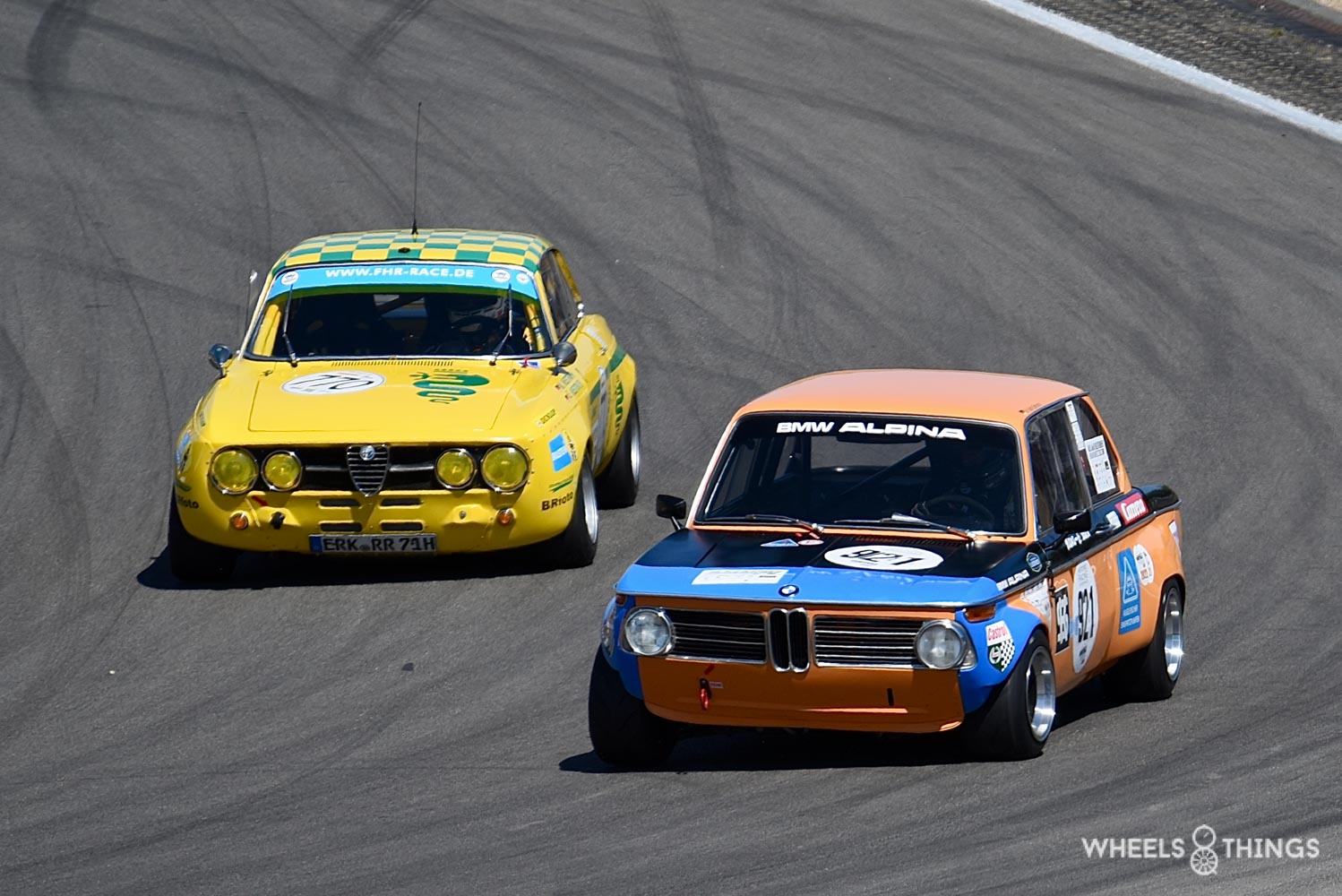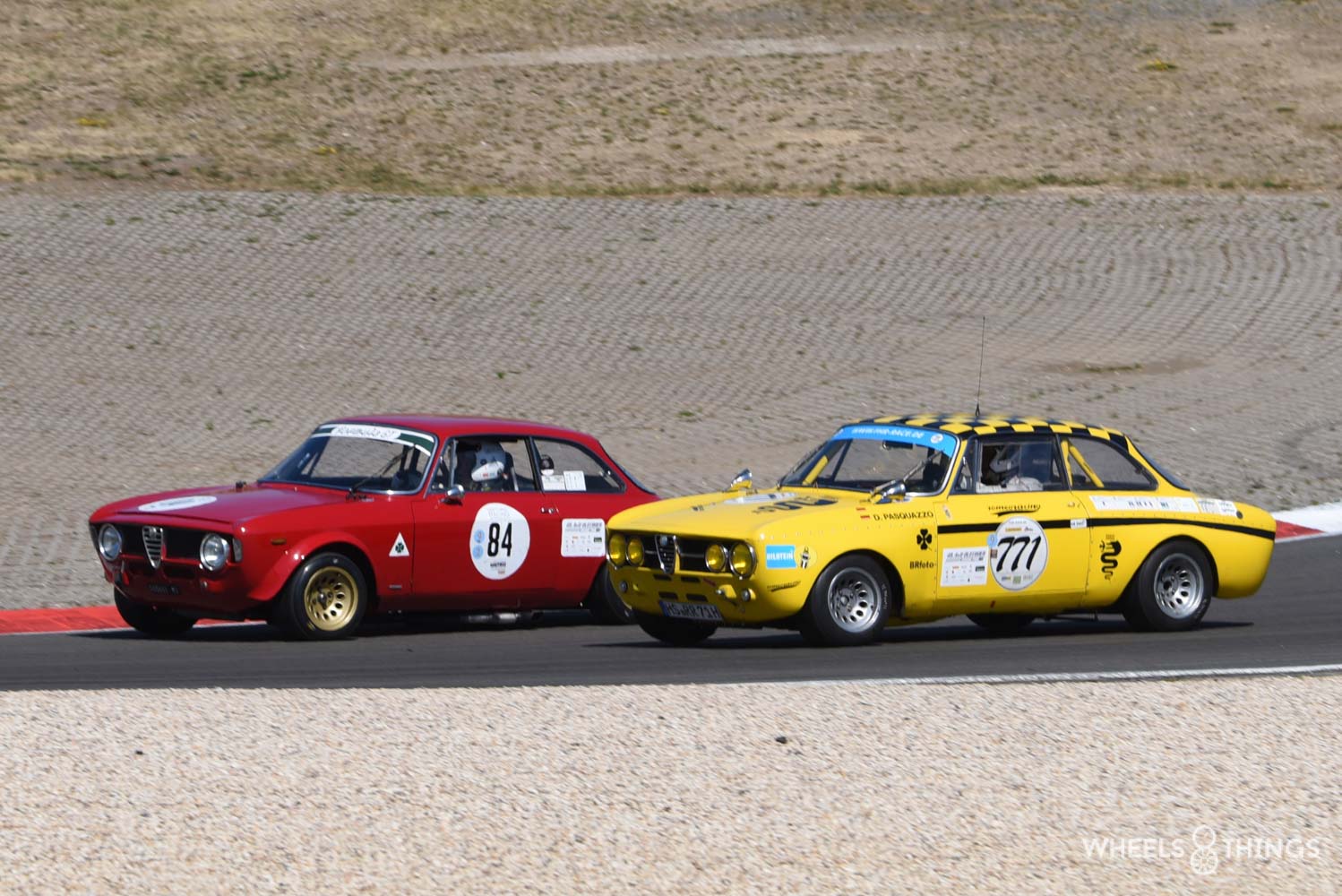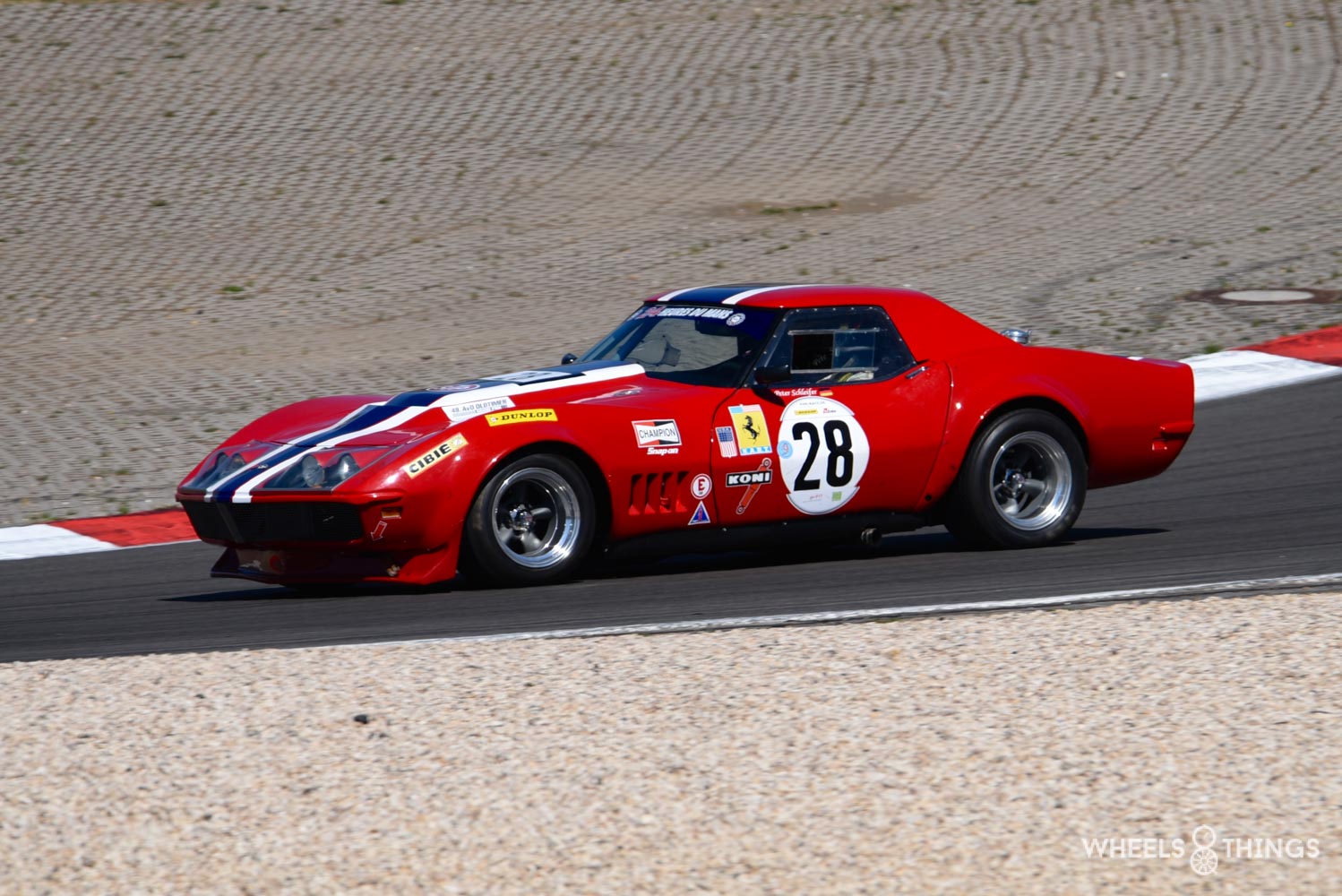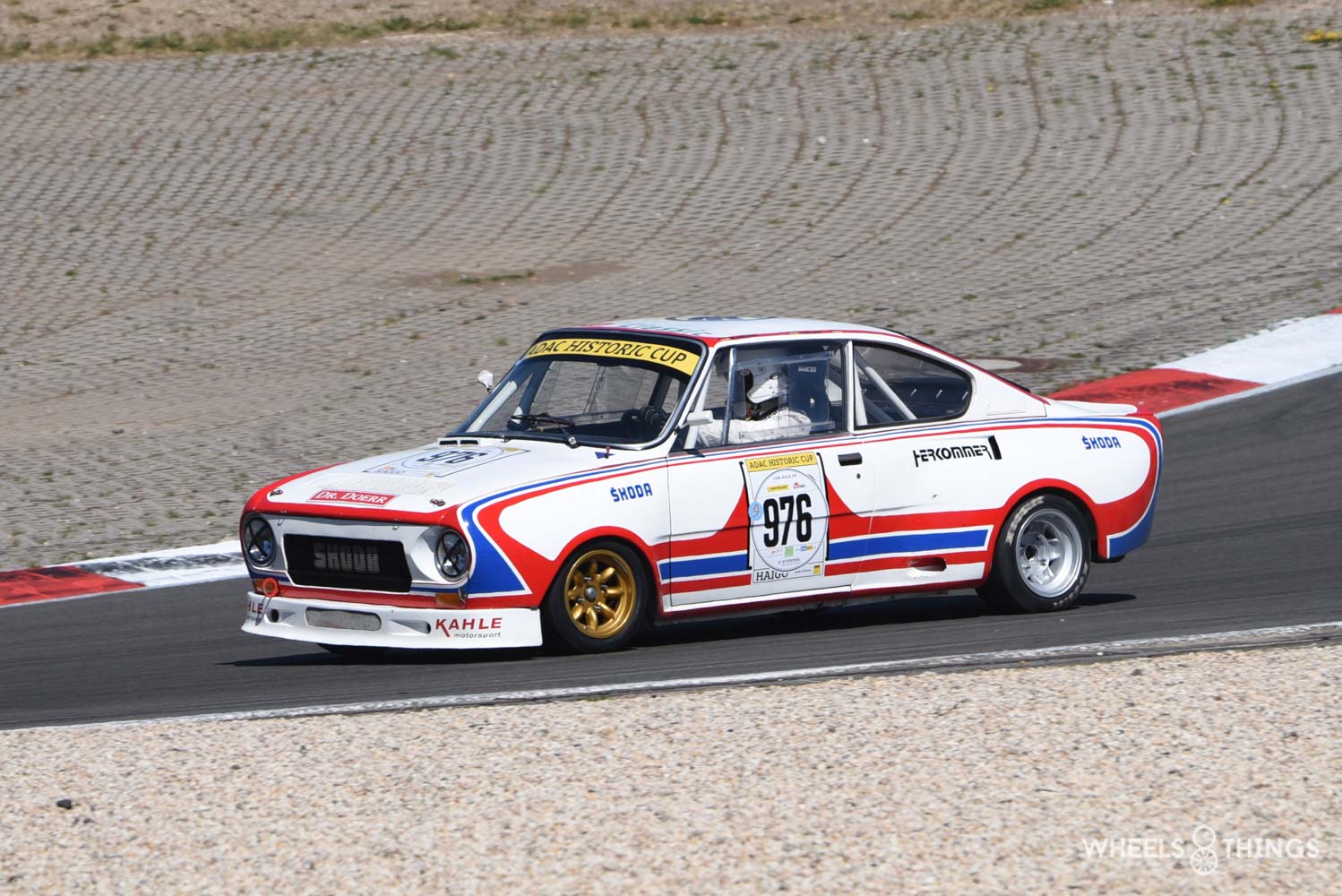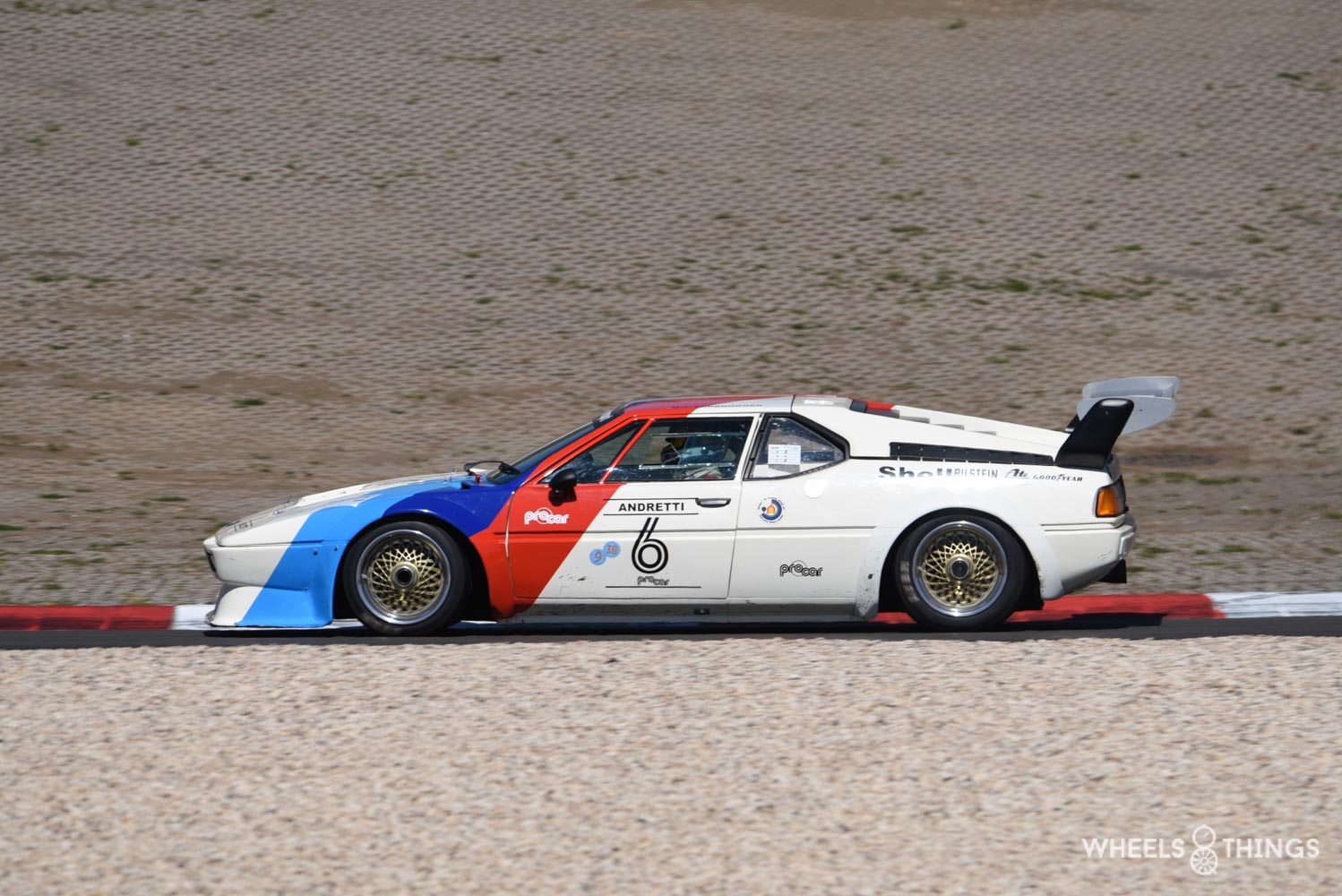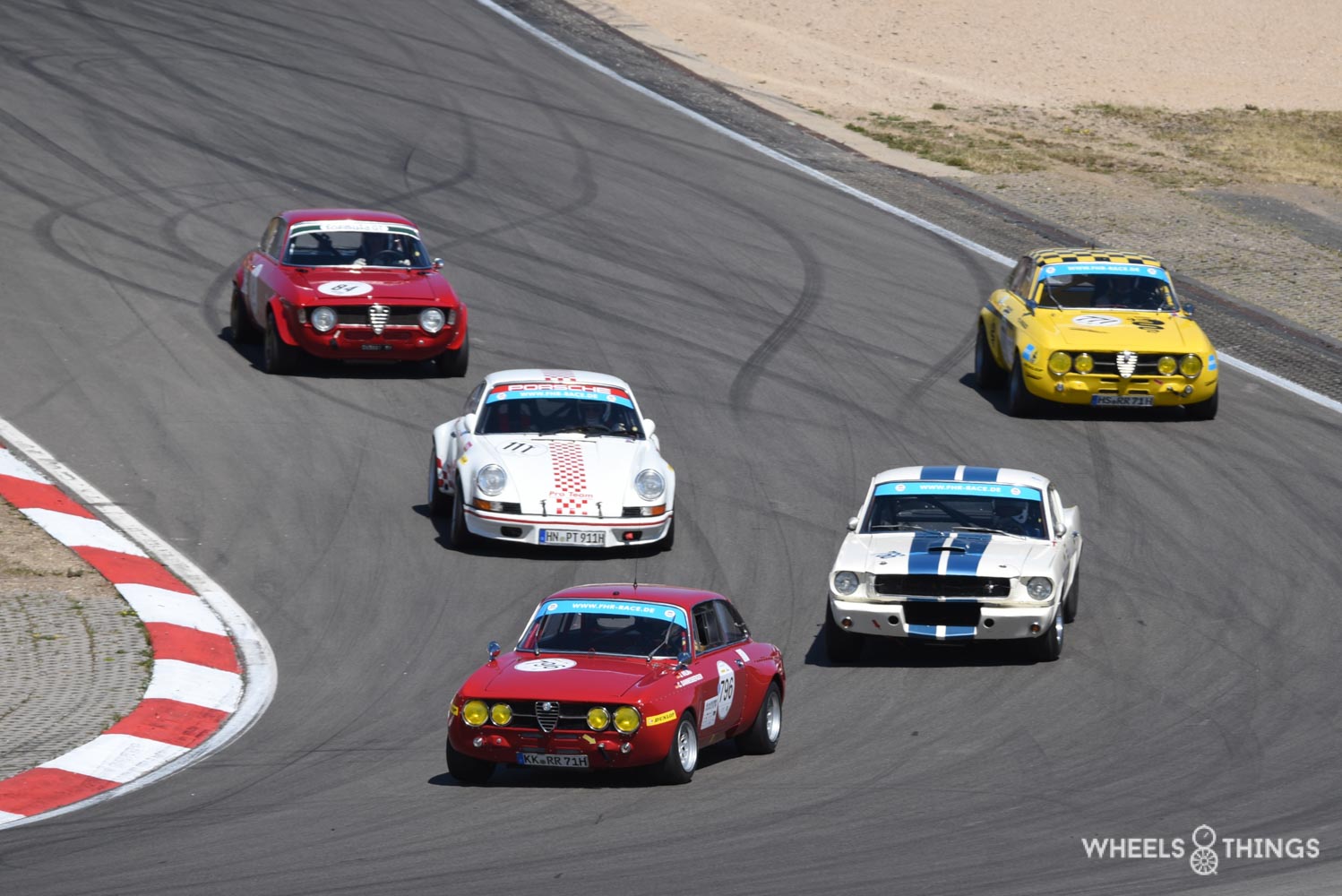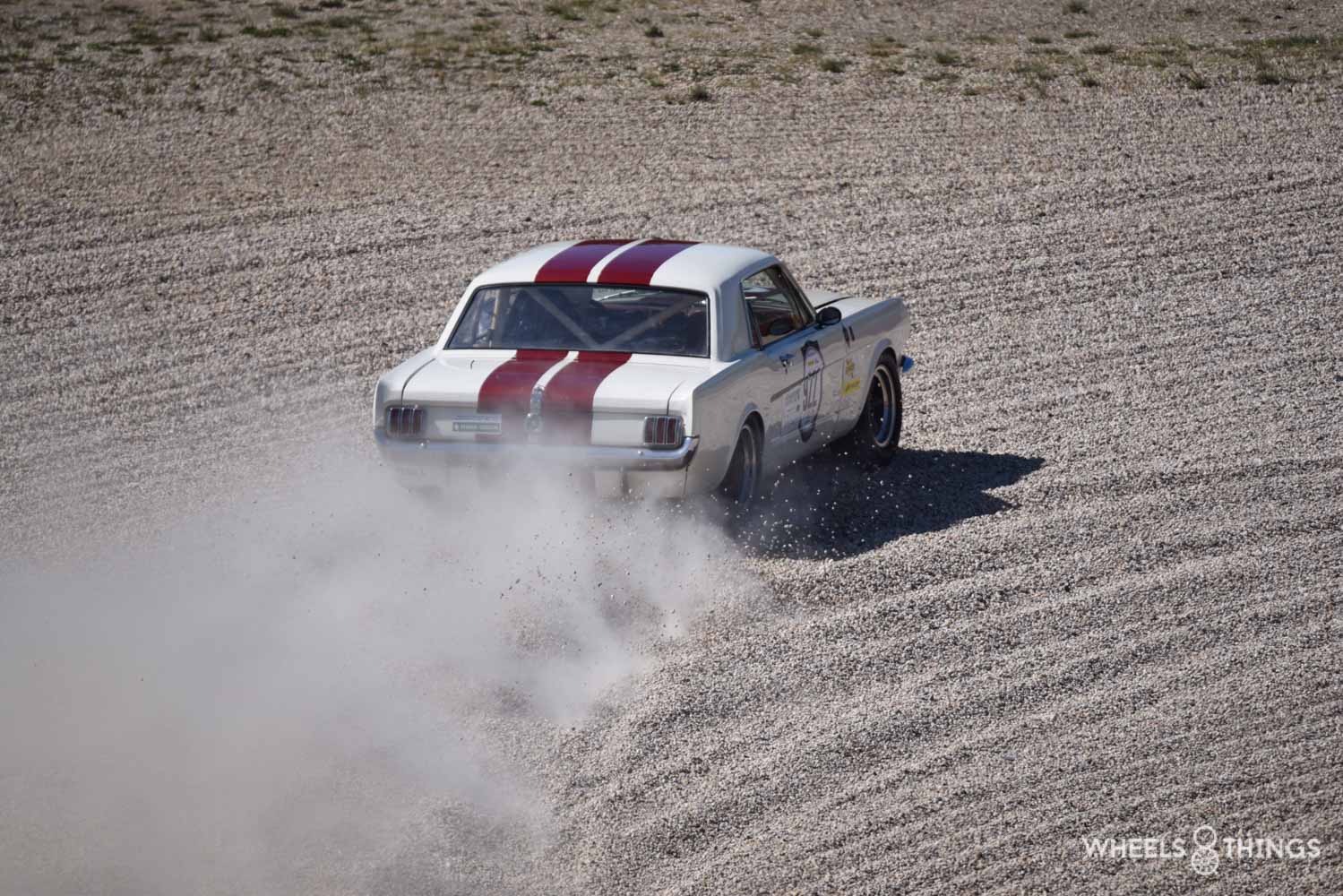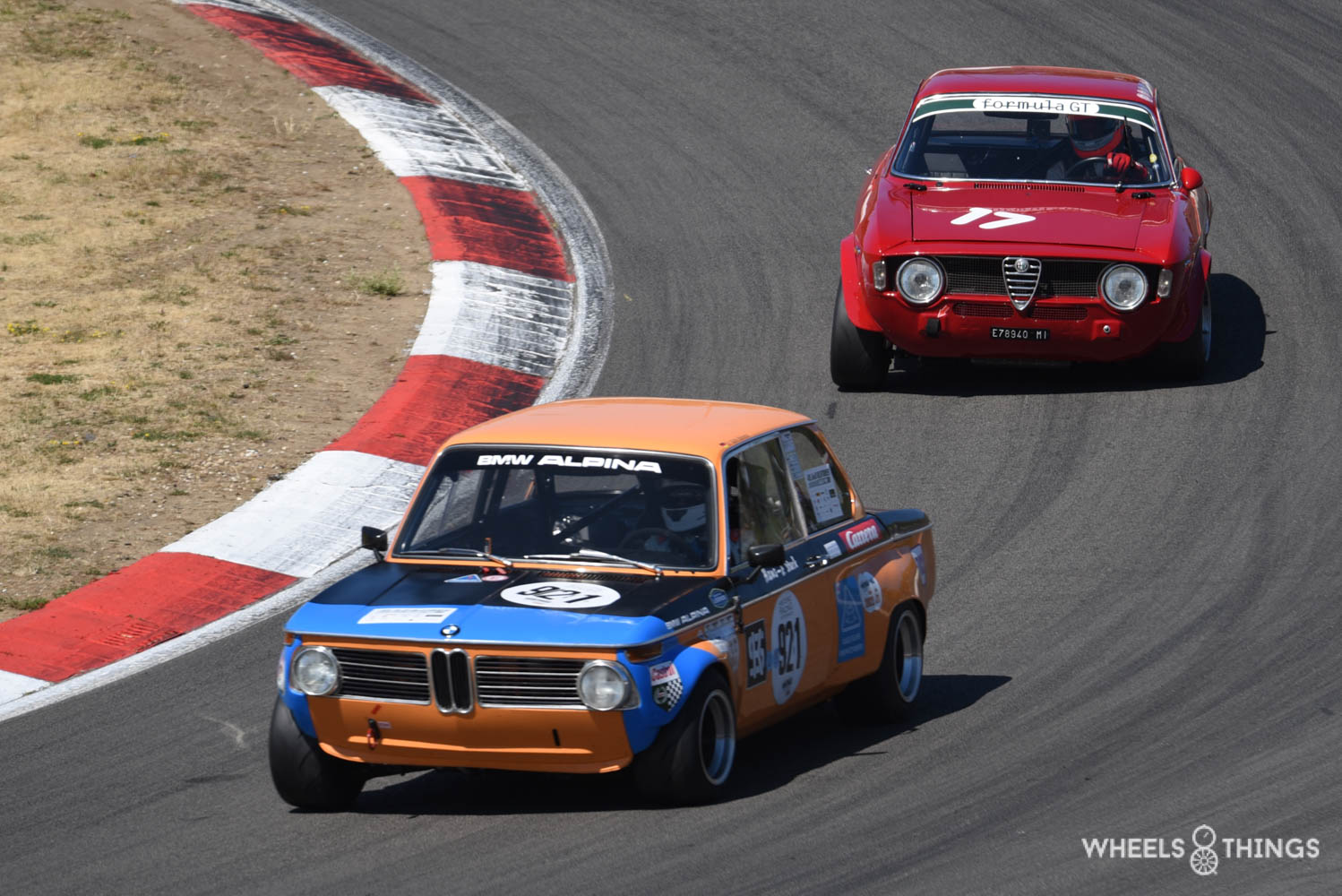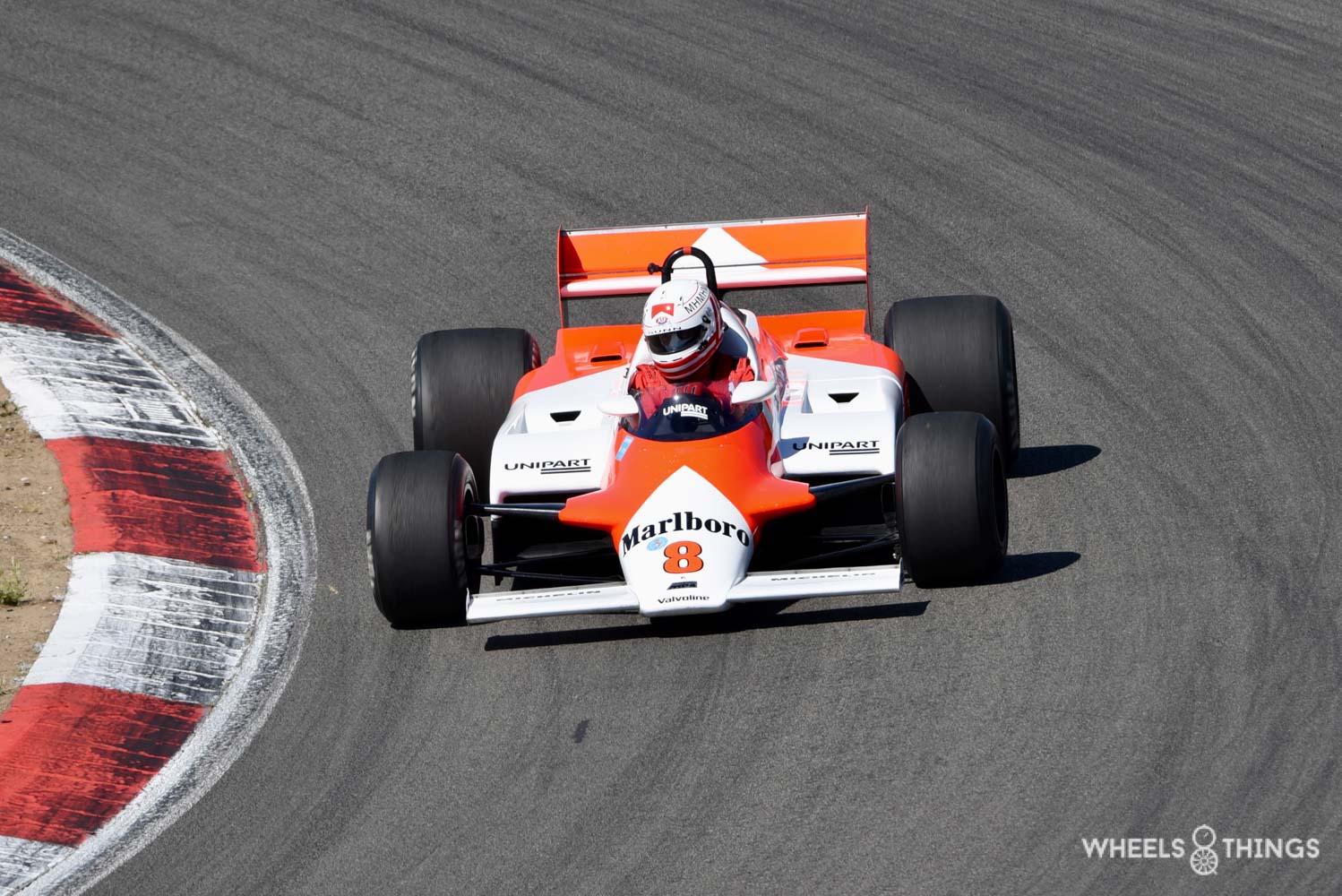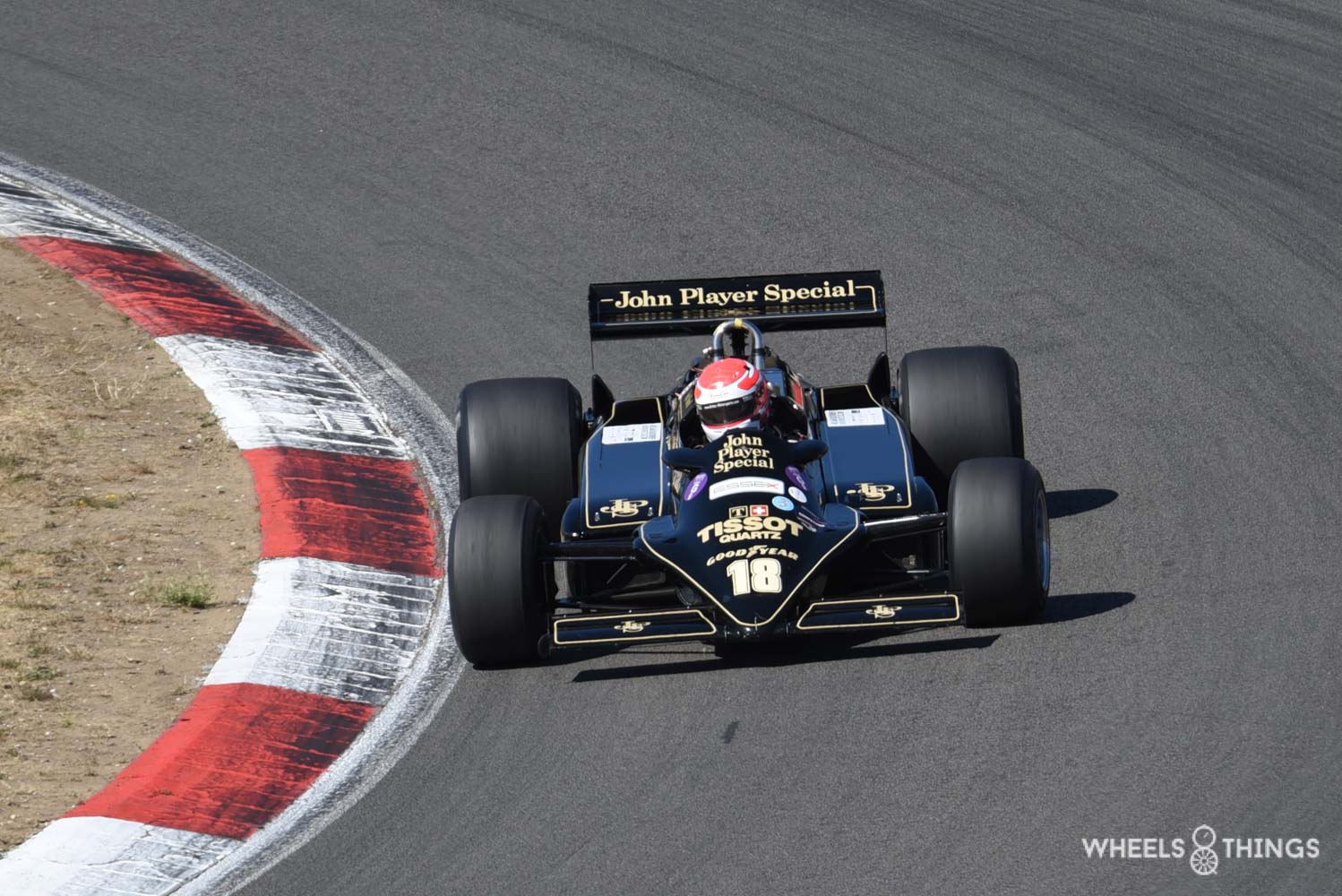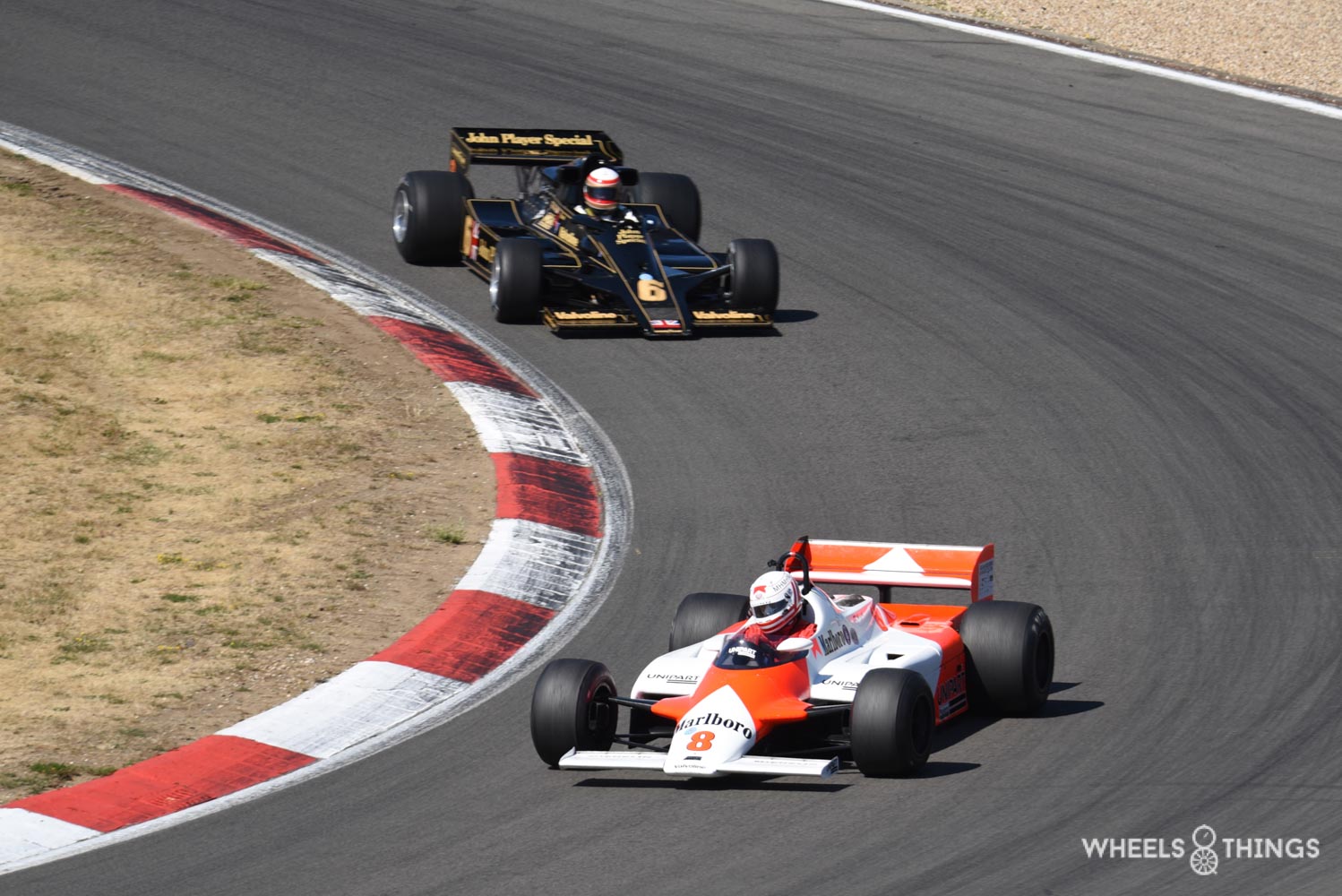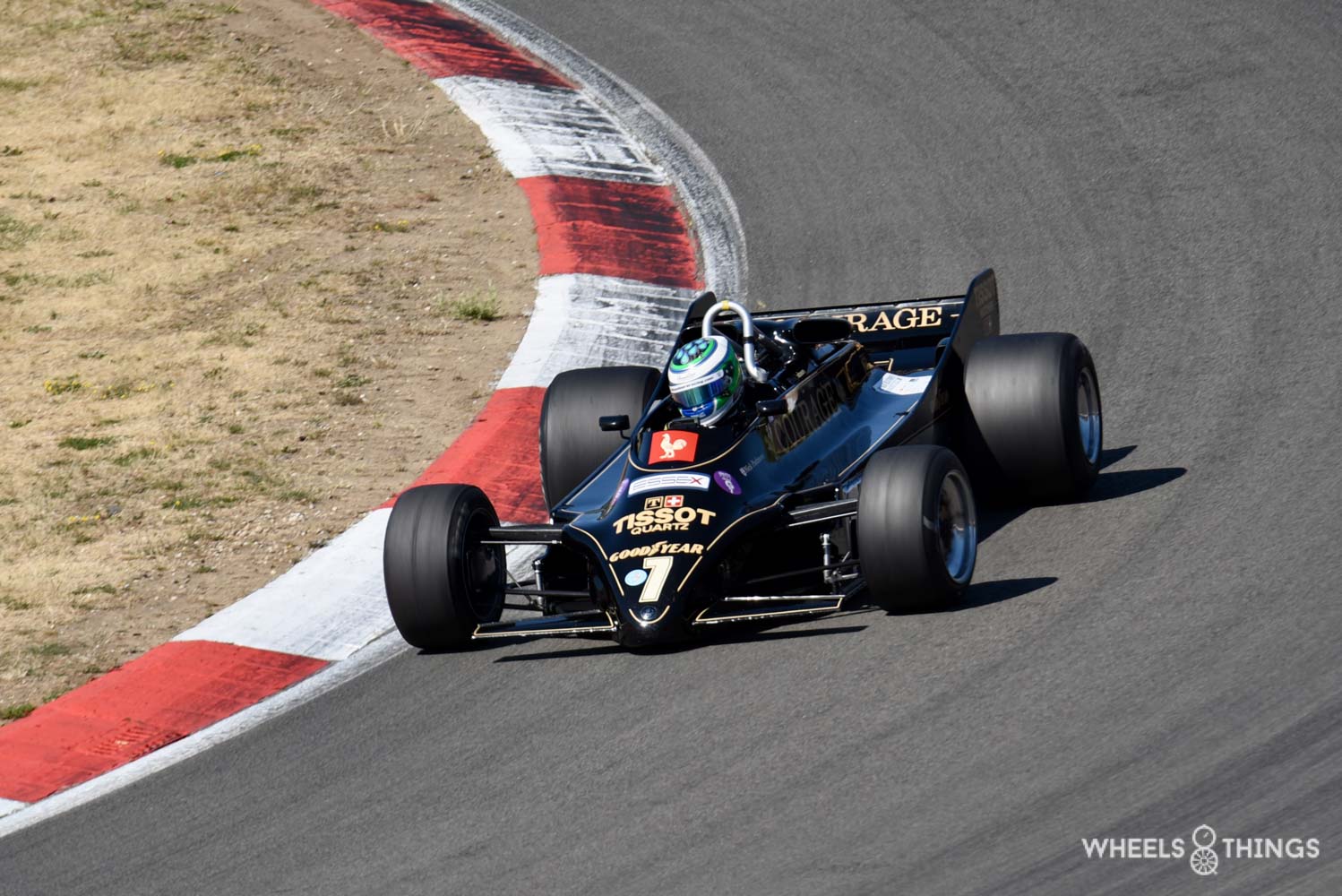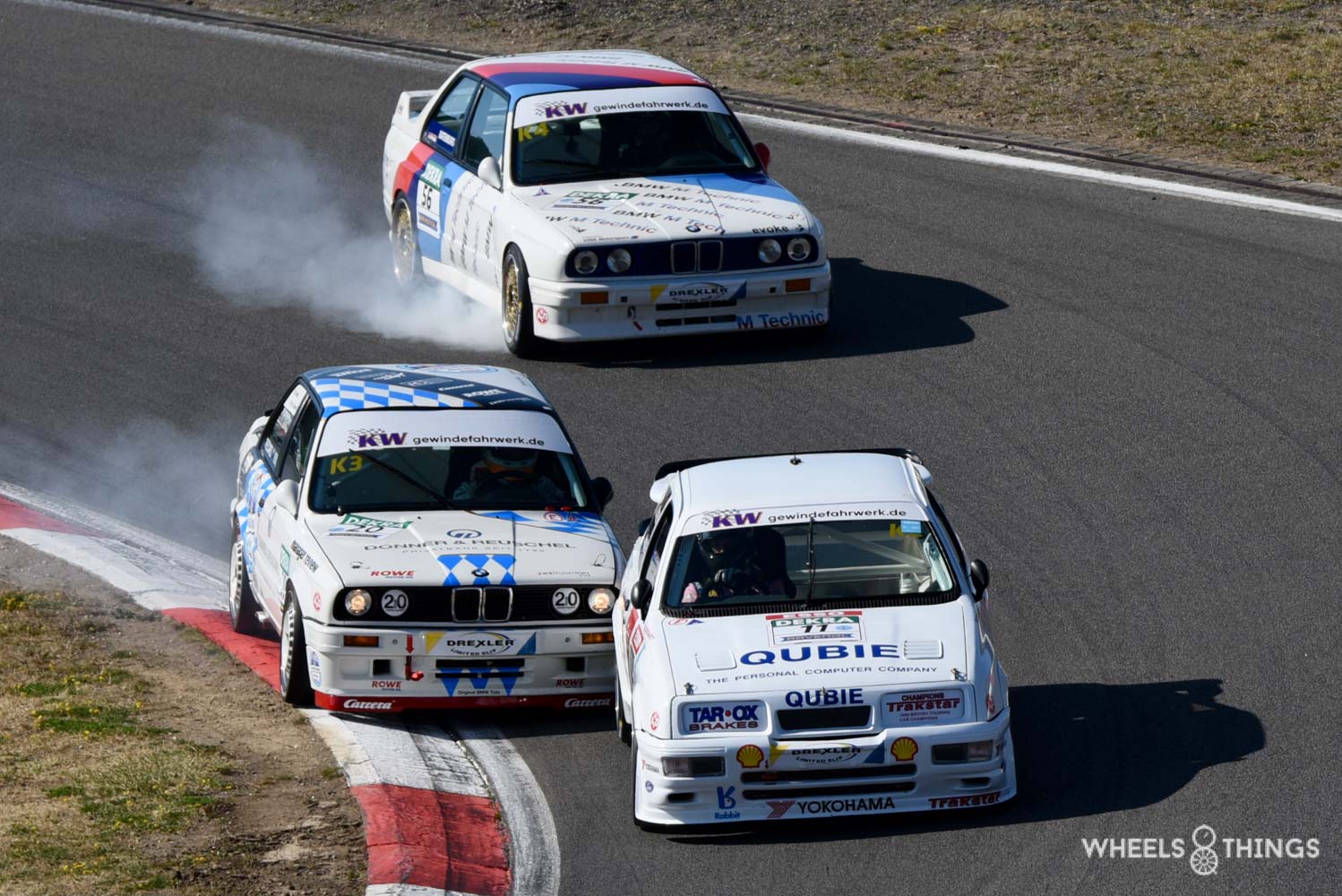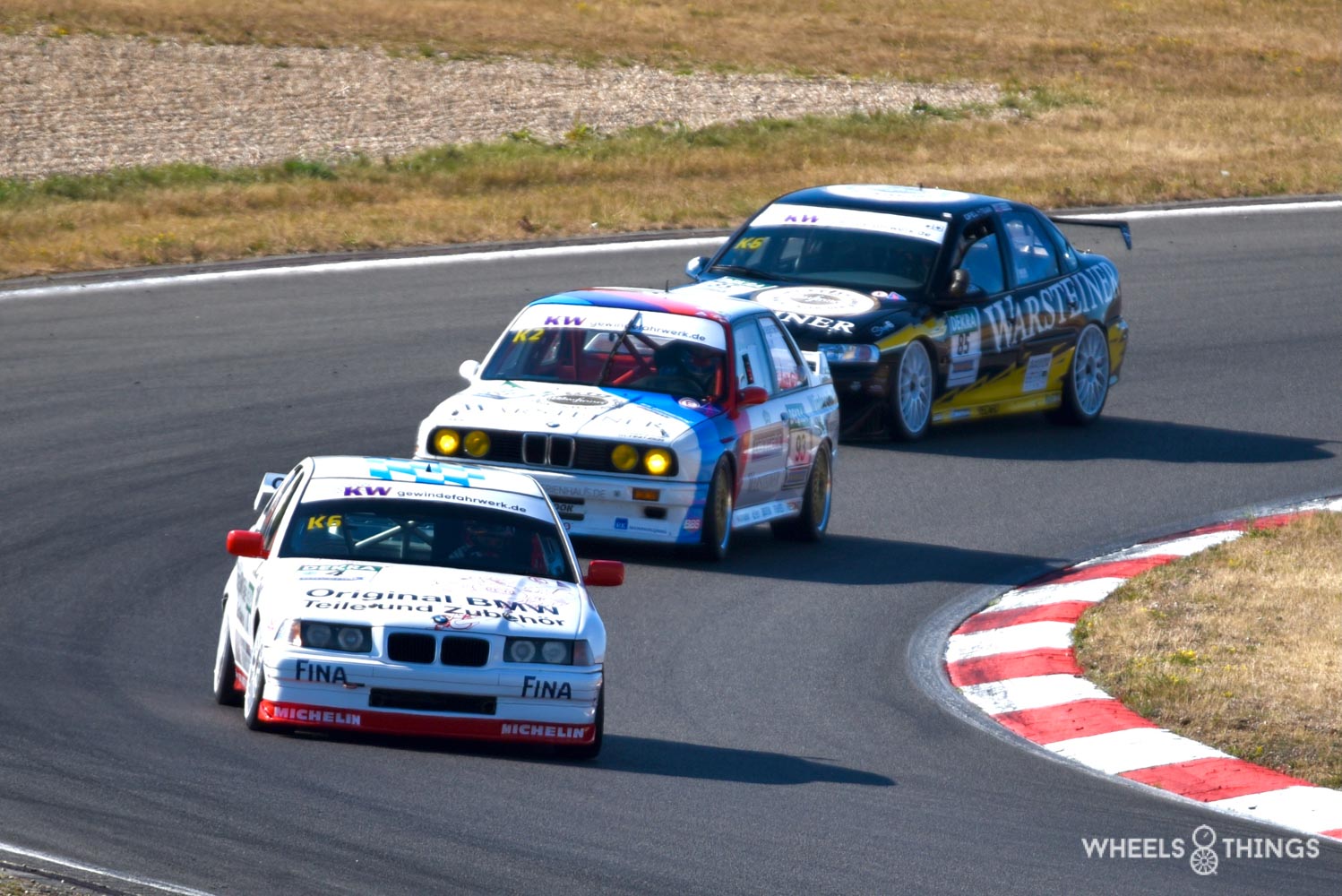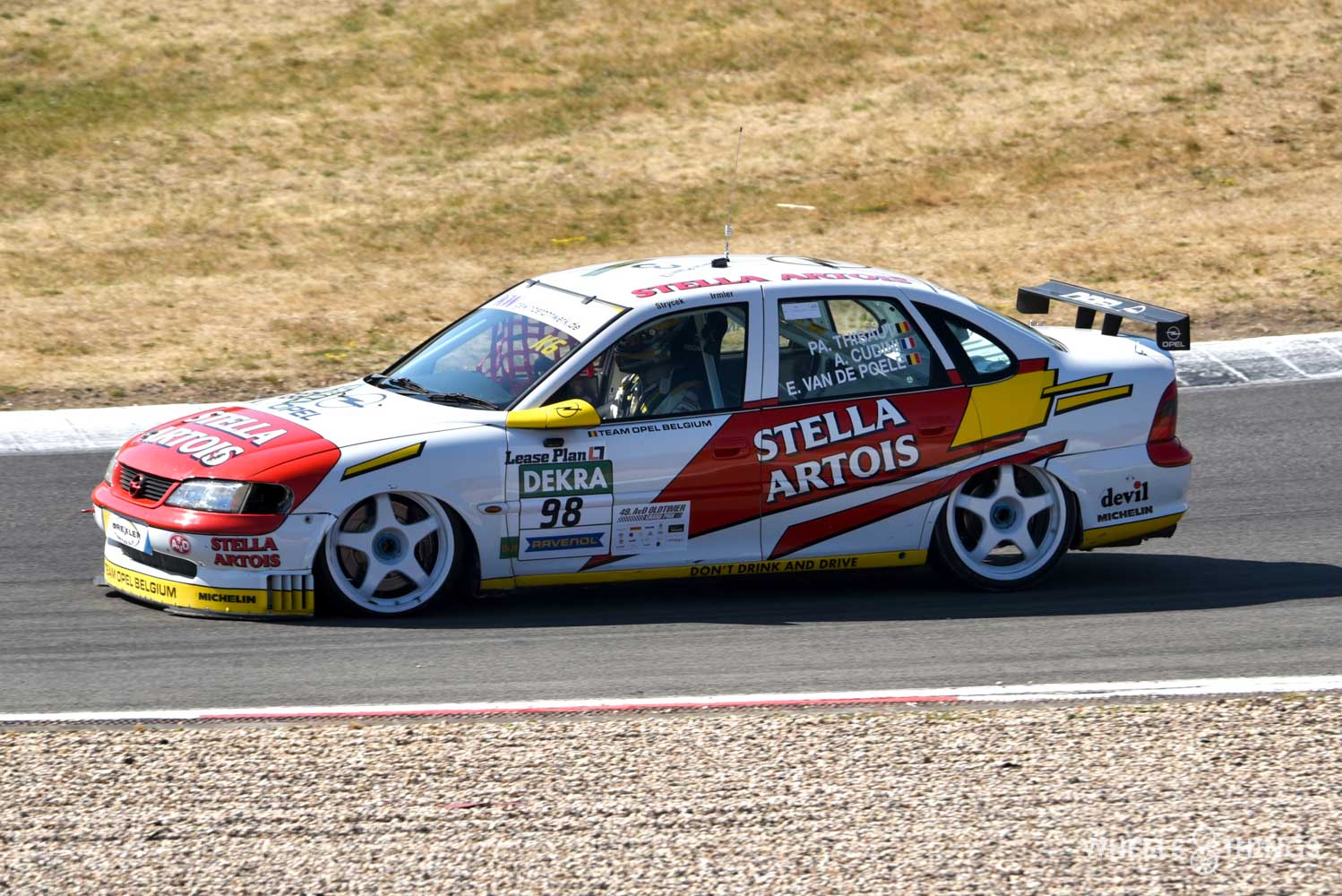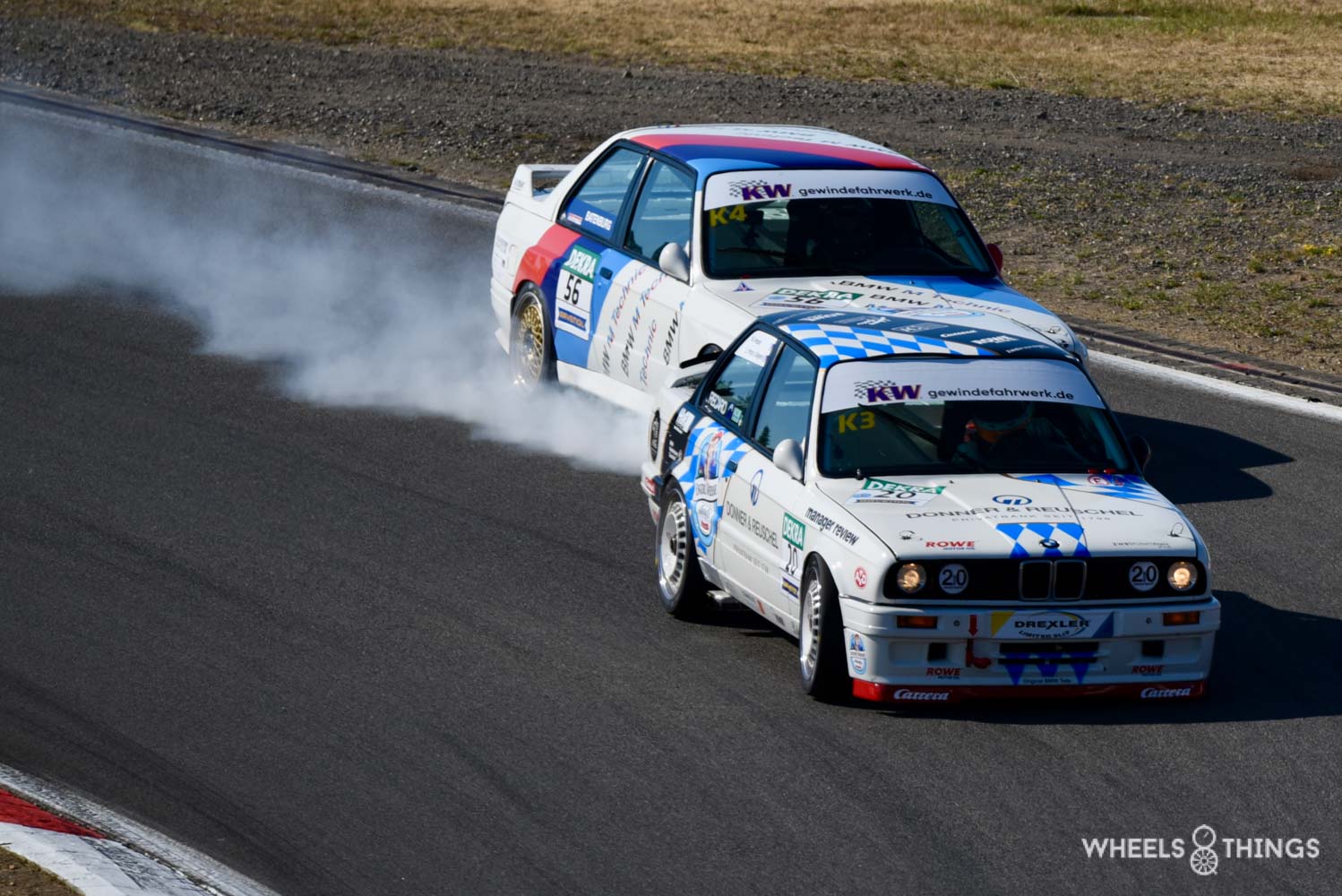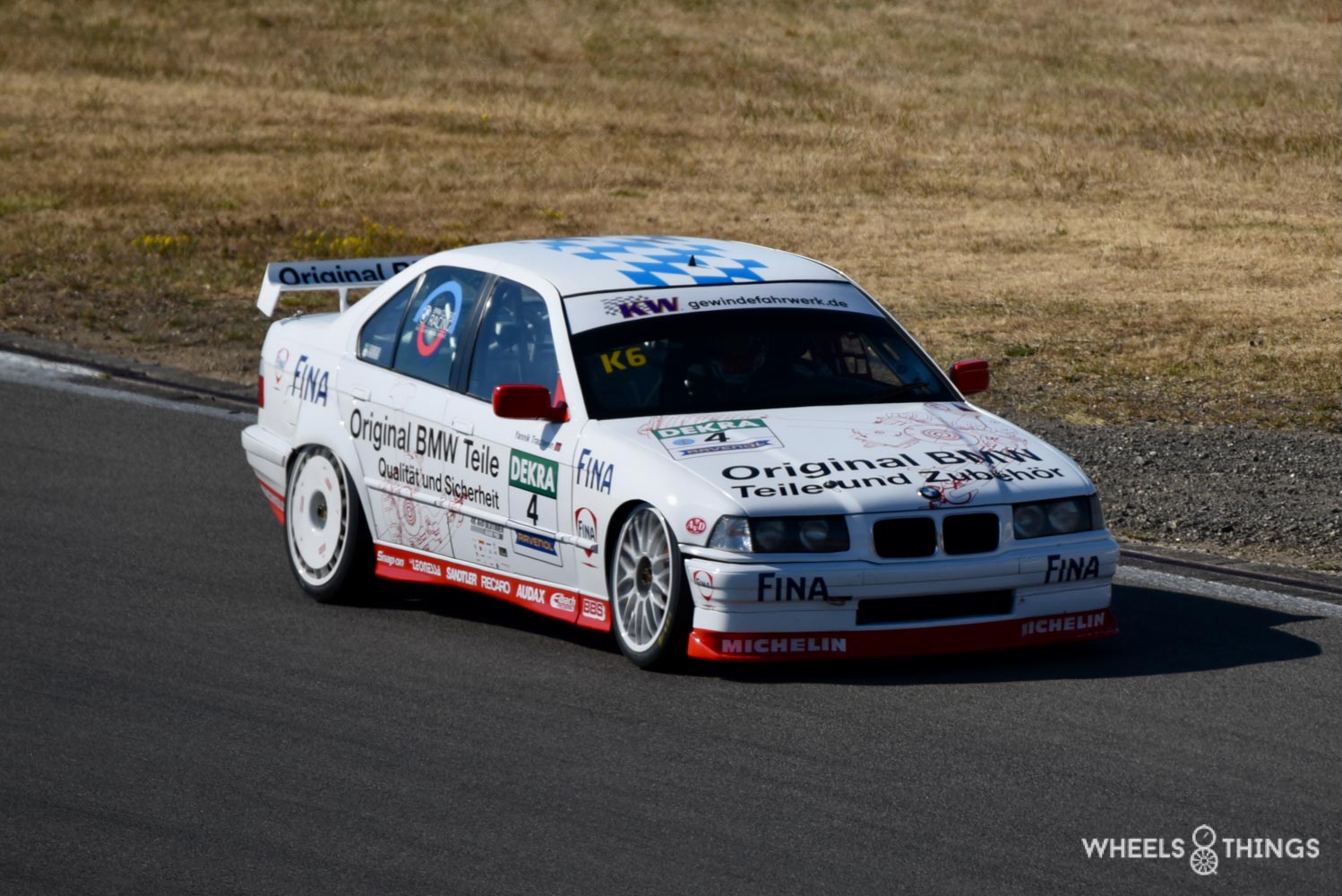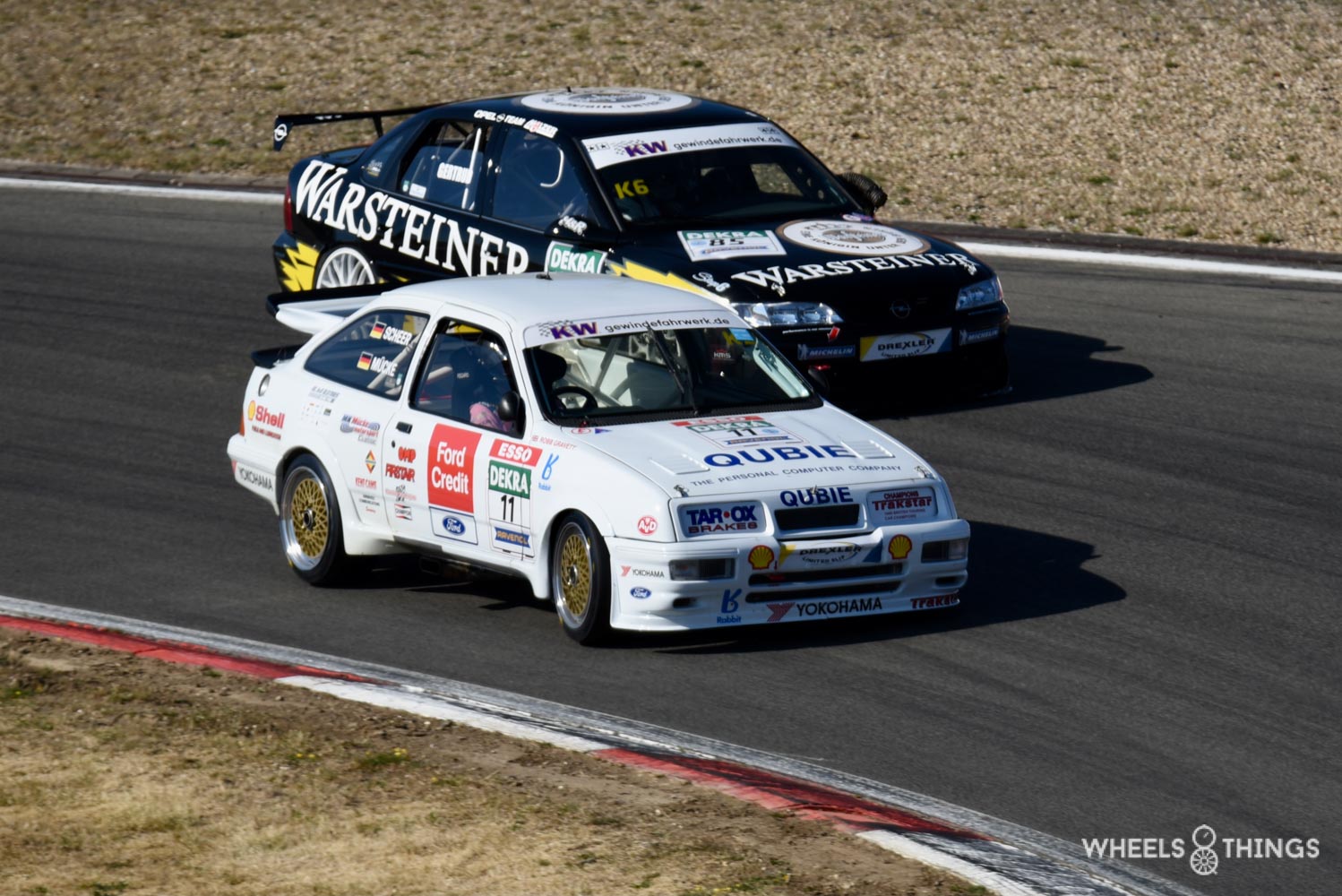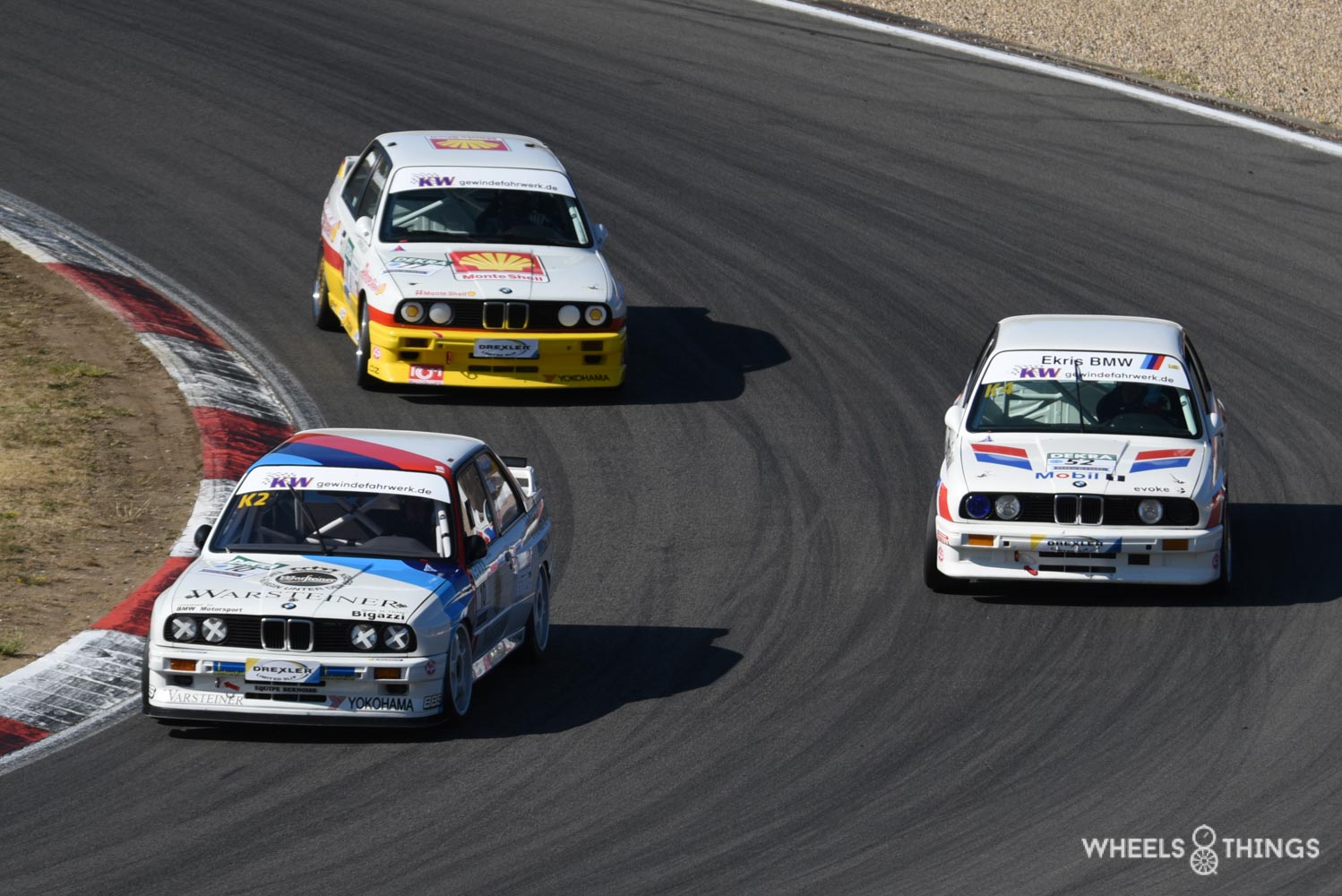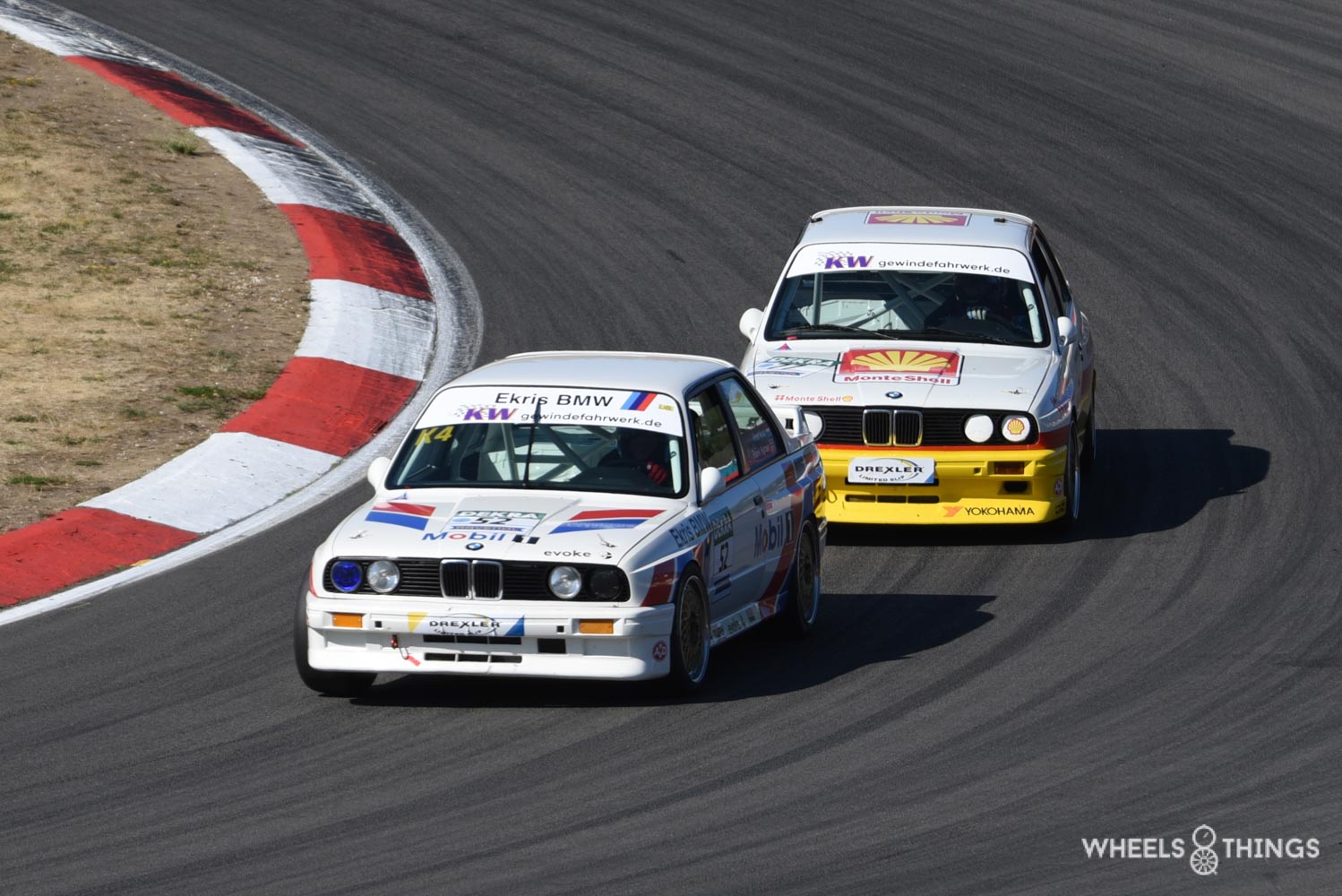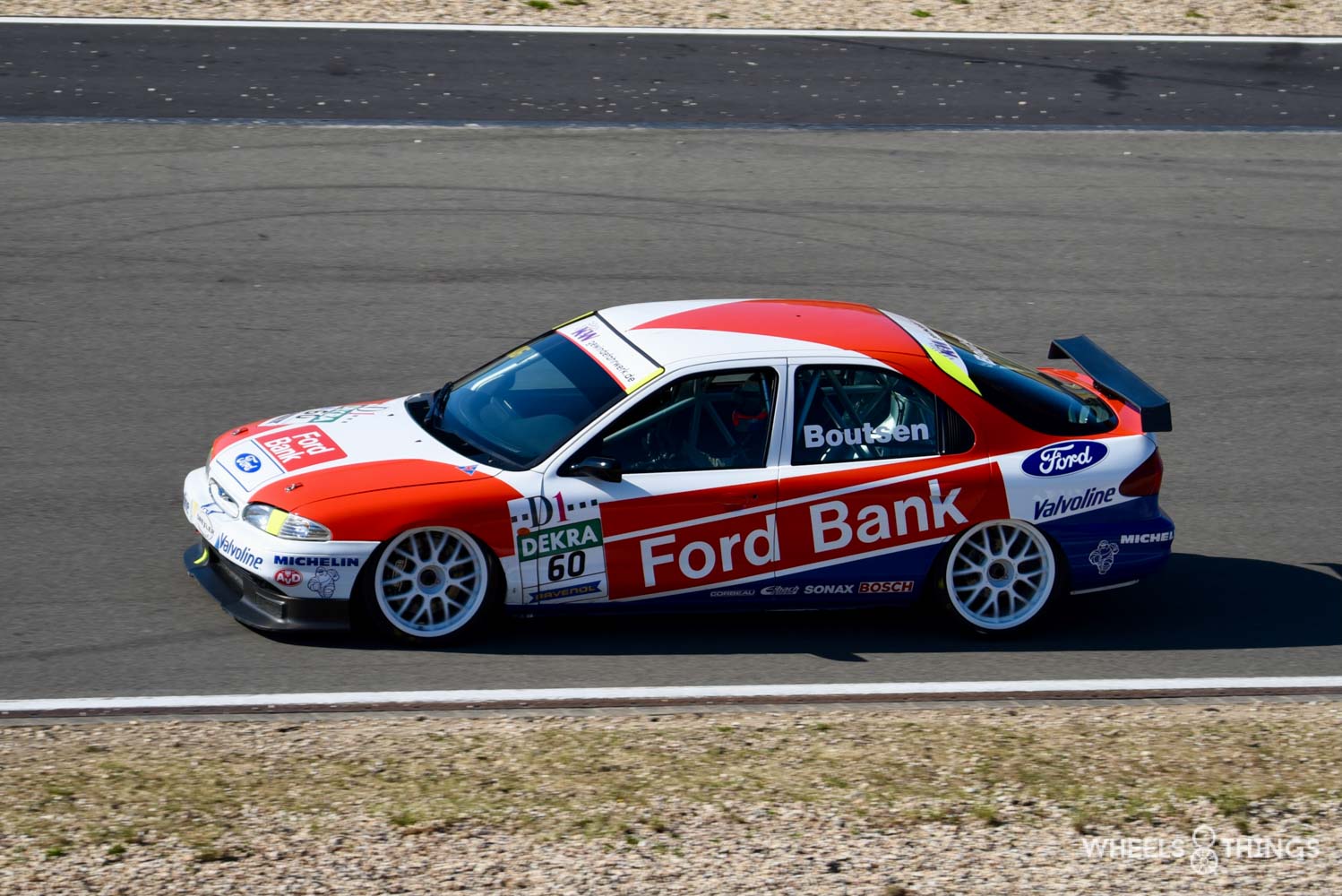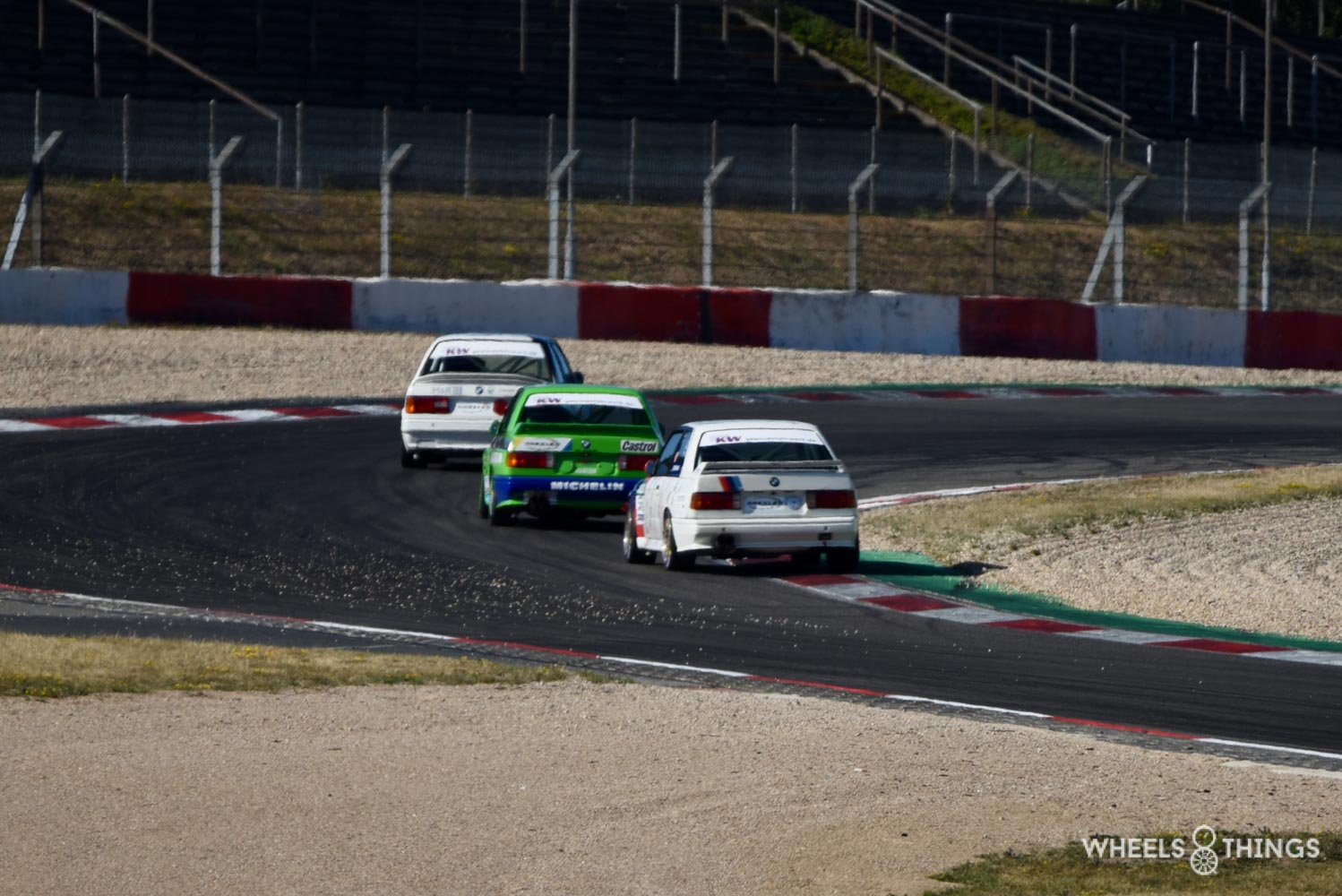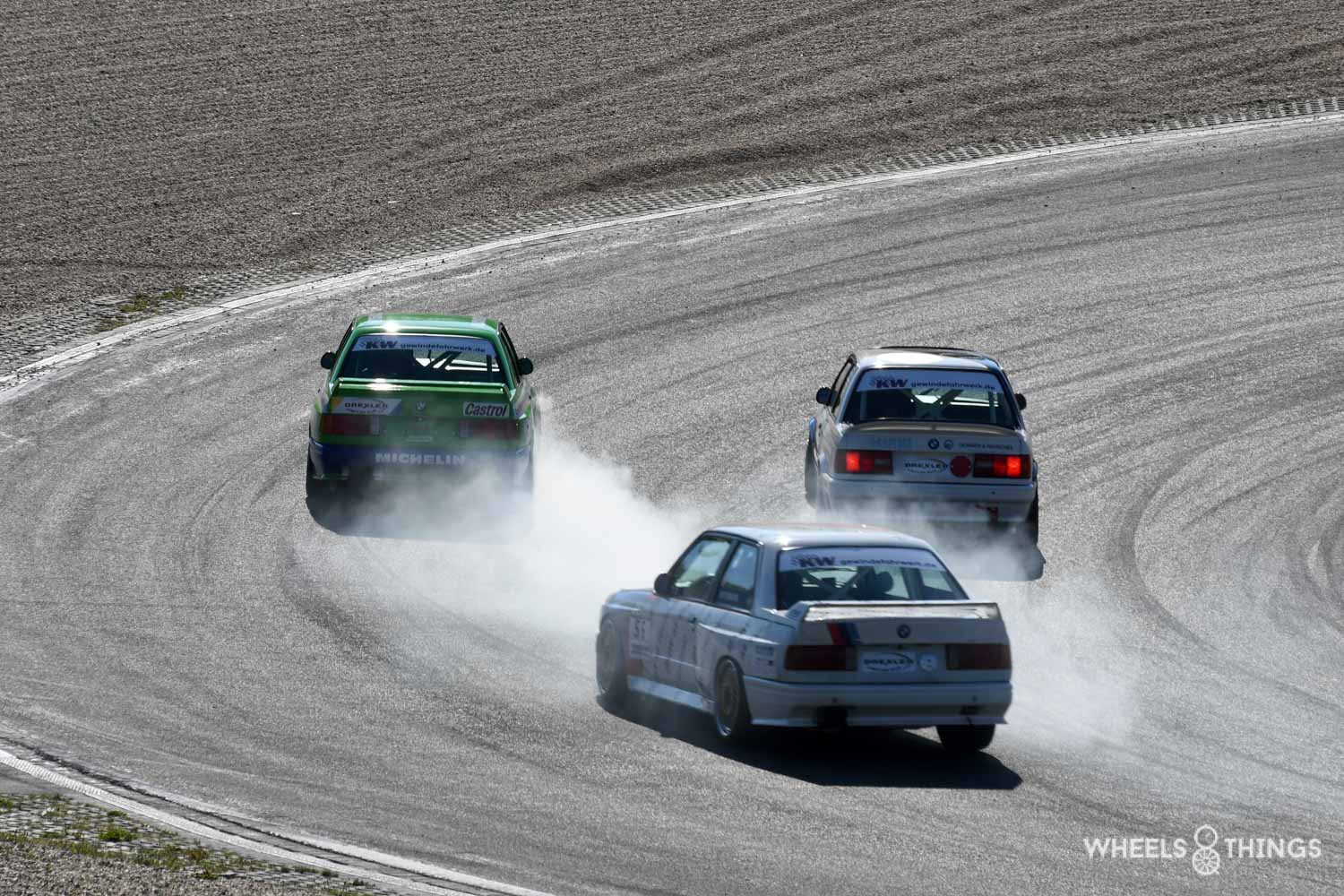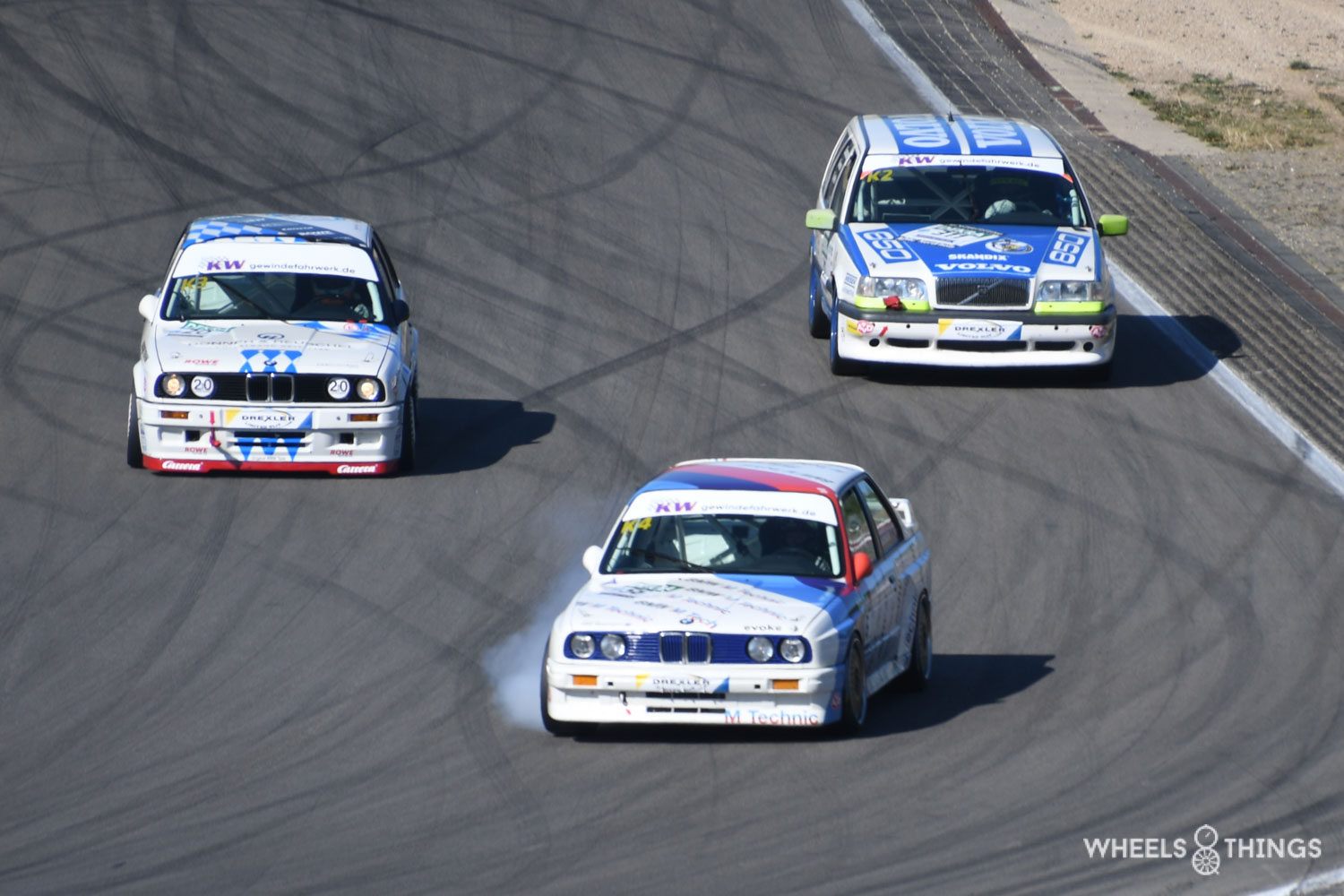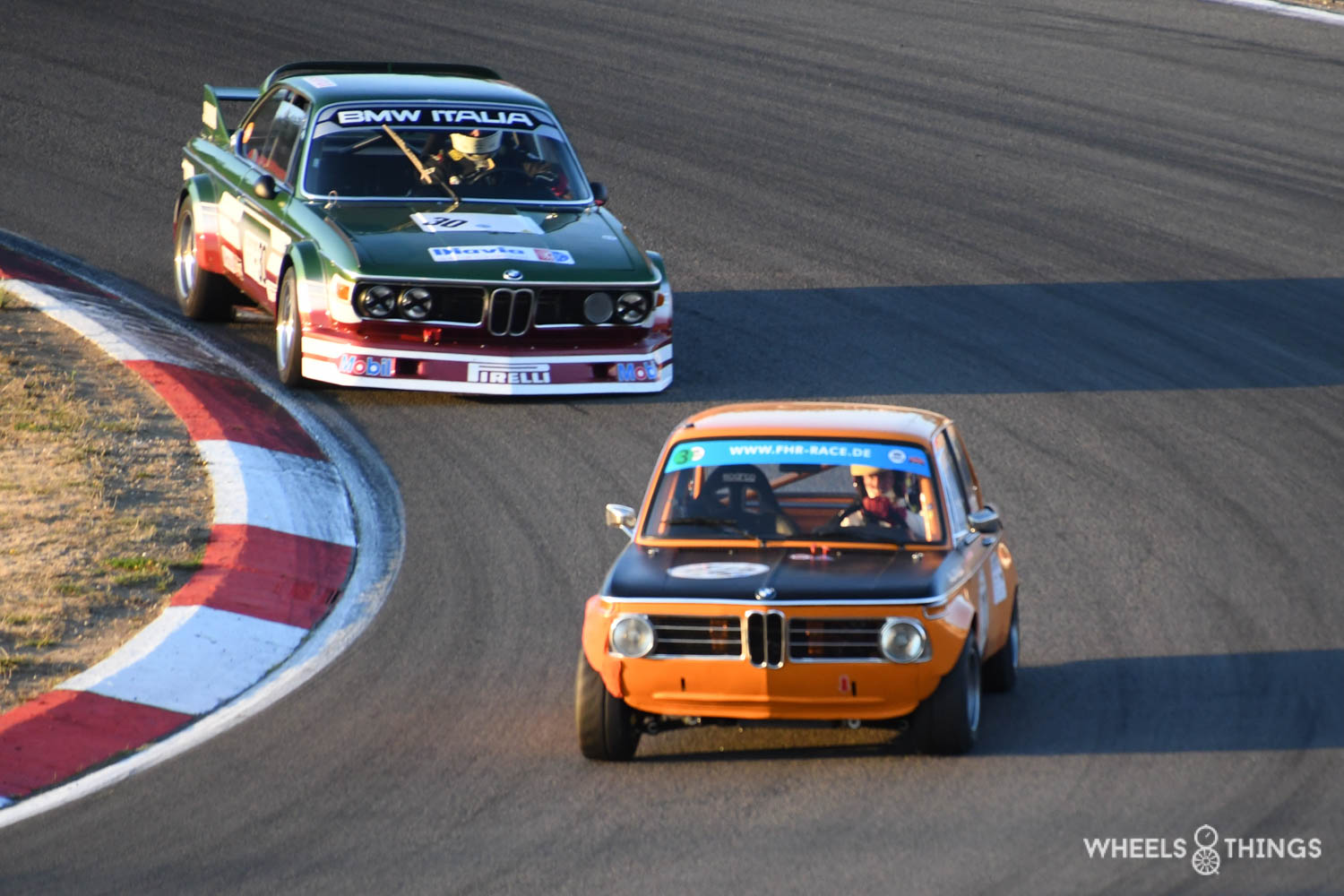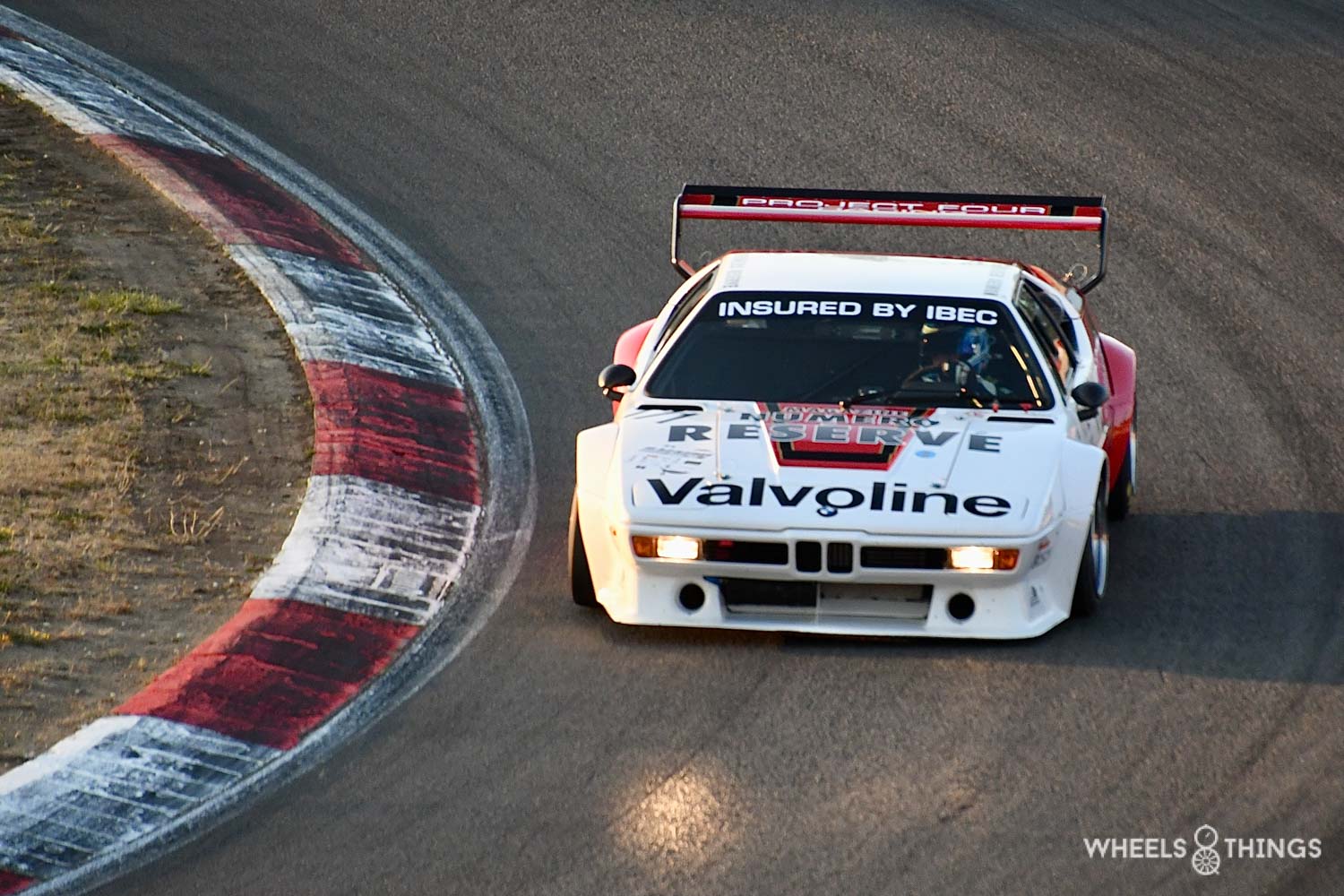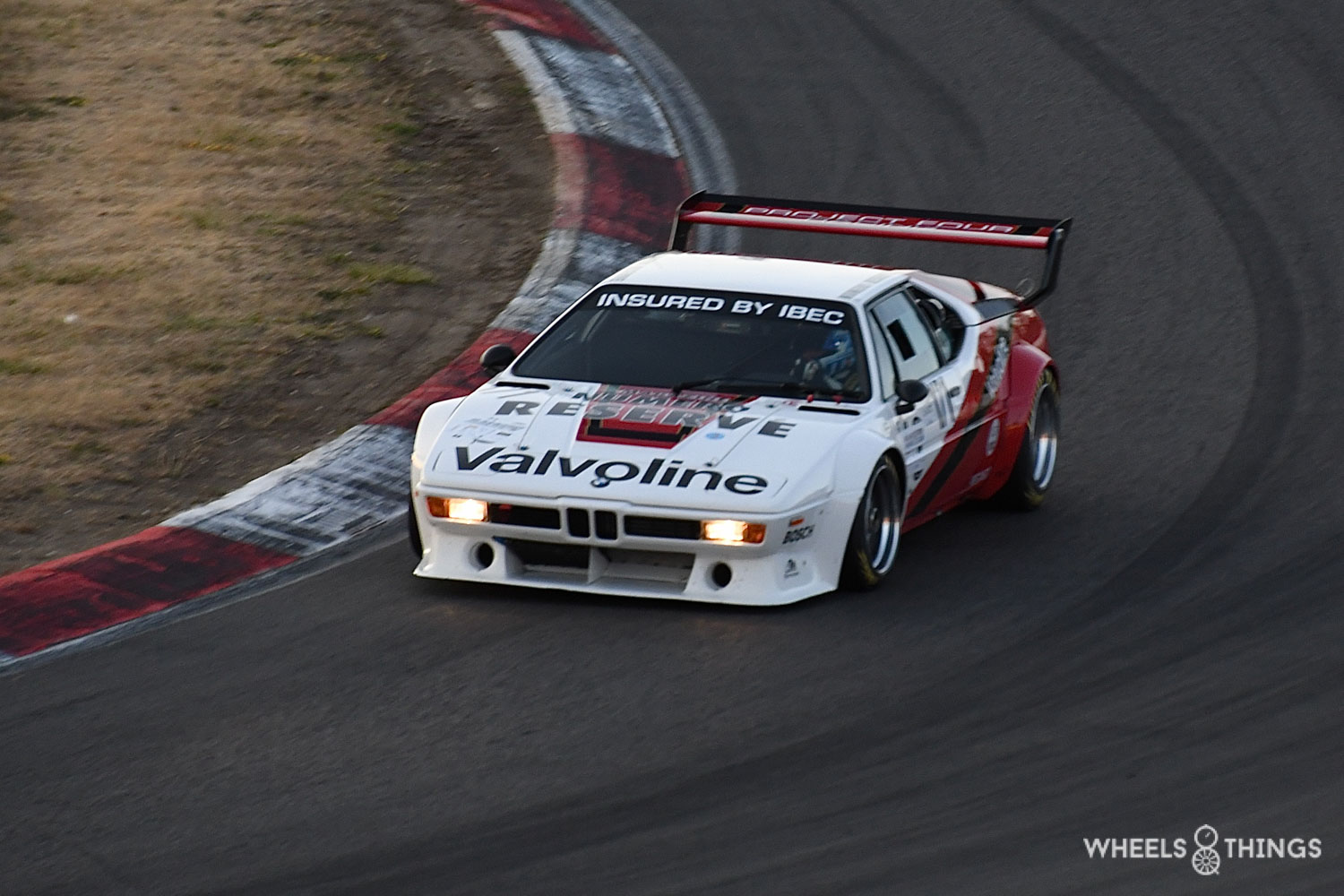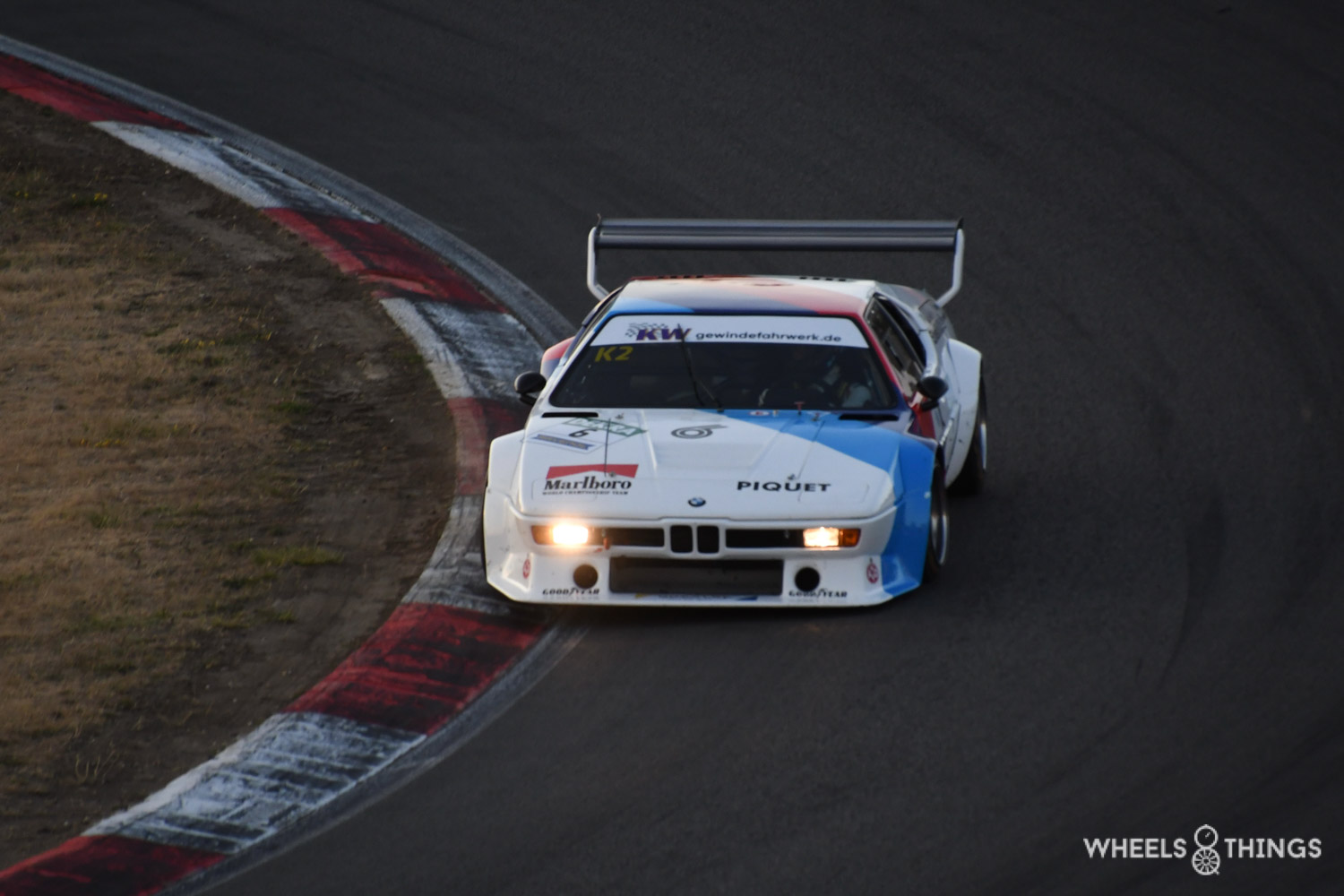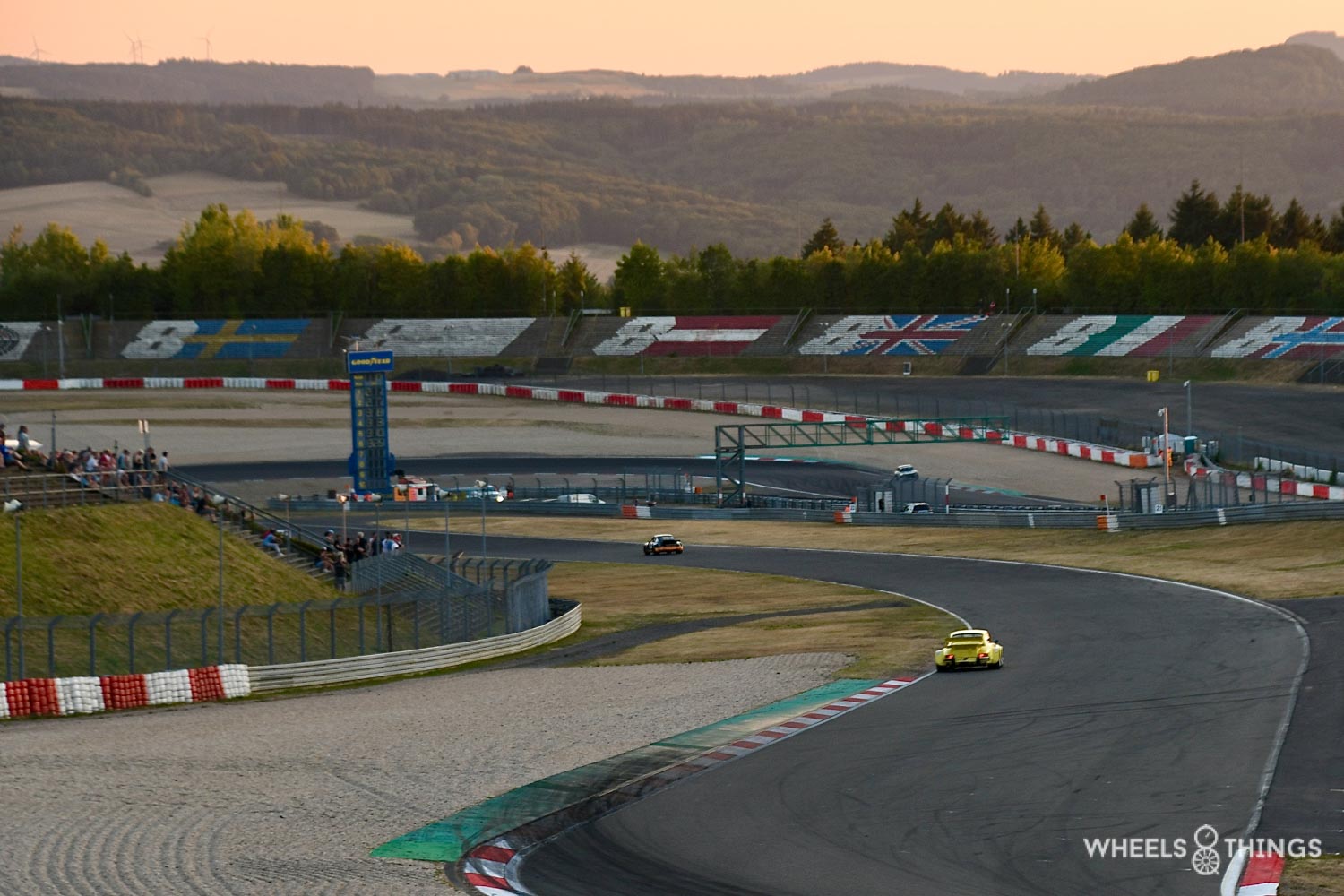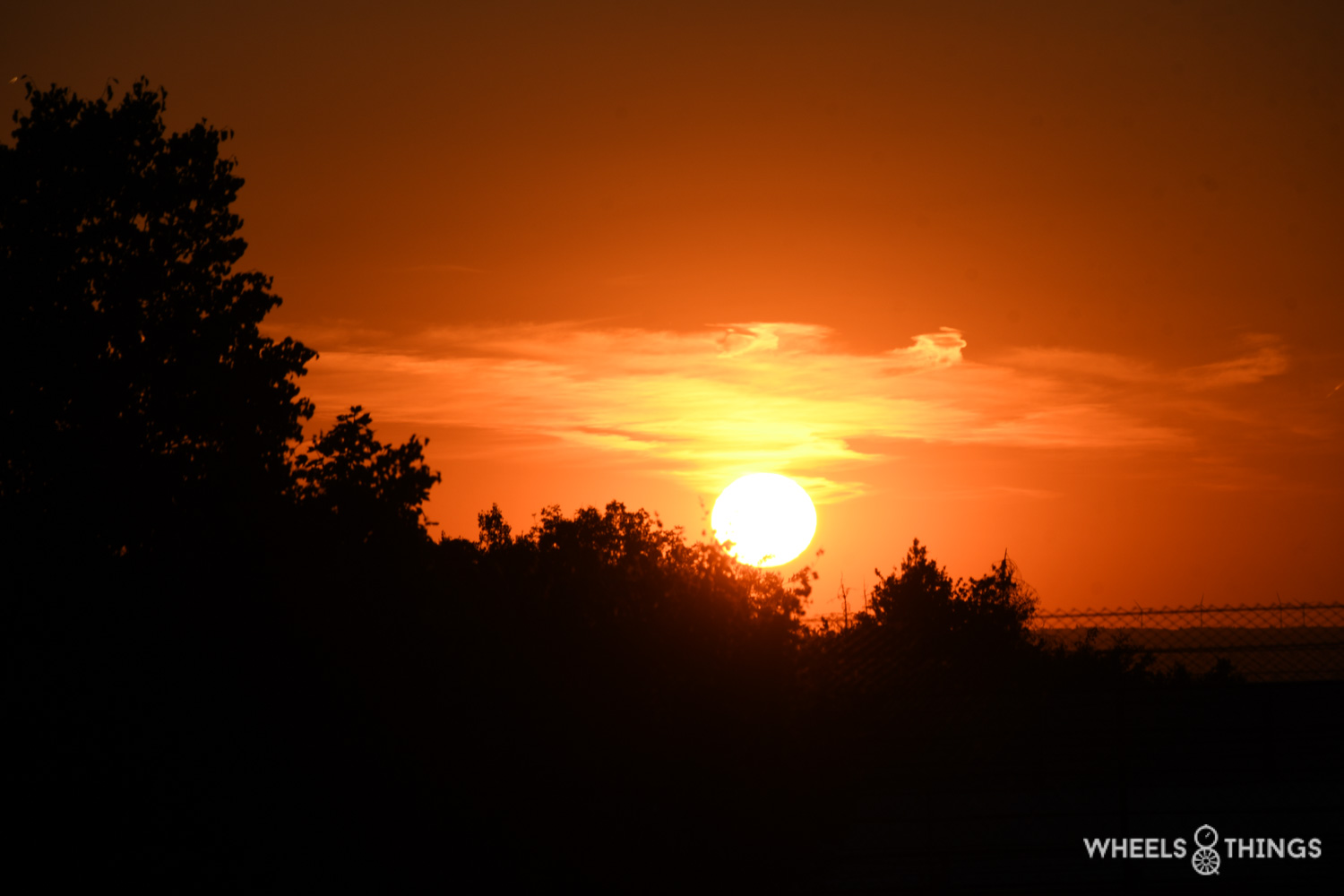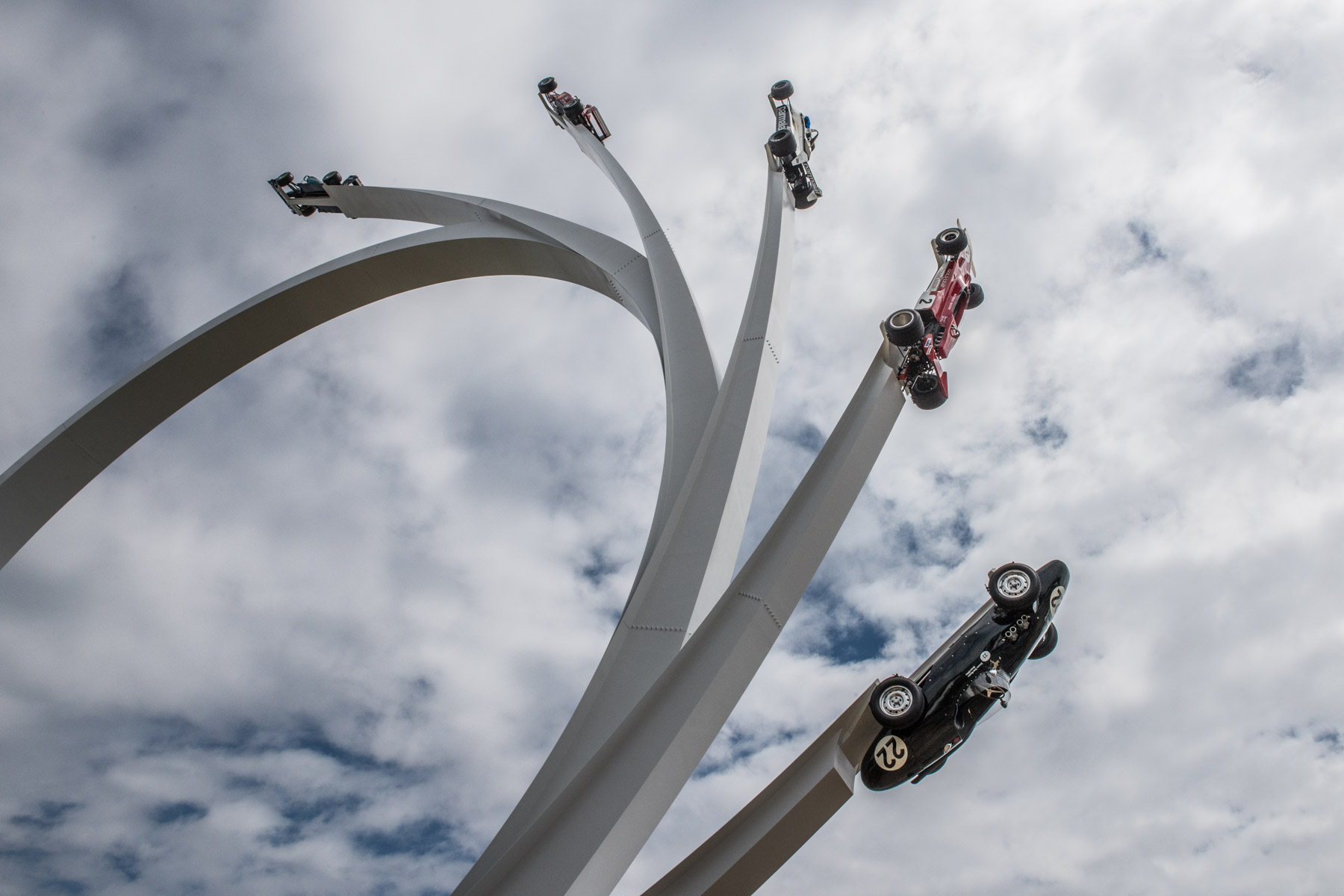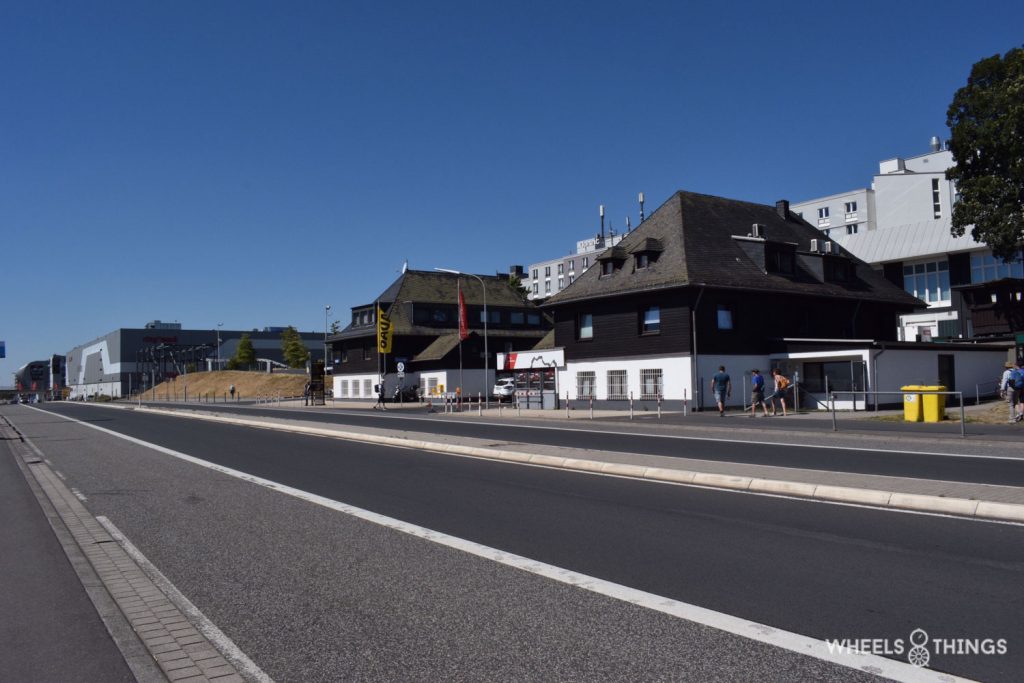
After two difficult years, in 2020 and 2021, there was once again a full OGP at the mythical Nürburgring. In 2020, after the first covid lockdown, there was a “light” edition with a smaller programme with fewer participants and very limited public access.
You can read more about this OGP here. Last year, there were no historic races at all in August because the region around the Nürburgring was declared a disaster area after the severe floods in July. The accommodation of the circuit was then used as an emergency centre for the relief effort. Today, the region is still under reconstruction.
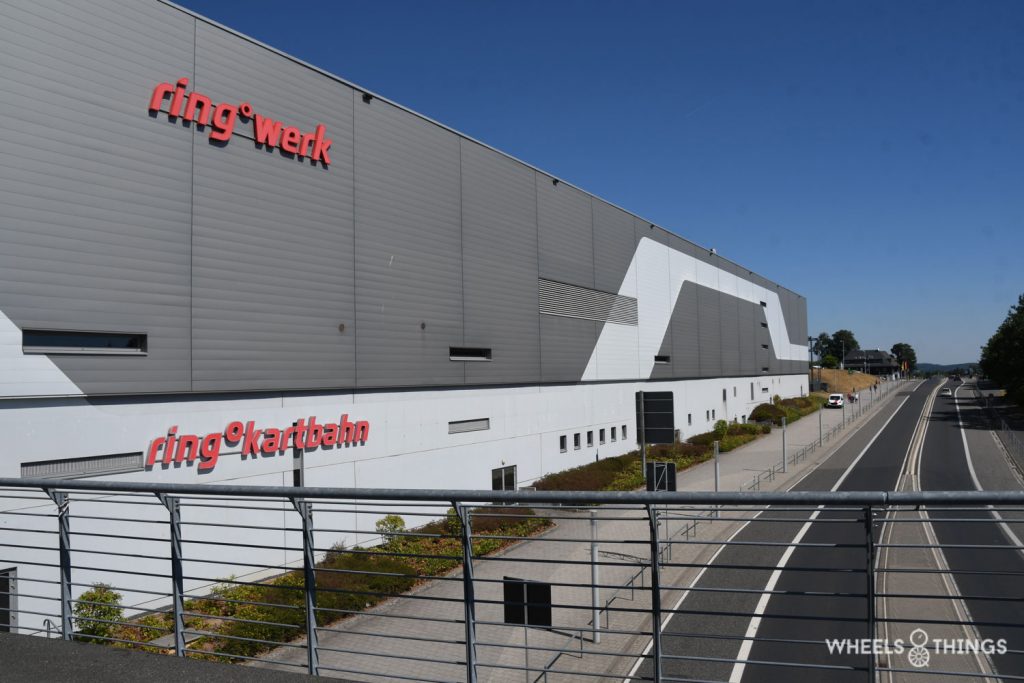
The OGP is a mix of typical German races, such as the DTM and DRM, supplemented with the well-known series of the English Masters Historic Championship. This composition is quite unique in historic racing and makes an annual visit always worthwhile.
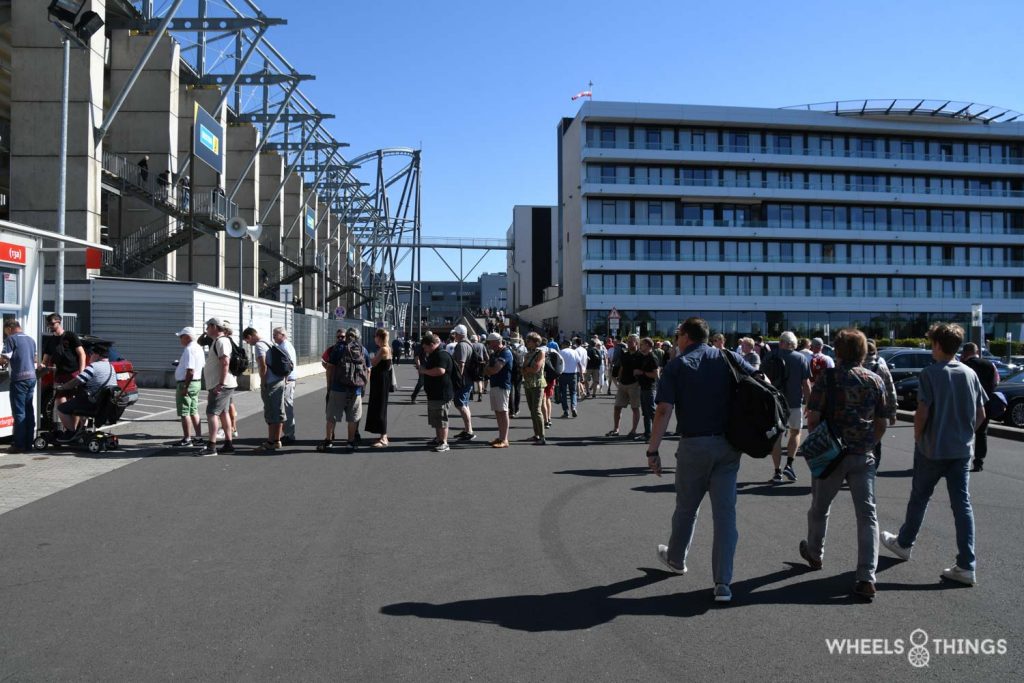
And the German fans were clearly very much looking forward to it: long queues at the car parks and ticket offices were clear evidence of this.
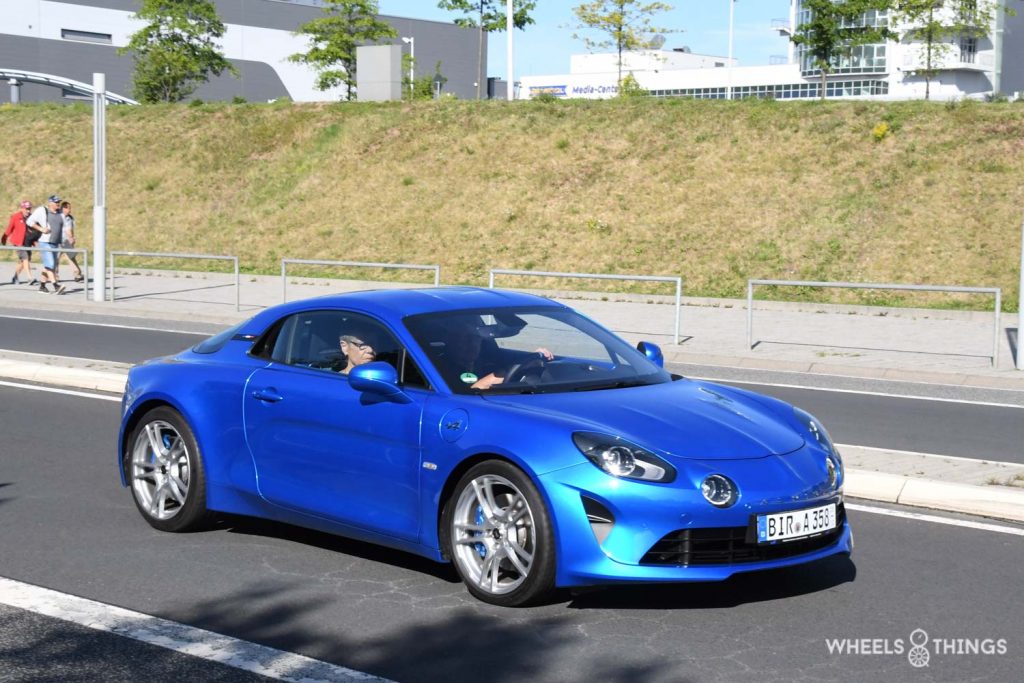
The Nürburgring: it is a special location. Located in the Eifel Mountains, almost the entire region breathes and experiences motor racing as a top priority. When you walk along the boulevard that leads to the circuit, you see countless beautiful cars pass by. Beautiful old-timers, sporty cars and unique GTs: they all pass by. On Friday morning, we even saw some camouflaged Mercedes prototypes taking the exit to the Nordschleife or the “Green Hell”.
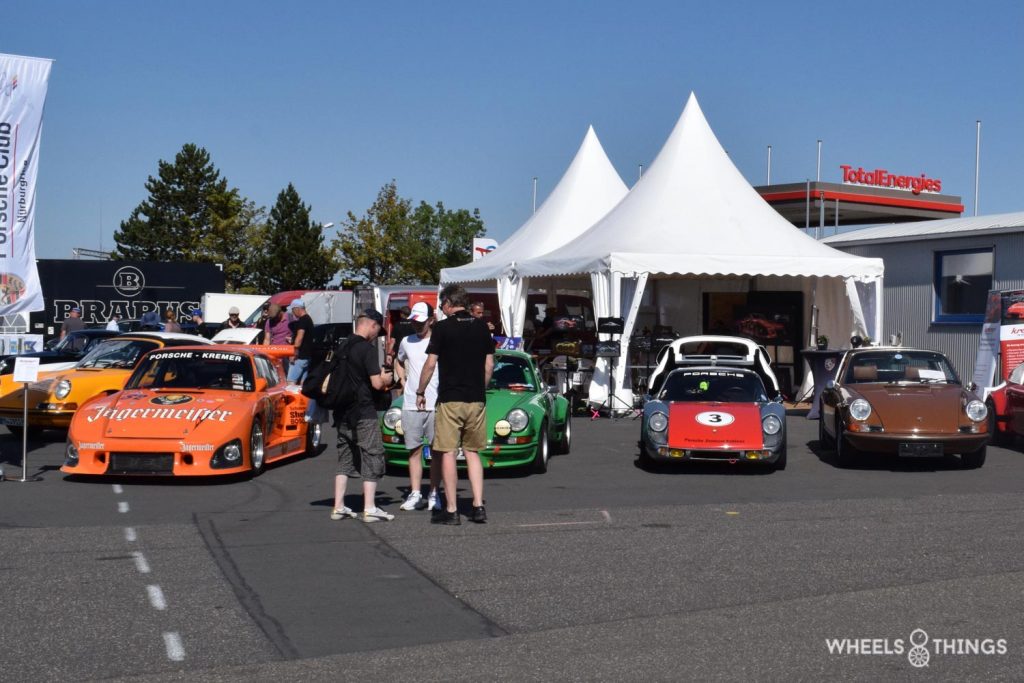
Long-time sponsor Porsche was no longer there as of this year. This meant that much less space was needed in the paddock. The VIP clients were allowed to park their favourite, mostly 911 in various versions, Porsche next to the large hospitality complex in the paddock. And they came down en masse for the OGP. A pity for the Porsche lovers, but this made it possible to use the entire circuit from now on. The spectators on the Mercedes grandstand now had a splendid overview with this large extra bend that was added. This configuration is also used for all other races at the Nürburgring. The Porsche club Germany was still faithfully on post at its fixed location next to the control tower.
DTM Classics
This class, formerly called Tourenwagen Classics, was taken over by the DTM organisation last year. From this year onwards, they will be running in the DTM’s supporting programme. Spa-Francorchamps is also on their programme in early September. Only for the OGP an exception is made and so the typical DTM cars, such as the BMW M3, Audi V8, Opel Calibra, Ford Sierra Cosworth and the Mercedes 190, which competed from 1984 to 1997 for the much fought-over DTM Cup, appear on the OGP. Besides this DTM violence, also group A cars and the Supertourer 2 litre formula ( STW in Germany ) are admitted. This makes for a very nice mix and field. The ex WTCC cars are refused by the DTM organisation. A pity.
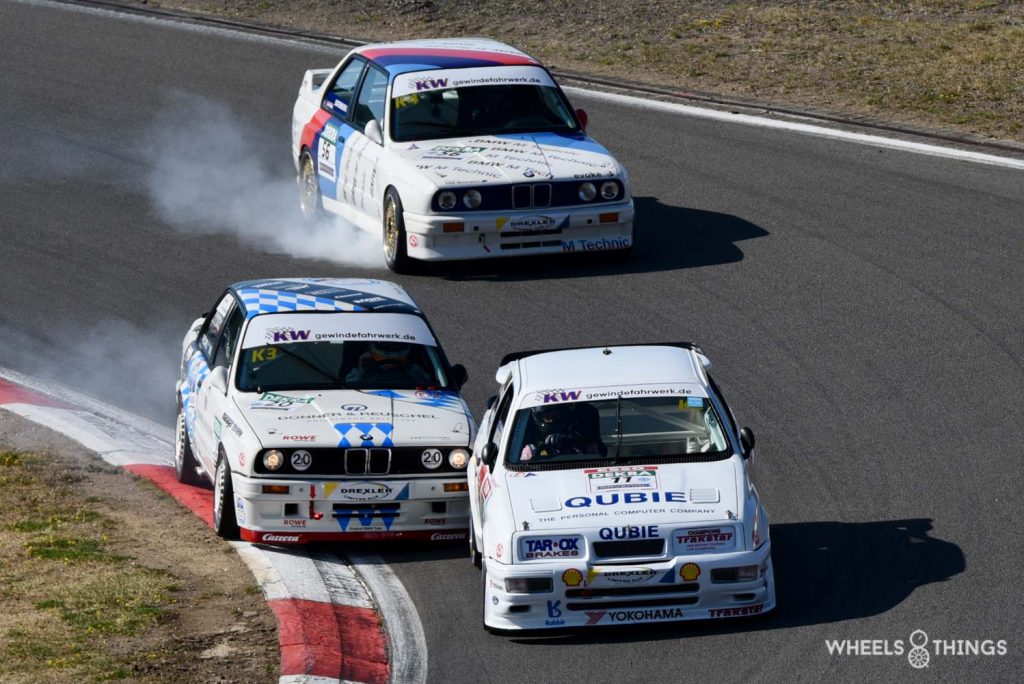
The DTM format includes two races per day with one morning qualifying session per race. On Saturday, we witnessed one of the most spectacular races in this series in years. Many duels, overtaking manoeuvres and late braking ensured a lot of action. Several groups of 3 to 4 participants were formed and fought as if there was a gigantic prize pool to be won. And this was certainly not the case. On Saturday, the victory went to the Ford Sierra Cosworth of Ronny Scheer, who could stay half a second ahead of the BMW M3 Schnitzer of Steffen Lykke Gregersen.
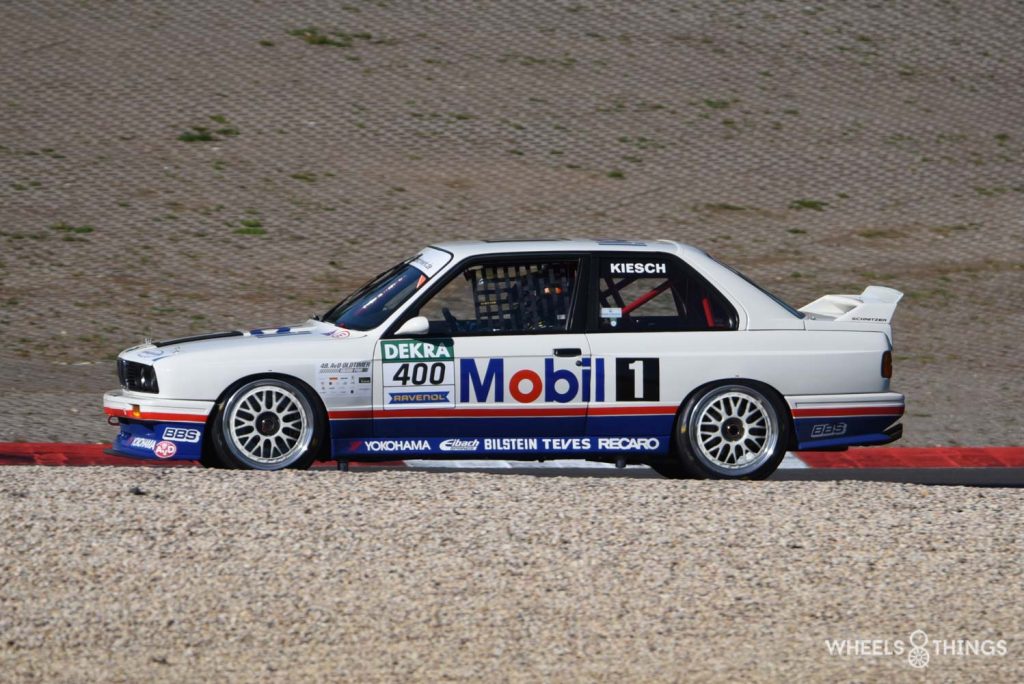
On Sunday, the roles were reversed and the M3 was half a minute ahead of the Ford. The starting field was also considerably reduced on Sunday. Several participants, plagued by mechanical problems, went home after the first race.
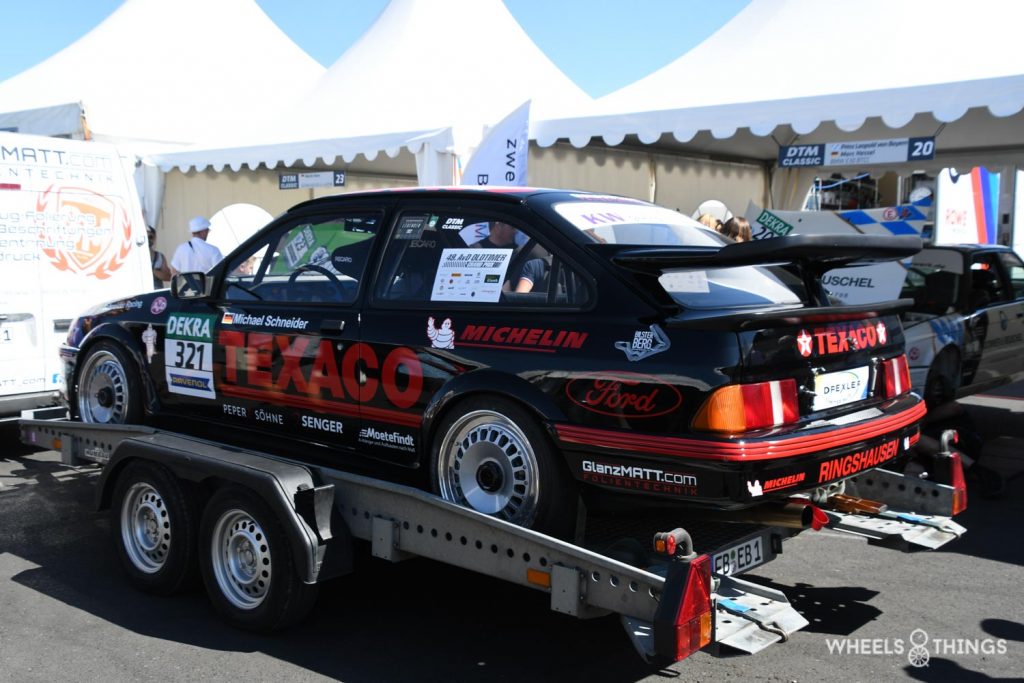
And they were not the first, for on Friday we had already seen a Ford Sierra Cosworth from Ringhausen take its place on the trailer to start the homeward journey.
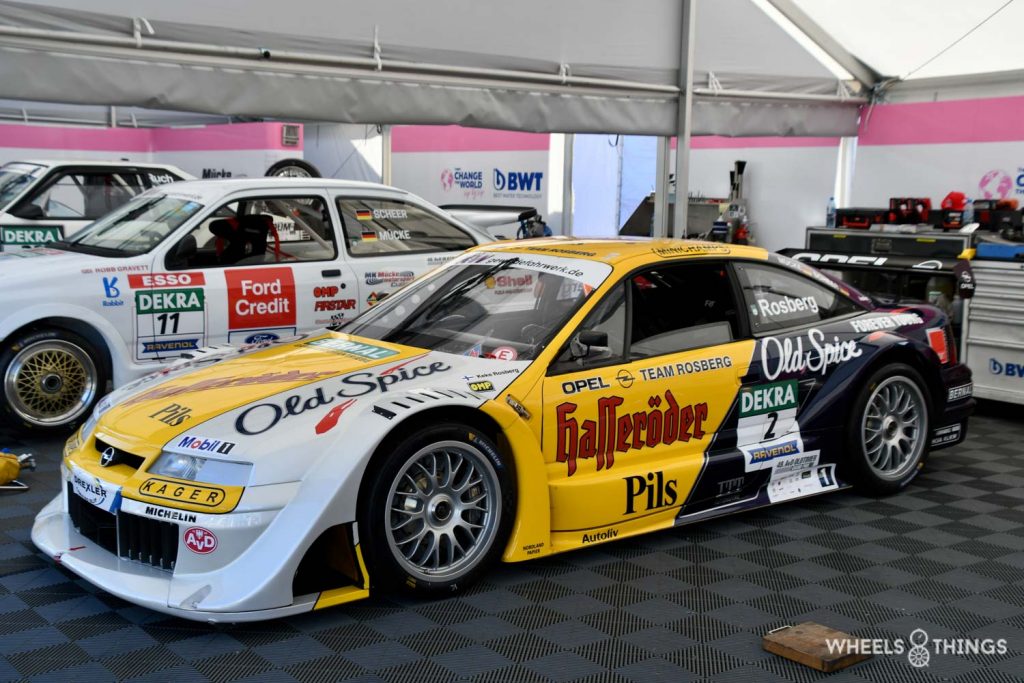
The ex-Joest/Keke Rosberg Opel Calibra of the Mücke team could also only complete a few laps in the practice sessions. The team is still struggling with the reliability of the Calibra. Once these are overcome, this Opel will certainly be a candidate for victory.
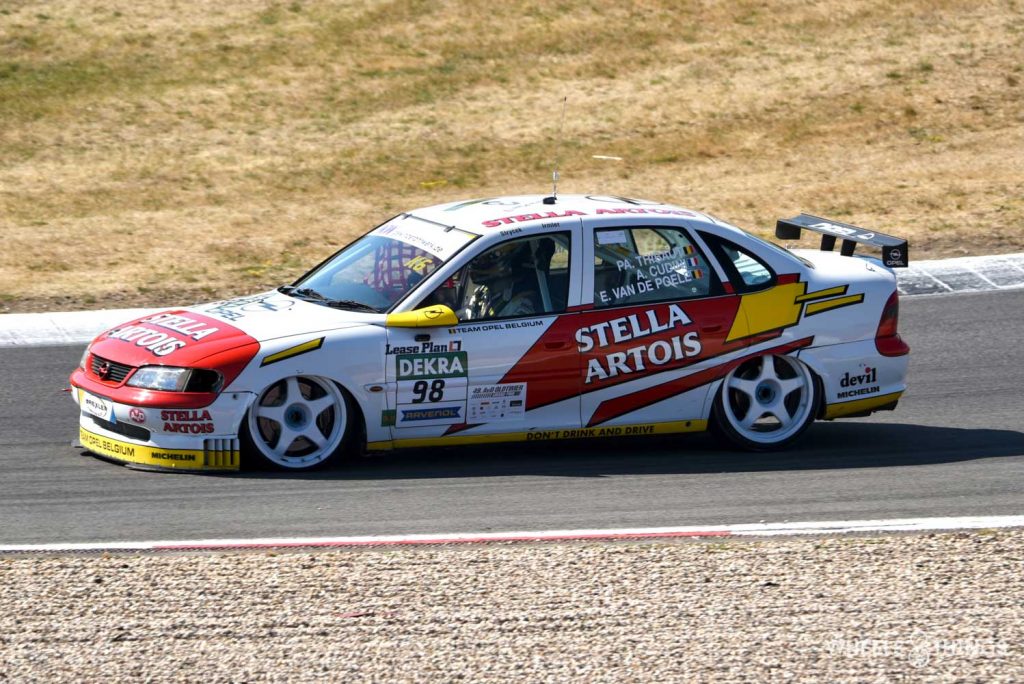
There was also a first Belgian flavour in the first race on Saturday, where we saw an Opel Vectra in Stella Artois livery among the participants. This Vectra had participated in this configuration in the 24 Hours of Francochamps and the Belgian Procar Championship in 1996. At the start of the 24 hours, Pierre Alain Thibaut was able to outsmart the BMW’s and take the first exit of the Raidillon. Unfortunately, after one lap it was all over for this beautiful Vectra.
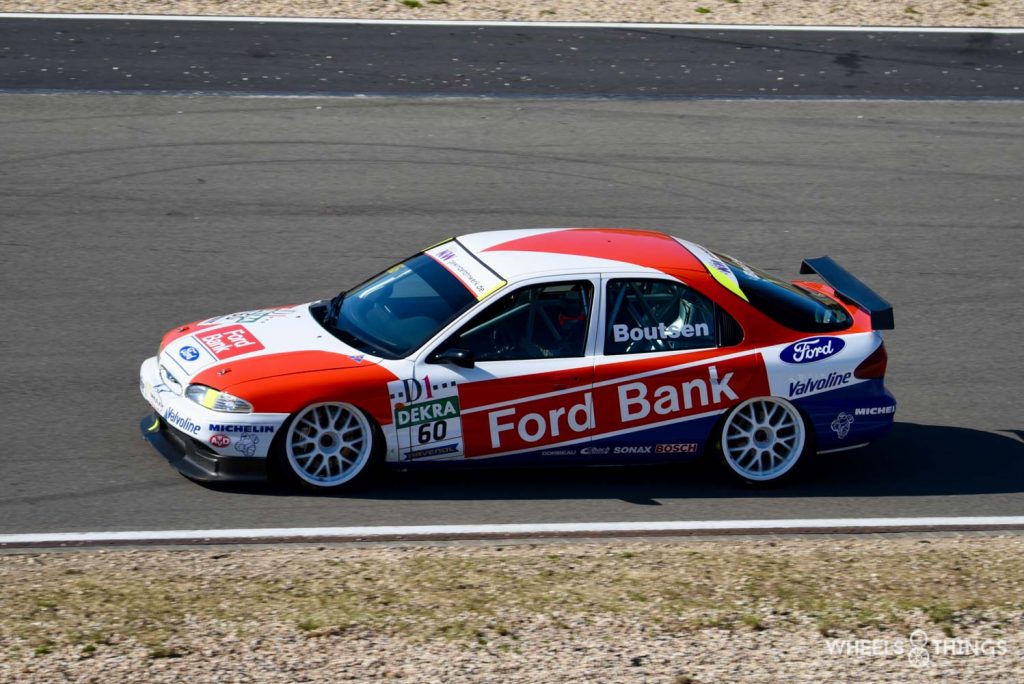
Still Belgian and this with one of our most famous pilots: after Jacky Ickx, Thierry Boutsen is our most successful pilot. After a wonderful F1 career, Thierry competed for 2 years in the German STW Championship with a Ford Mondeo from the Eggenberger team. A “Boutsen” Mondeo, year 1995, was among the participants.
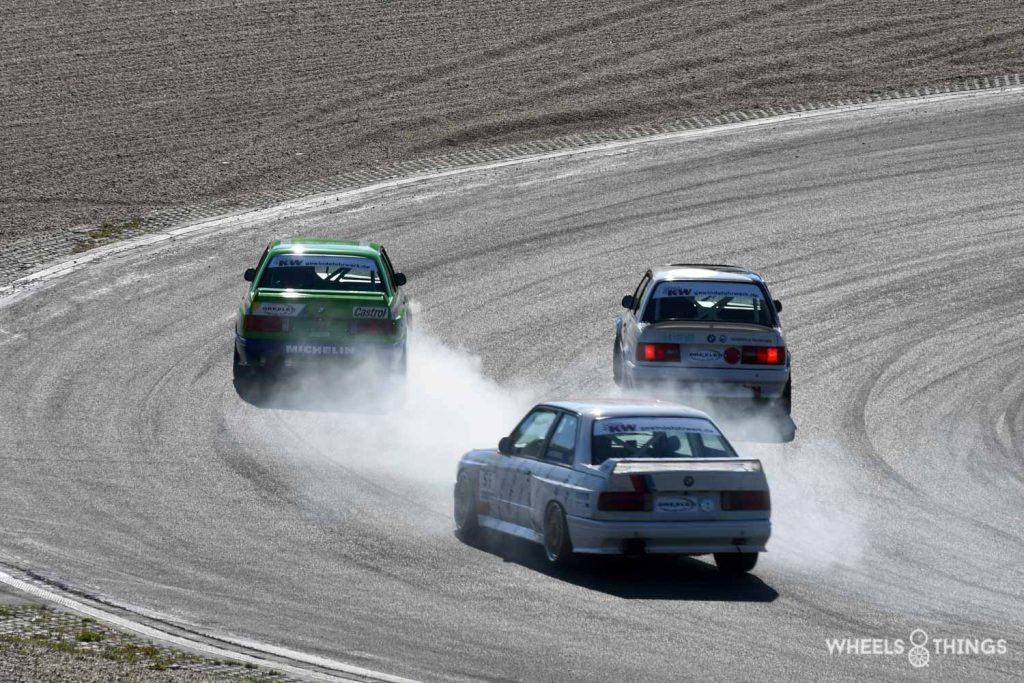
These DTM races were undoubtedly the most beautiful and exciting races of the weekend. From 9 to 11 September, these gentlemen will be our guests at the Spa-Francorchamps circuit. We can certainly recommend a visit.
DRM
Before the DTM there was the DRM championship in Germany. Once started with touring cars and GT’s according to the then group 2 and group 4 ( GT ) championship. In the middle of the 70’s these were succeeded by the fat group 5 cars and in the beginning of the 80’s there was an attempt to run this championship with real group C cars. However, this formula was quickly discontinued due to too expensive and a lack of participants. Afterwards, this series was succeeded by the DTM that was mentioned before. Except for the Group C cars, all these exotics are allowed to participate in these DRM Revival races.
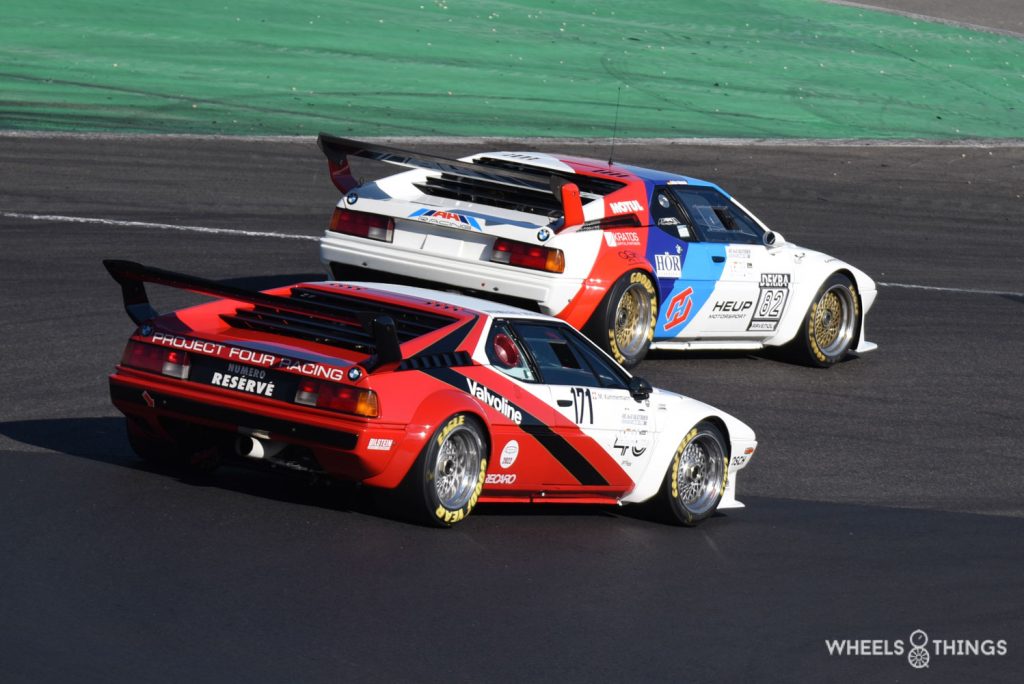
Apart from a few Alfa Romeo’s, it is also almost a complete starting field provided by German manufacturers. Porsche, with its 911 ( Carrera RSR, 934 turbo and 935 K3 ), takes care of almost half of the starting field. The colleagues from BMW are not inferior with their 2002, 30 CSL, 320 turbo, 635CSi and M1 Procar. Ford takes care of the rest with a few Escorts and the mighty Zakspeed Capri turbo.
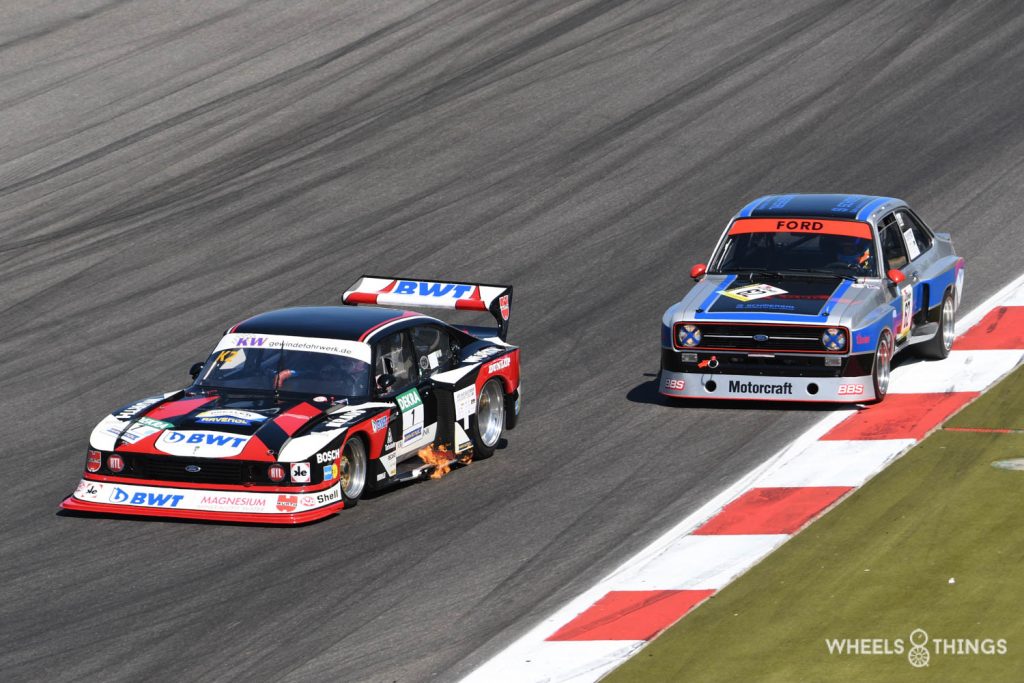
Both DRM races were held on Saturday. The first in the morning at the start of the race programme and the second at dusk with a setting sun. The battle for victory was between the Ford Capri Zakspeed turbo of father and son Mücke and the BMW M1 Procars of Michael Kammermann and Achin Heinrich.
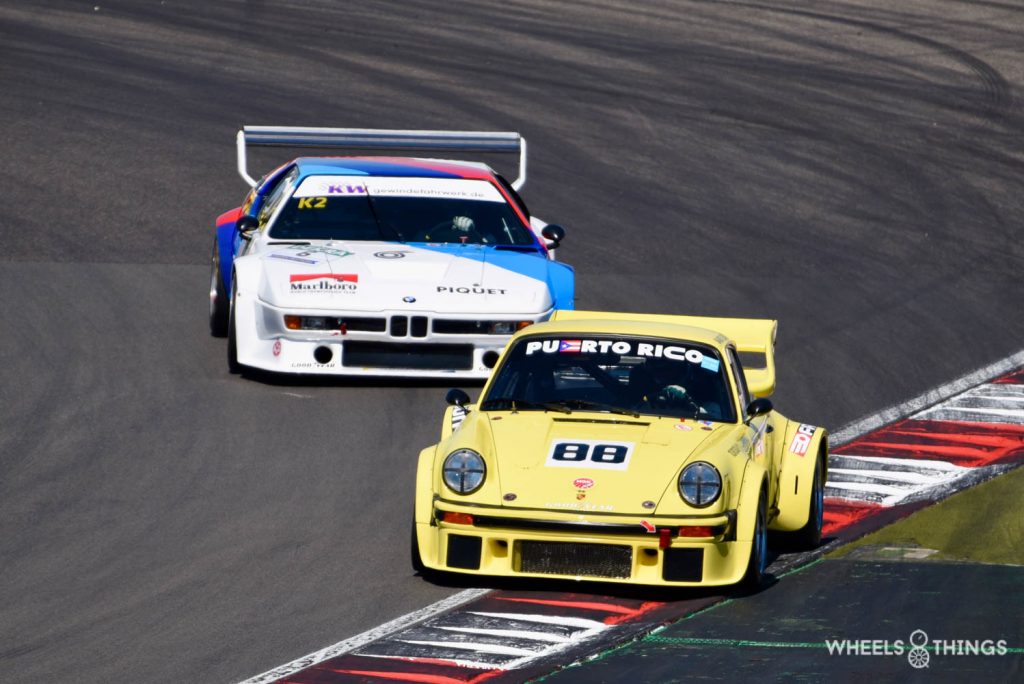
In the first race, the Ford Capri is on the way to victory but has to retire three laps before the end with technical problems. Kammermann’s M1 wins by 0.2 secs ahead of Heinrich’s M1.
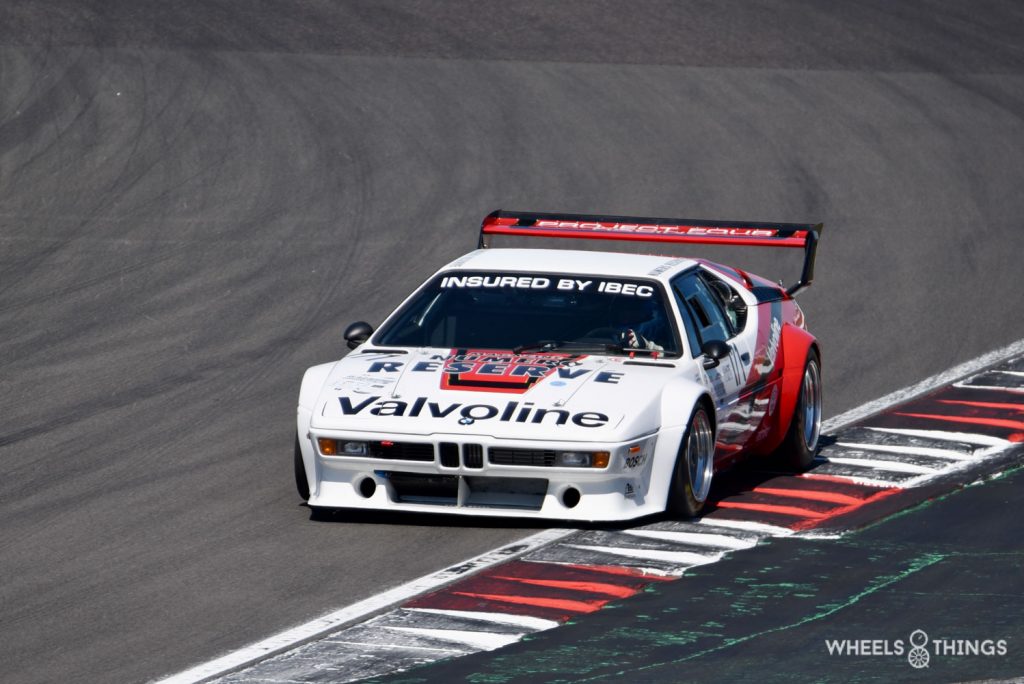
On Sunday, the Capri held its own. Mücke crossed the finish line ten seconds ahead of Kammermann as the sun was setting. The three M1s in this race provided the best sound of the weekend.
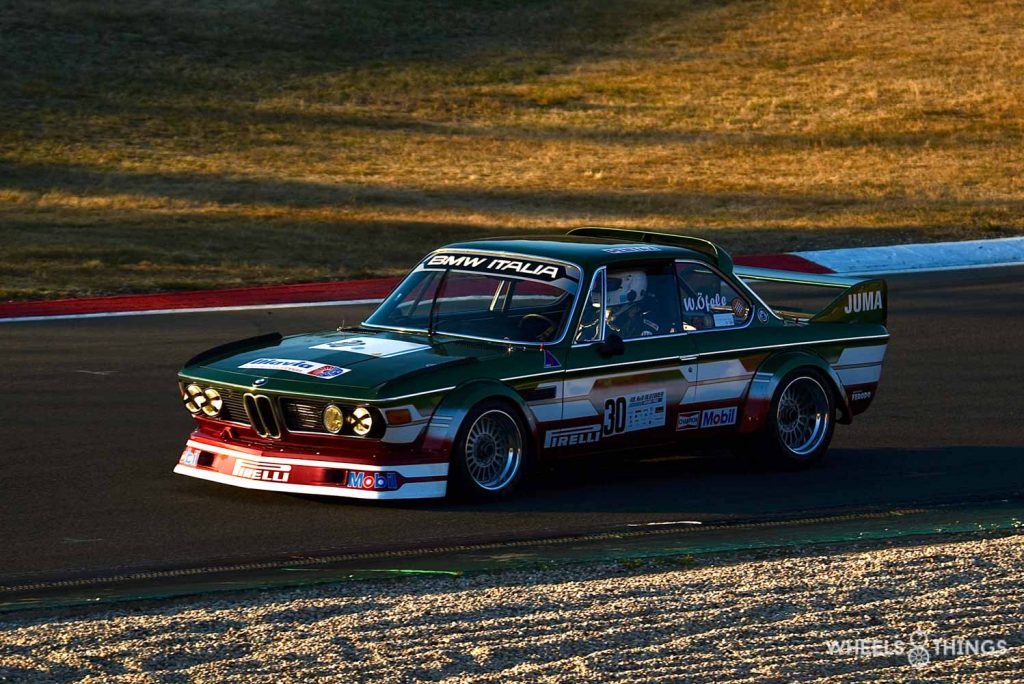
MASTERS RACING LEGENDS – HISTORIC FORMULA 1
Most of the series of the Master Series were not very well populated. With only 17 Formula 1 cars, this was even a rather weak starting field. Maybe the date change of the Silverstone Classic was the reason for this. (Normally end of July and this year end of August) The announced Tyrrell P34 six-wheeler did not show up but with the 1981 Lotus 88B we did have a unique entry on the list.
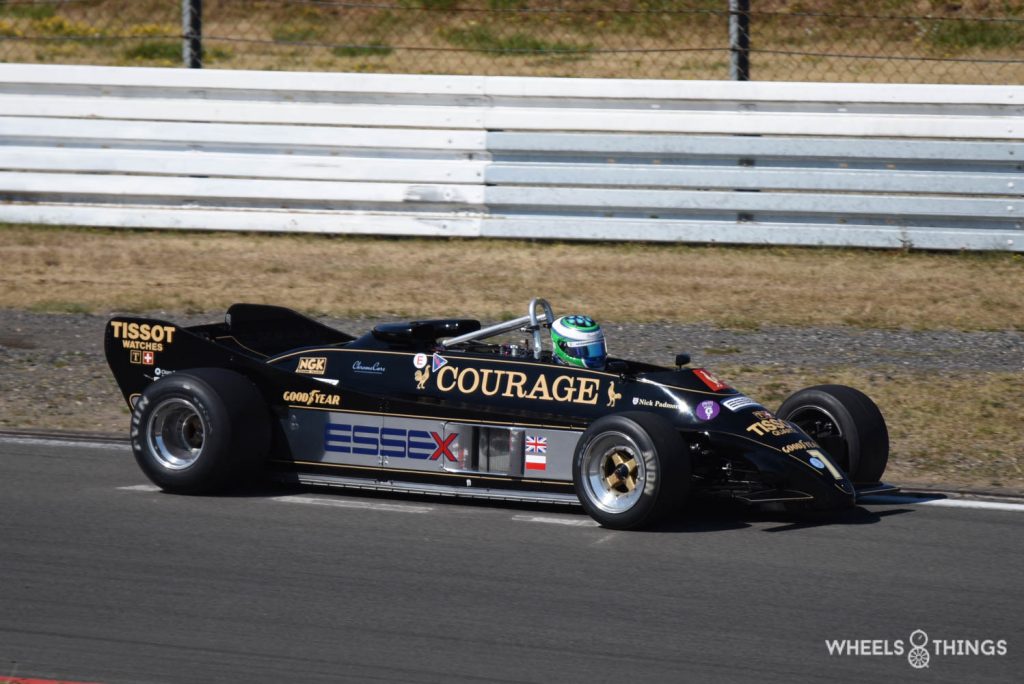
After banning the side skirts, Lotus genius Colin Chapman had the idea of designing a car with a double chassis. He wanted, through this system, to compensate for lost downforce. However, his car was rejected four times by the technical controllers to start a Grand Prix in 1981. The 88B disappeared and the 87 took over. After 41 years, we now see one of the two 88B models built appearing in the Masters Series. Lotus was the most represented brand in this class with five examples ( 78 – 87B – 88B -91 and 92 ). Of course, all in the iconic John Player Special version.
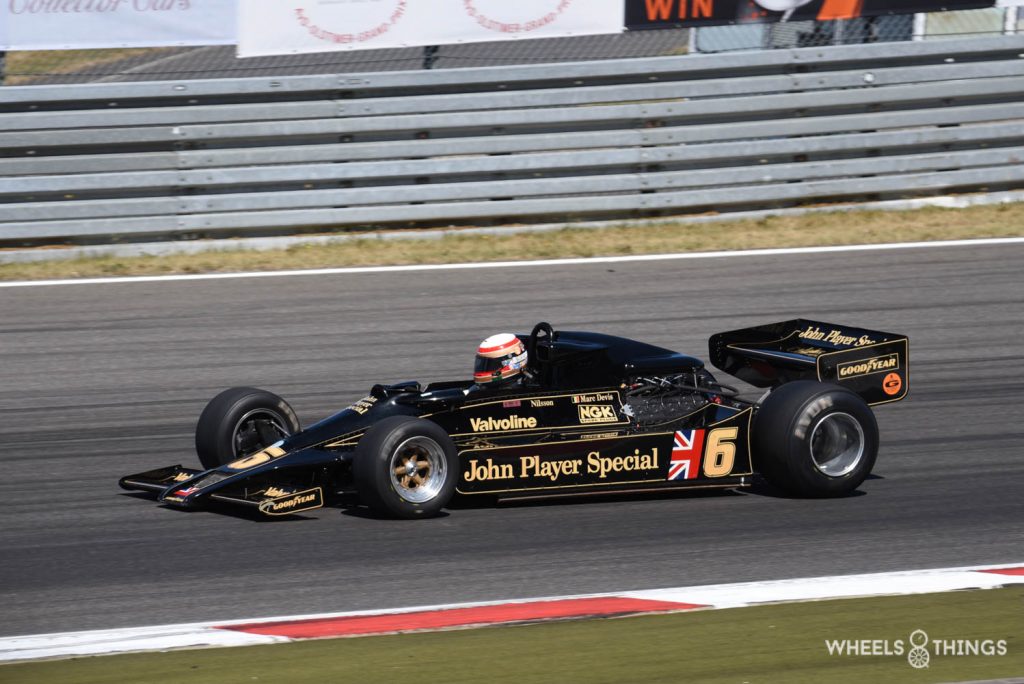
In the first race on Saturday only 13 cars took their places on the starting grid. Steve Hartley takes the lead from the start with his Mclaren MP4/1 with four JPS Lotuses on his trail. The Mclaren can keep this up for 14 laps and wins before the Lotus 88B, with double bottom, of Nick Padmore. Michael Lyons is third with the Lotus 92.
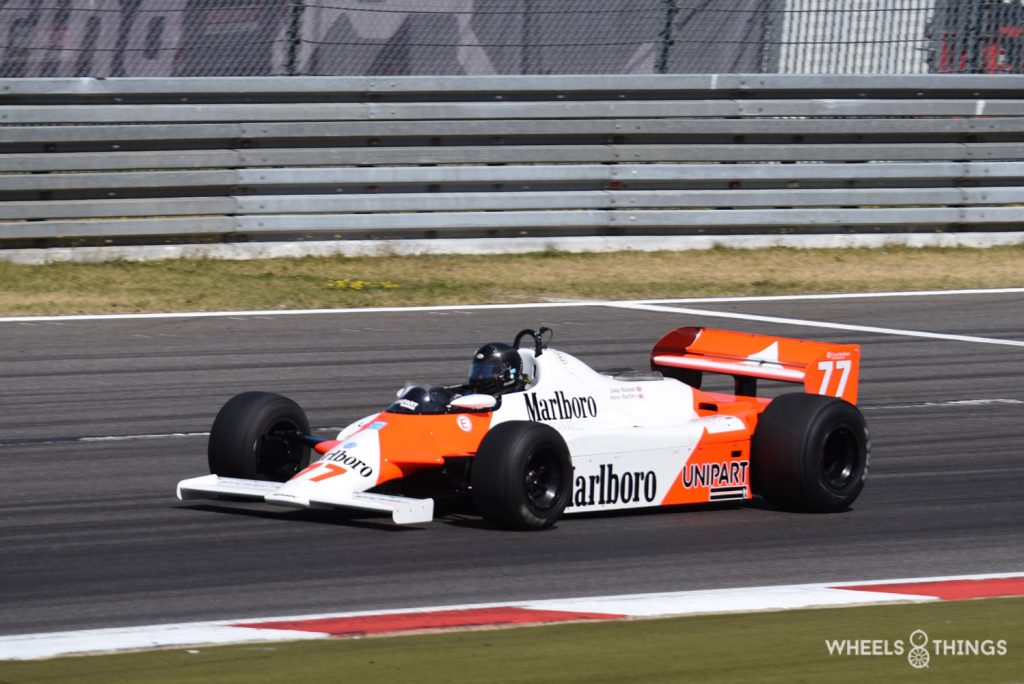
On Sunday, Marco Werner’s Lotus 87B is the strongest of the group. He wins before Steve Hartley’s Mclaren and again Michael Lyons is third with the Lotus 92. The Lotus 88B did not return to the start.
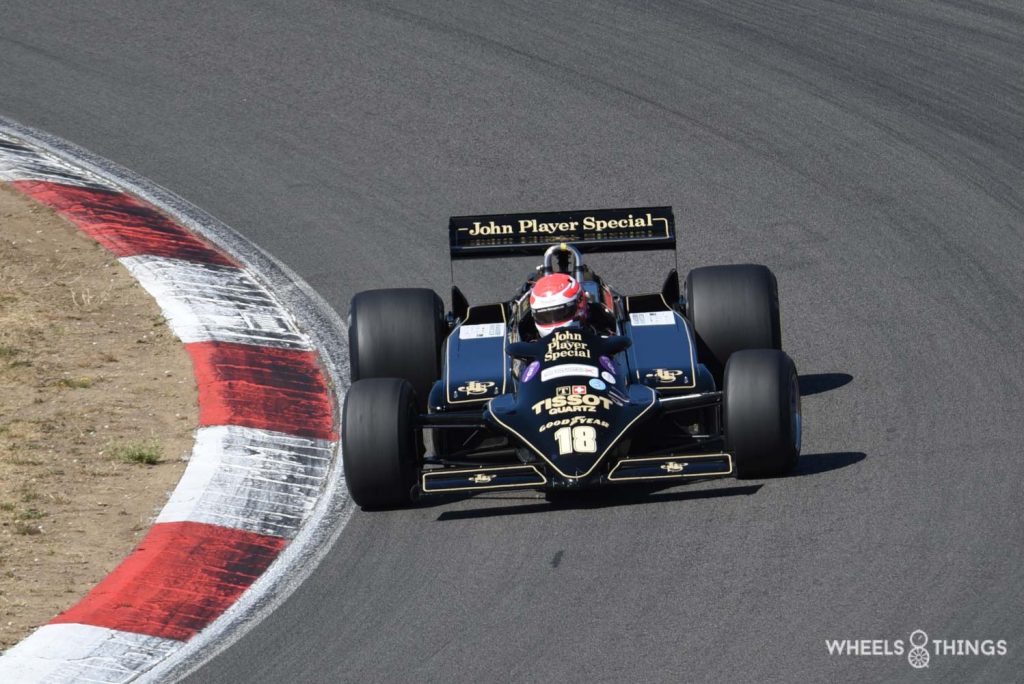
New to the field was the Mclaren MP4/1B. This is the car with which Niki Lauda made his comeback in Formula One to later become world champion for the third time. Pilot Mark Higson was fully compliant with a replica of Niki Lauda’s helmet at the time.
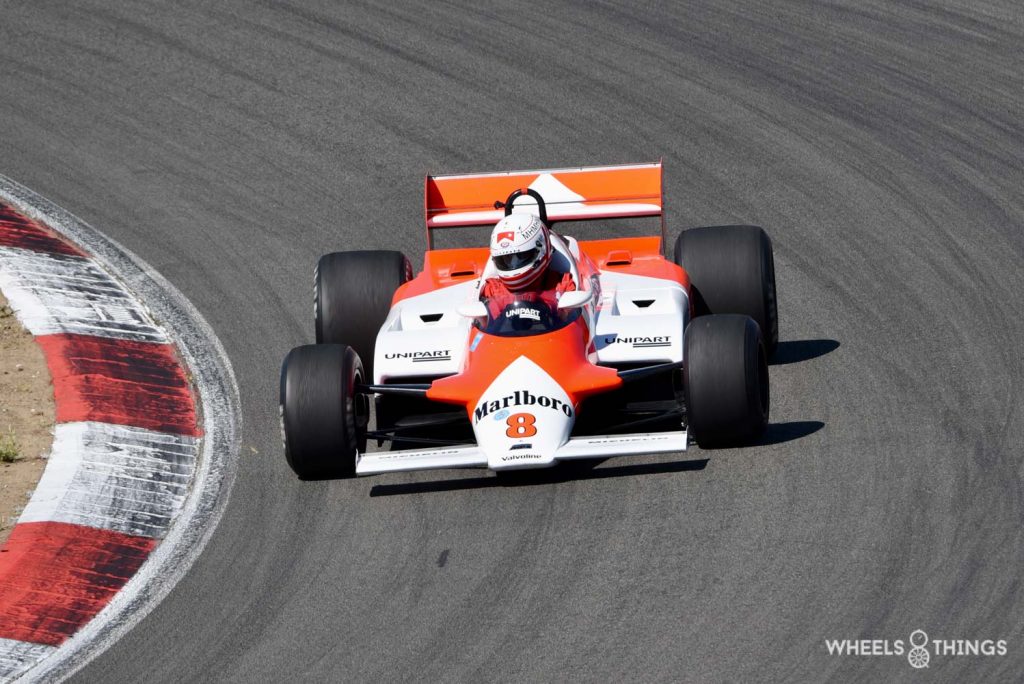
MASTERS ENDURENCE LEGENDS
Here too, with 13 participants, a rather weak field. On Saturday, Marco Werner with his Lotus LMP2 B12/80 of Chrome Cars wins without any problems and on Sunday he is also on his way to victory, but the Lotus stops three laps before the end and falls silent just after the entrance to the pitlane. The victory goes to Yannik Trautwein with an ex Patrick Dempsy Lola B12/20.
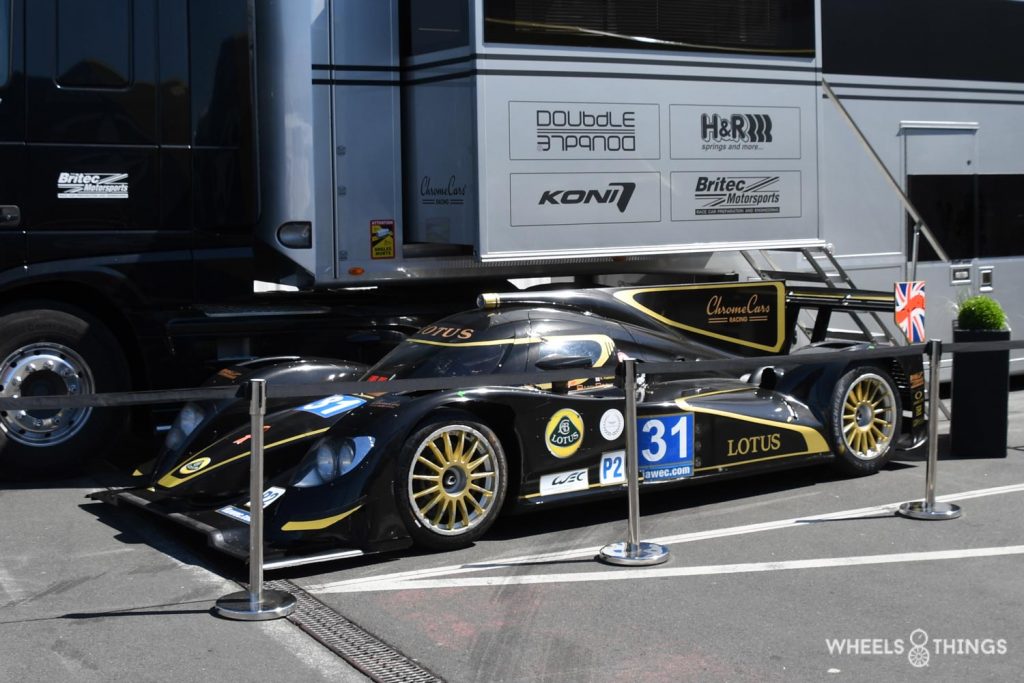
WOLFGANG BERHE VON TRIPS MEMORIAL – SHARK NOSE
The Ferrari 156 “Sharknose” is a myth in itself. The reason for this: big boss Enzo Ferrari decided to simply scrap the entire remaining fleet after the disappointing 1962 season and this was the start of a legend. The fact that none of the “Sharknose” was “alive” created the desire in some people to build one themselves or to have it done by a specialised company. Singer Chris Rea was so fascinated by it that he was the first to have a 156 built. Some others would follow. Settford & Co built some according to the original plans and with some remaining, original parts. Enzo didn’t want to know about it but today these “Sharknoses” are regular guests at the official Ferrari museum in Modena or at official birthday parties of the Italian brand.
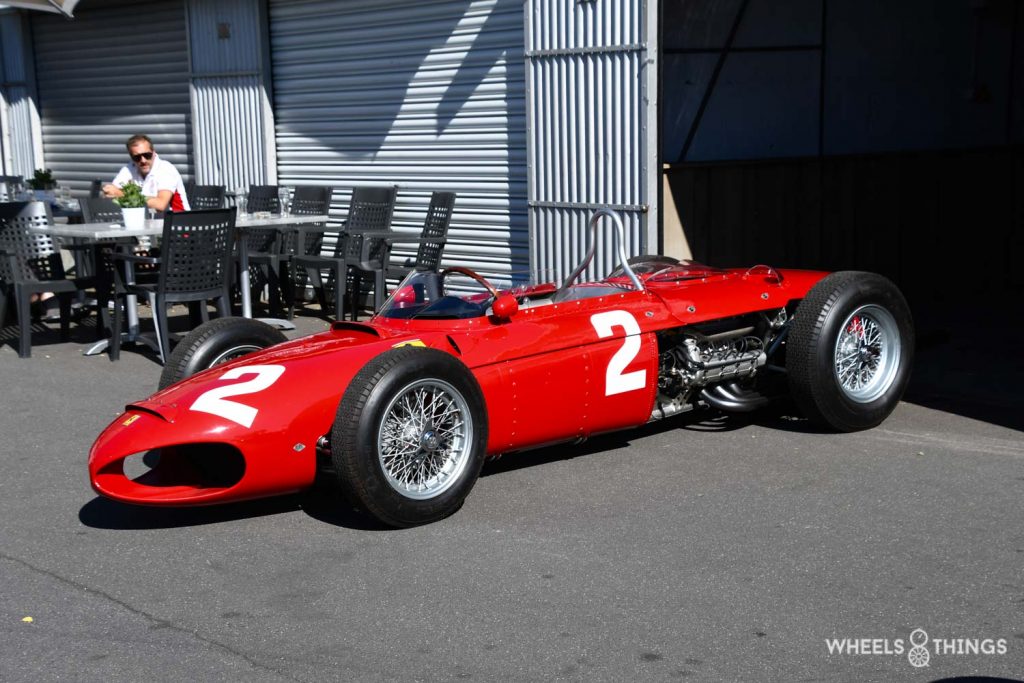
We have seen the 156 several times at the Goodwood Festival of Speed or the Historic Grand Prix at Zandvoort and this time they came to please the public at the Nürburgring with their demo laps. This demo was performed for the first time, also with Ferrari F1 cars, during the 2020 covid edition and this tradition was continued.
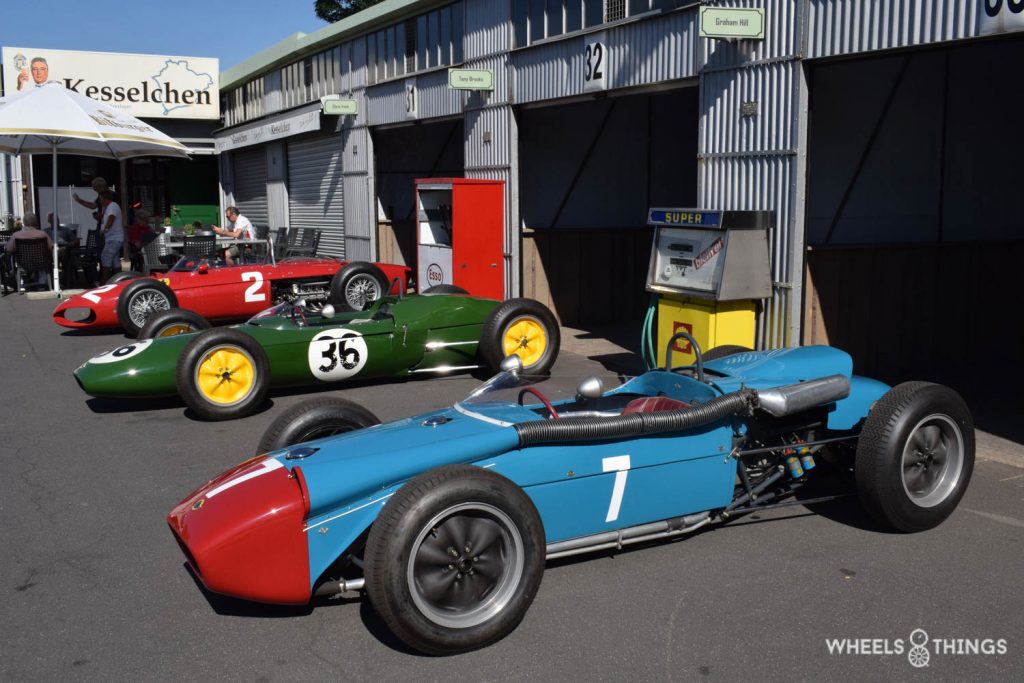
On Sunday, Arturo Merzario took his place in the “Sharknose” to do the demo laps together with some of his former Lotus opponents. Arturo is now 79 years old and his steps are a little more difficult, but when he is in the Ferrari, you don’t notice this and it is: full throttle and away!
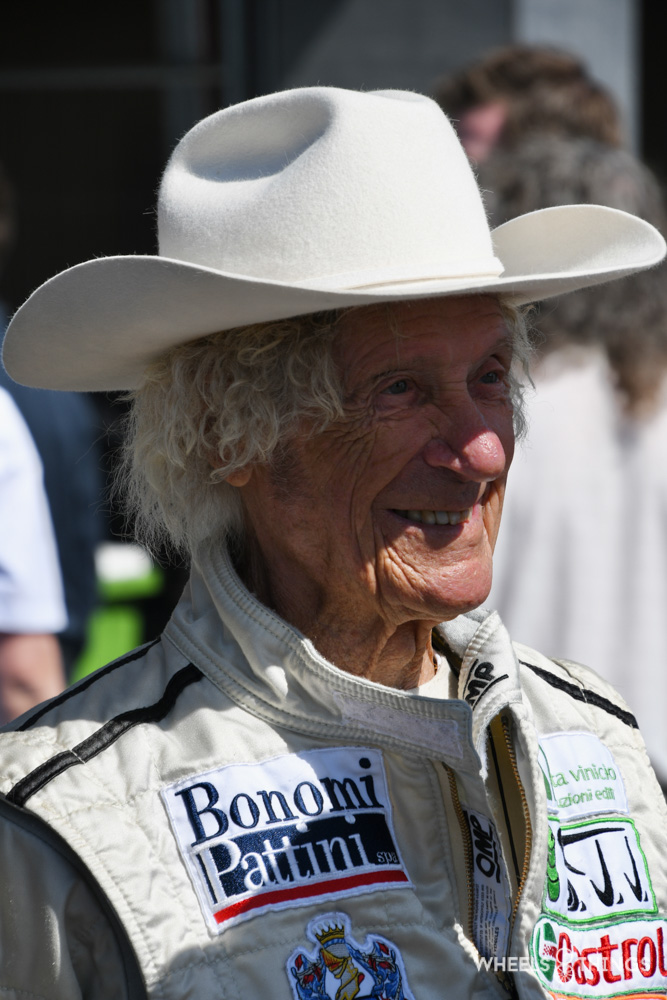
TWO-SEATER GT CARS UNTIL 1961
With 47 participants, this was the largest and most expensive starting field of this OGP. Exotic cars such as the Maserati T61 or 300 S, Jaguar D Type, Lister Knobbly, Porsche 356, Aston Martin DB4 GT, Porsche 904, Bizzarrini 5300 GT, Alfa Romeo Giullia TZ1 and Ferrari 250 SWB would compete in a one-hour race on Saturday evening after a pre-1970 Le Mans start (where the driver walks up to the car). However, the schedule of the race was so delayed that the Le Mans start was cancelled. A great pity and after a normal start, the Ebeling brothers won the race with their Bizzarini.
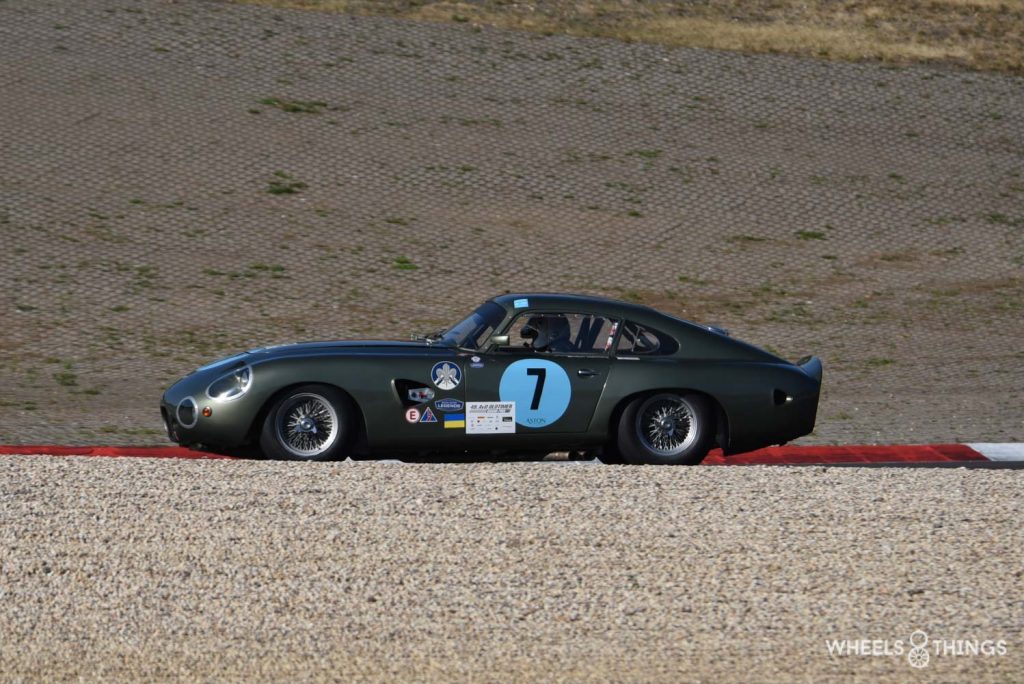
On Sunday, the Aston Martin DB4 GT of Wolfgang Friedrichs and Simon Hadfield took the win. The warm weather was not really an advantage for these old rascals. More than half of the participants had to leave the battlefield with technical problems. In the paddock, we found a very nice setup at one of the participating teams. The HK Mercedes team had set up its three cars between two trucks at the time. Really beautiful to see and completely in the right atmosphere!
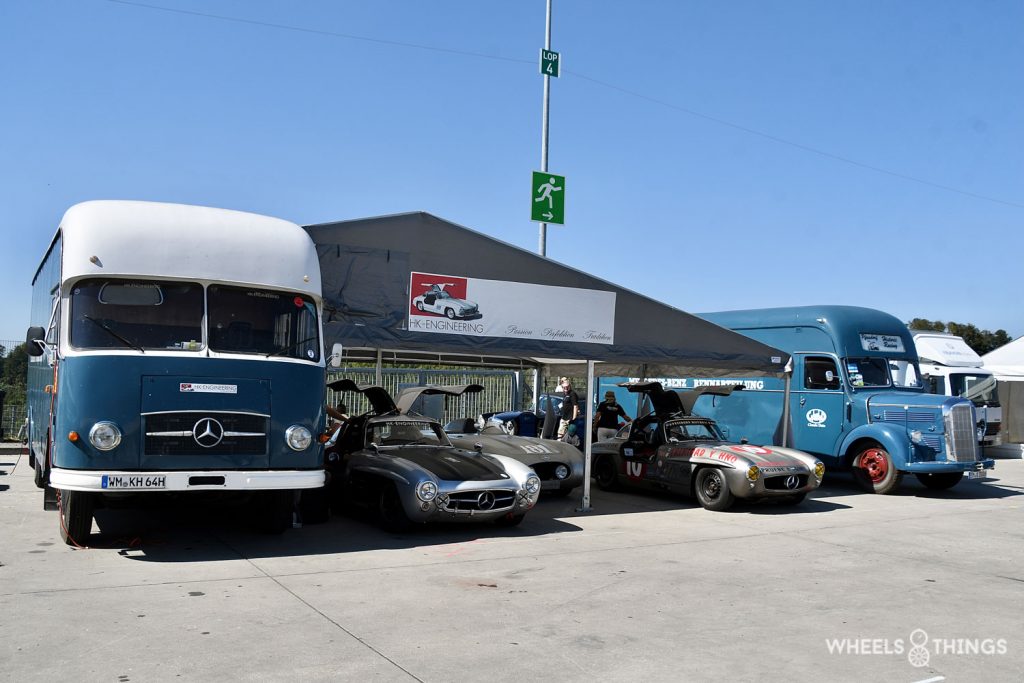
CAN-AM & SPORTSCARS / GROUP C CLASSICS
A new competition this year was the series with the Can-Am, sports cars and Group C cars. These three series made for quite a varied starting field, including a Porsche 917/10 turbo, a Mclaren M8F ( Canam ), Lola T 310 and even a Ford Probe Zakspeed.
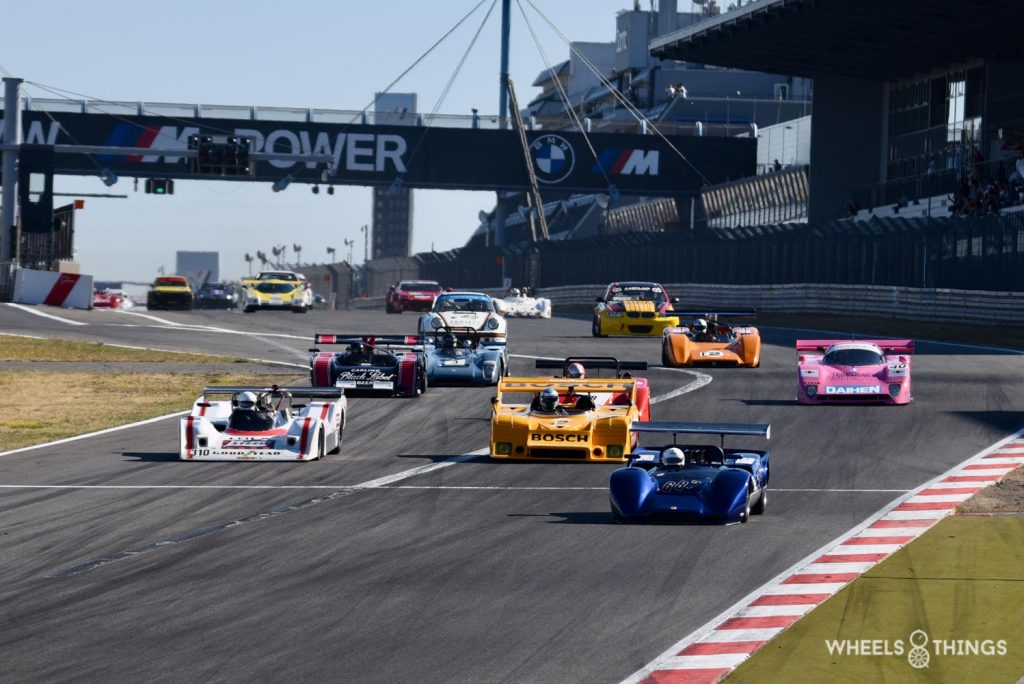
Ford wanted to take on Porsche in the American IMSA GTP championship with this Probe. A nice appearance though. Furthermore, we found the typical small Lola’s and Chevron models and some Porsche 911 Carrera’s and a BMW M1. Group C was only represented by a single Spice SA90. Also some WTCC cars like the BMW 320i that was thrown out of the DTM were allowed to start here. The smallest car in the field was an Opel Kadett. This just to illustrate how big the difference between the cars was.
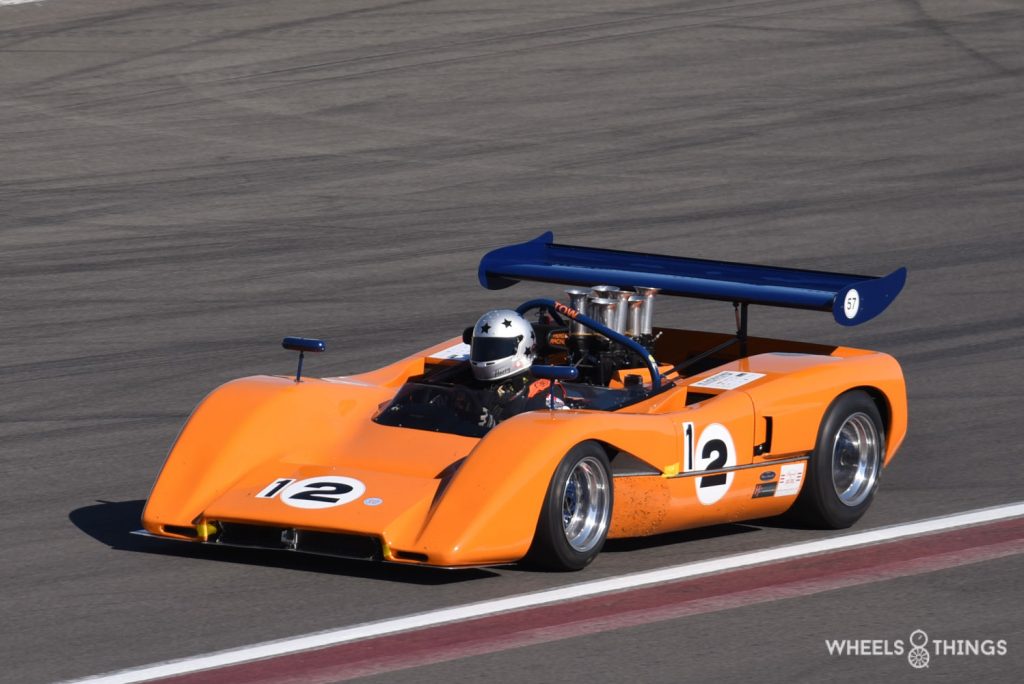
The absolute crowd-puller was the Porsche 917/10 turbo from the 1973 Interseries. The yellow Bosch Porsche worked like a magnet in the paddock. Streams of spectators were “sucked” towards it. Taking a picture without an audience was not easy.
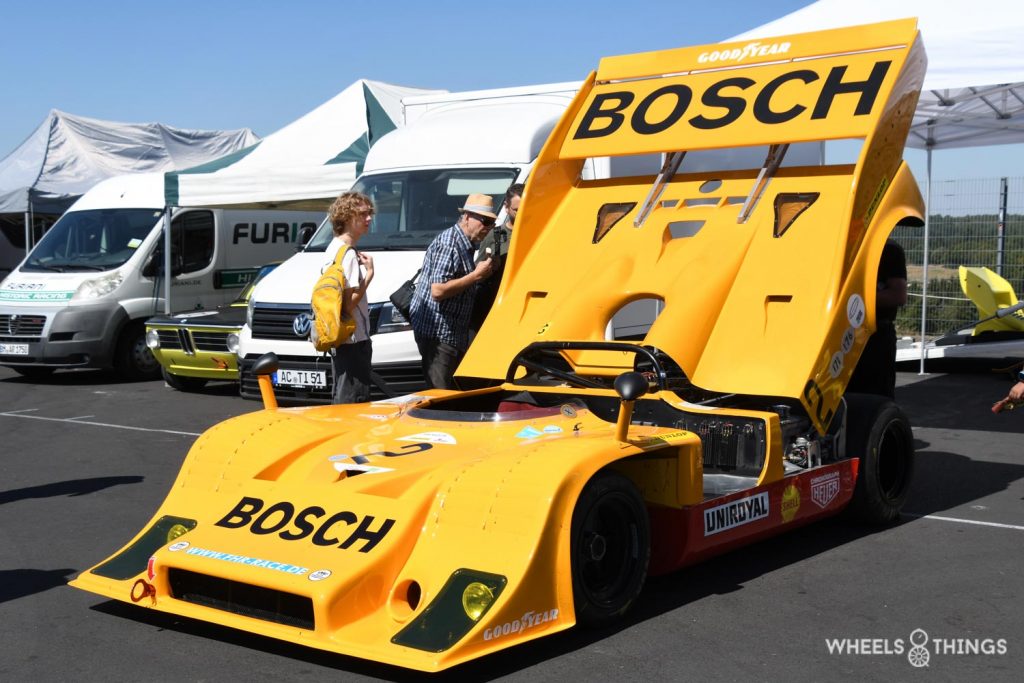
Former pilot Willy Kaushen was also present. Together with his mechanic, memories of 39 years ago were brought back for everyone who wanted to hear them. The words turbo, 1000 PS and Can-am or Interseries constantly came back. More about Can-Am can be found here.
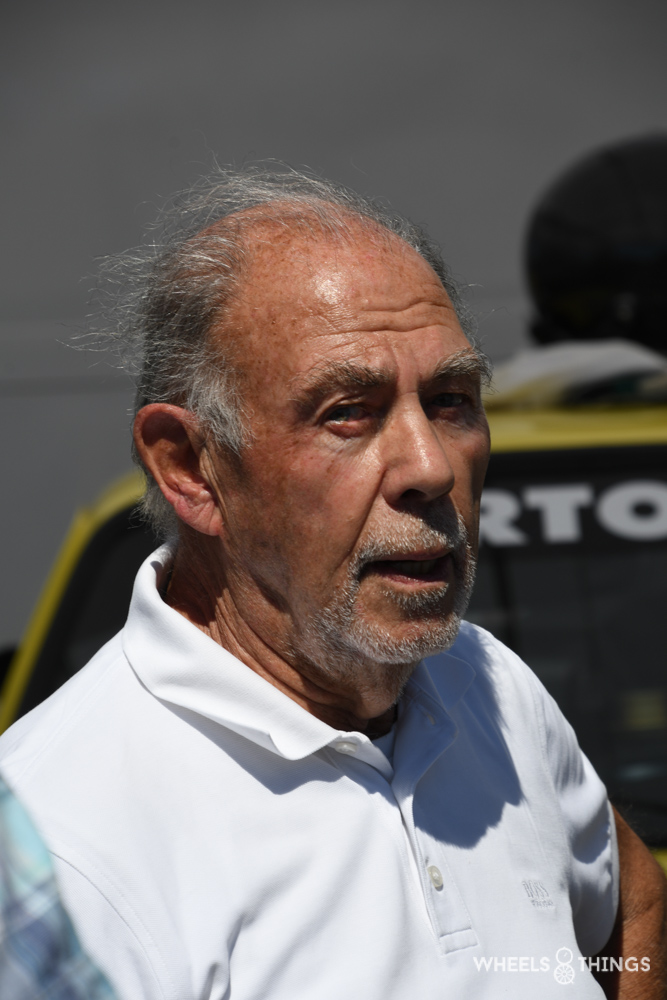
Pilot Patrick Simon did it very carefully with this museum piece in the races. After his racing career, the yellow Porsche has travelled the world. It once stood for a while in the museum at Stavelot, participated in the Porsche celebrations at Laguna Seca, took part in the Pebble Beach competition and appeared twice at the Festival of Speed at Goodwood. The participation stickers from back then still adorn the car.
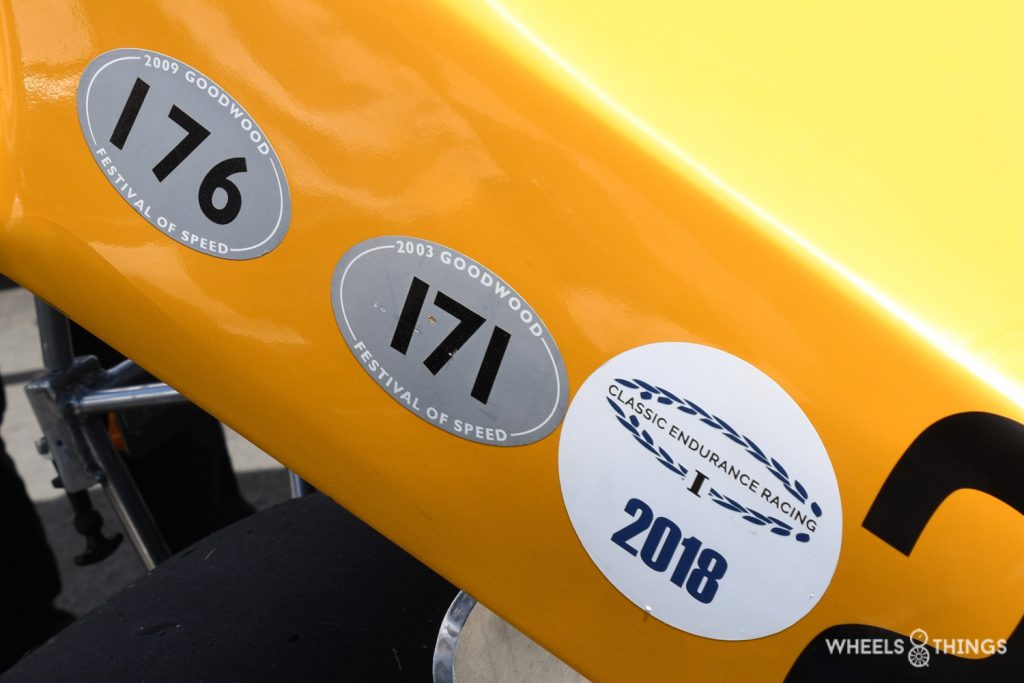
In the first race, there was a fierce battle between Georg Hallau’s Can-am Lola T 310 and Marc Devis’ sole Group C Spice. The latter crossed the finish line first by one second.
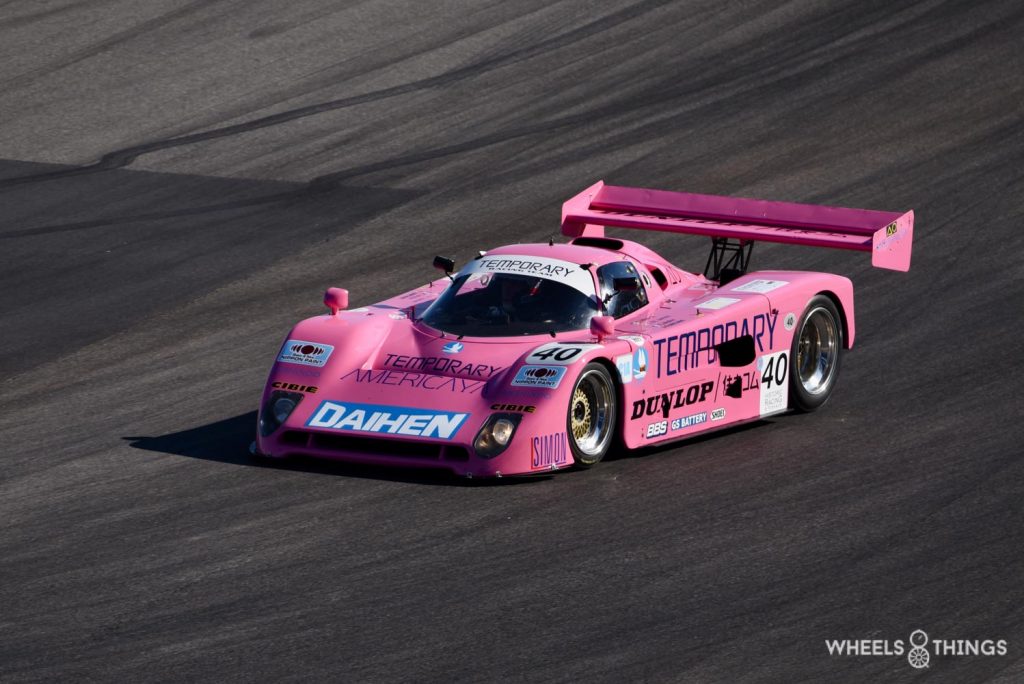
This pink Spice ( who chose that colour ? ) did it again in the second race and again the Lola T 310 was second. The yellow Porsche finished in fifth place but this was not important at all. To see such a car, with so much history, drive again in a real race was much more important than the result. This alone was worth a visit to the OGP!
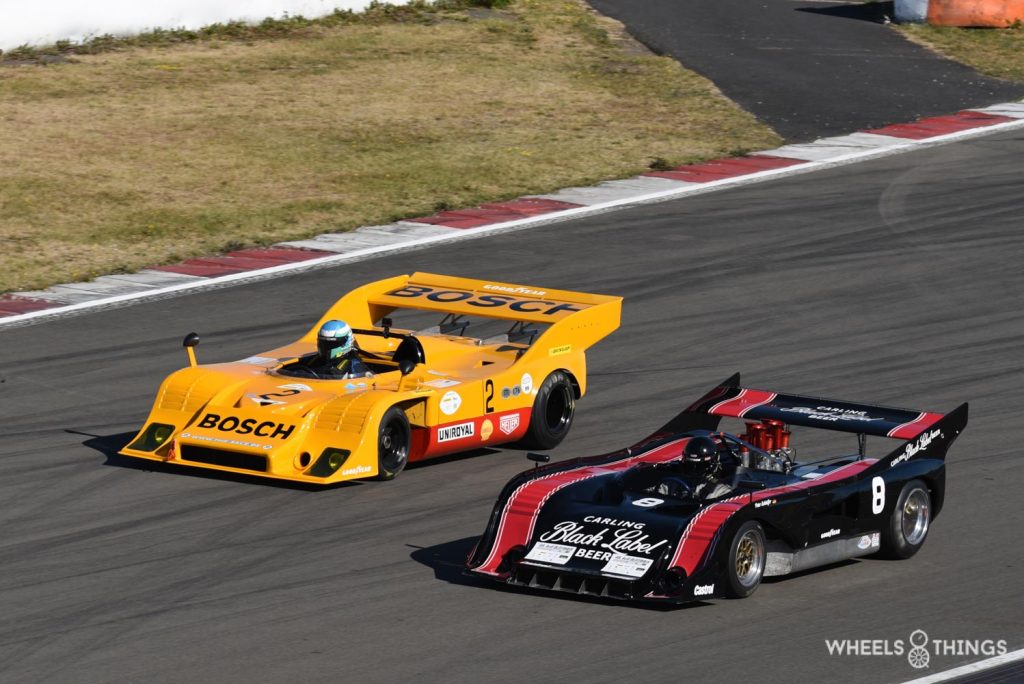
The Ford Probe had long gone home by then. After only half a lap, it had to pull over. Fortunately, we have a photo of it from the paddock and we would like to show it here. A unique car always deserves a place in our categories.
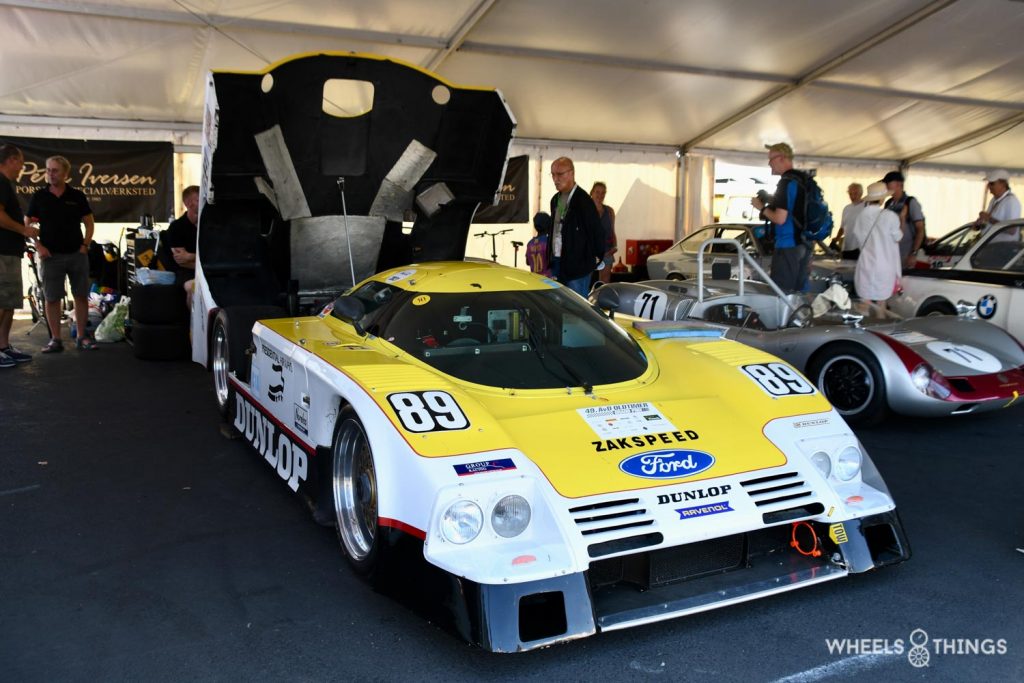
Another unique case is the Audi 200 Turbo Transam. We came across it at the Audi Quattro exhibition at Autoworld. You can read more about it here. Another example raced in between all this heavy violence, with the best result being sixth place, just behind the Porsche 917.
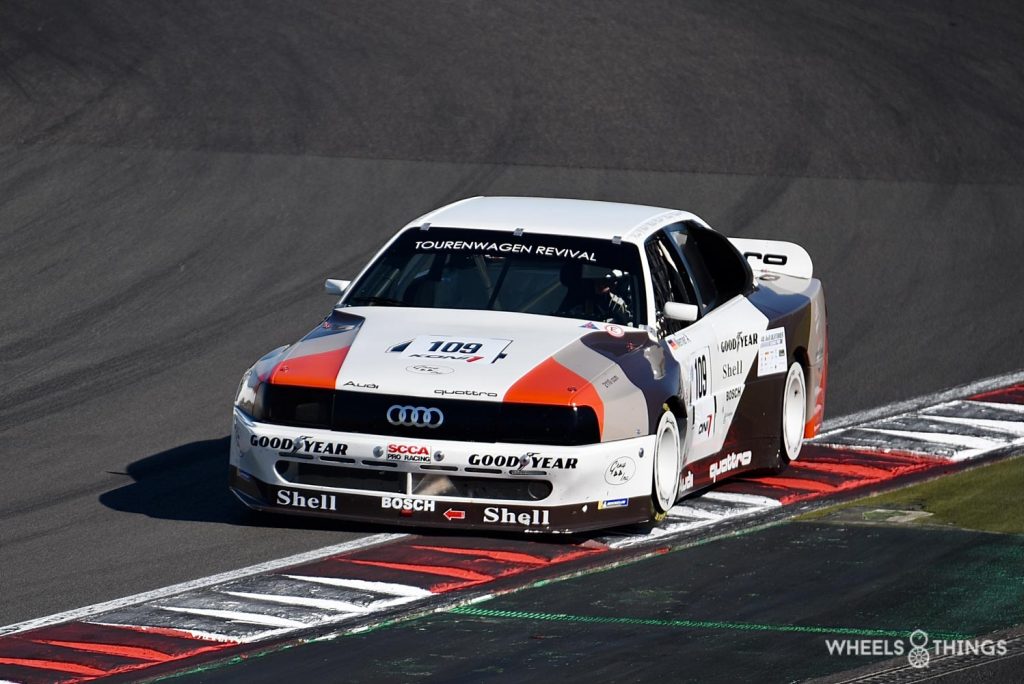
SKODA
Skoda is the only remaining carmaker loyal to the OGP organisation. They were thanked for this with two parades on Saturday and Sunday. In the paddock the cars were displayed in two tents. You would not expect it at first sight, but in 1950 Skoda even participated in the 24 hours of Le Mans with a Skoda Sport. This Sport recently made its appearance again during the Le Mans Classic. A more famous Skoda run is the 130 RS which was used both on track and in rallies.
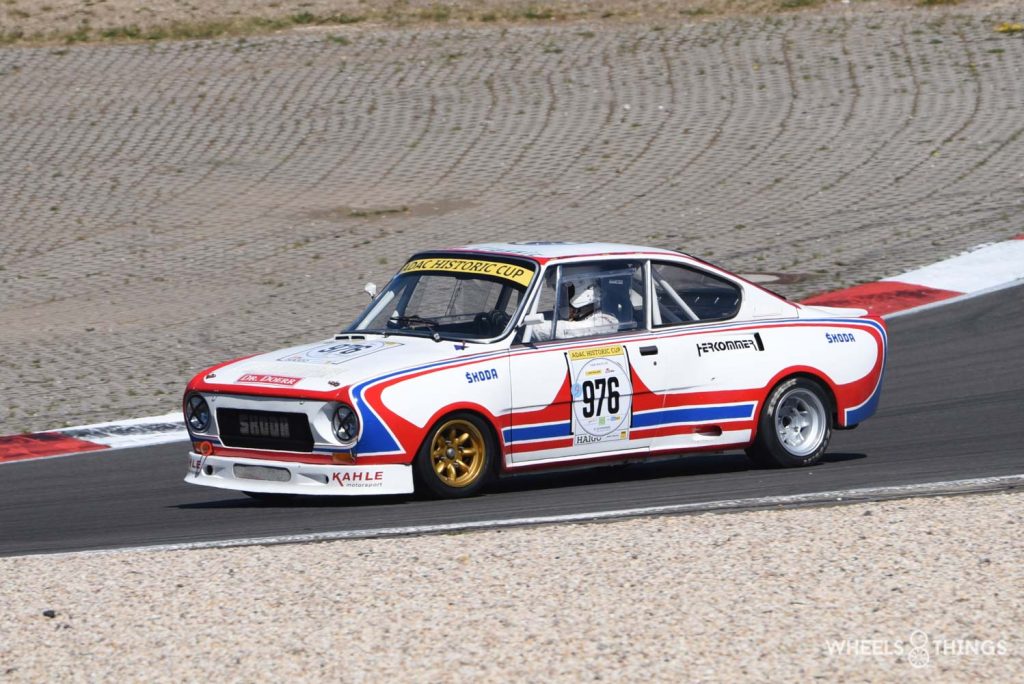
NURBURGRING TV
Classic motorsport fans who were not on site could still enjoy a very good live stream provided by the Nürburgring TV company. All races were clearly pictured and reported live by the circuit commentator. The commentator was assisted by a specialist for each race.
FHR HTGT
Another typical “German” series with this FHR / HTGT. These abbreviations stand for historic touring cars and historic GTs. In a one-hour race, touring cars and GTs from the 60s, 70s and 80s compete against each other. We saw a Ford GT, Porsche 911, BMW 2002, Alfa Romeo Guilia, Austin Healy 3000, Ford Mustang, Porsche 914, Jaguar E-type, Chevrolet Corvette and even a BMW M1 pass by. You wouldn’t expect to see them all in one race, but it was certainly worth the effort with some great duels and a large field of participants.
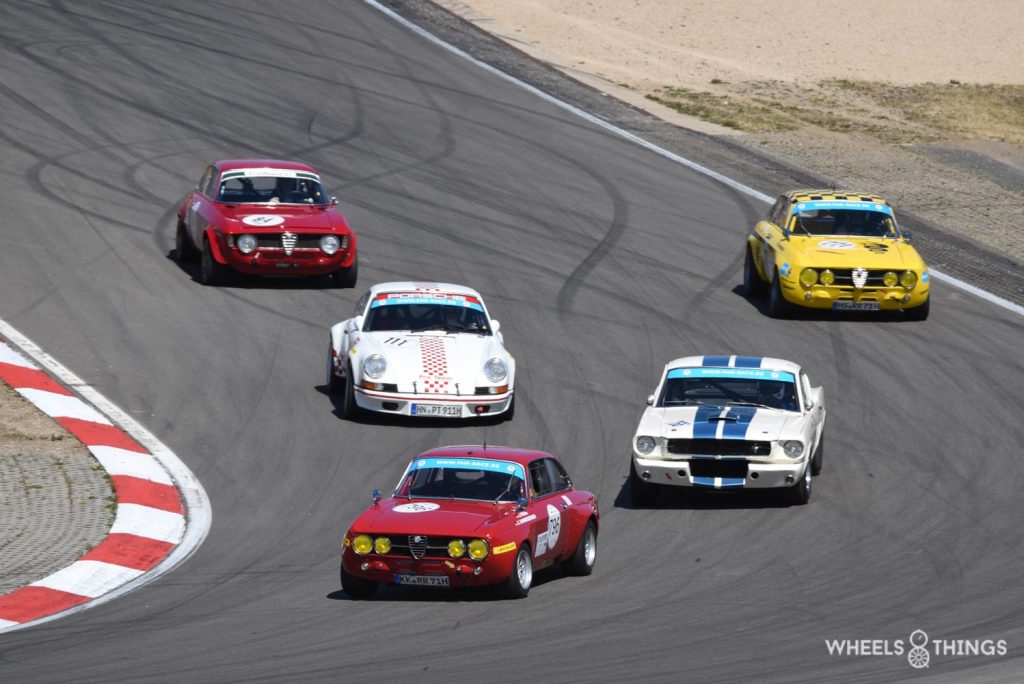
The Ford GT was on course for the win for a long time but had to slow down in the final stages of the race and so the victory went to a Porsche 911.
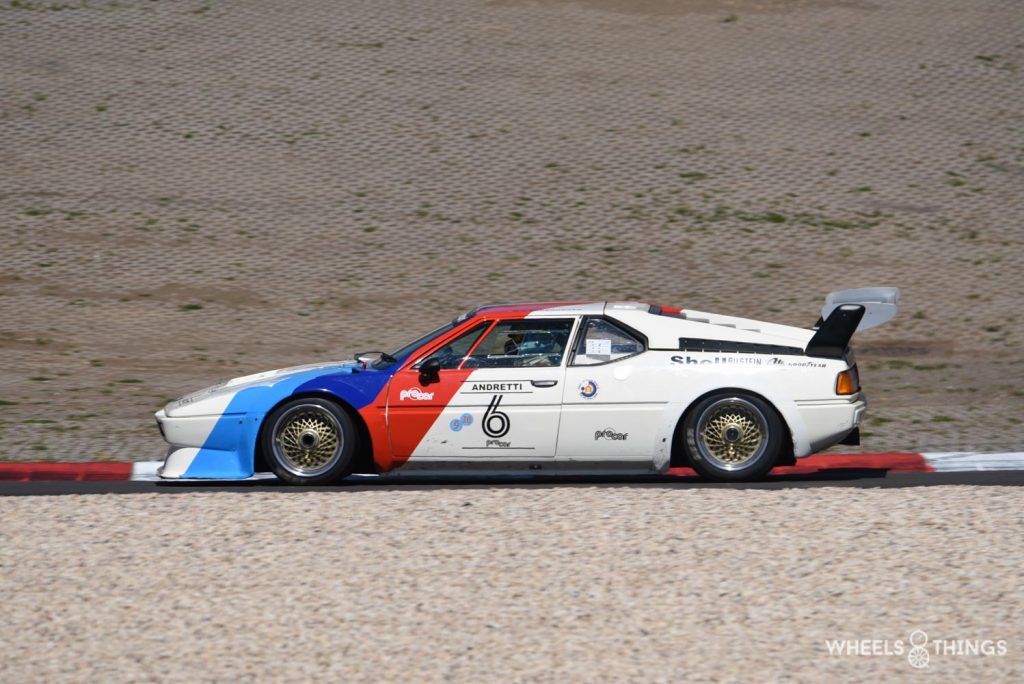
HISTORIC GRAND PRIX CARS ASSOCIATION
The predecessors of the current Formula 1 were of course also present. The big cars with engine at the front like the Maserati 250F or the Scarab competed against the more recent smaller models with engine at the back like the Cooper’s ( T41-43-45-51-53 ), Lotus 18 and Brabham models ( BT4- BT7-BT11 ) and together they provided a nice starting field of 35 participants.
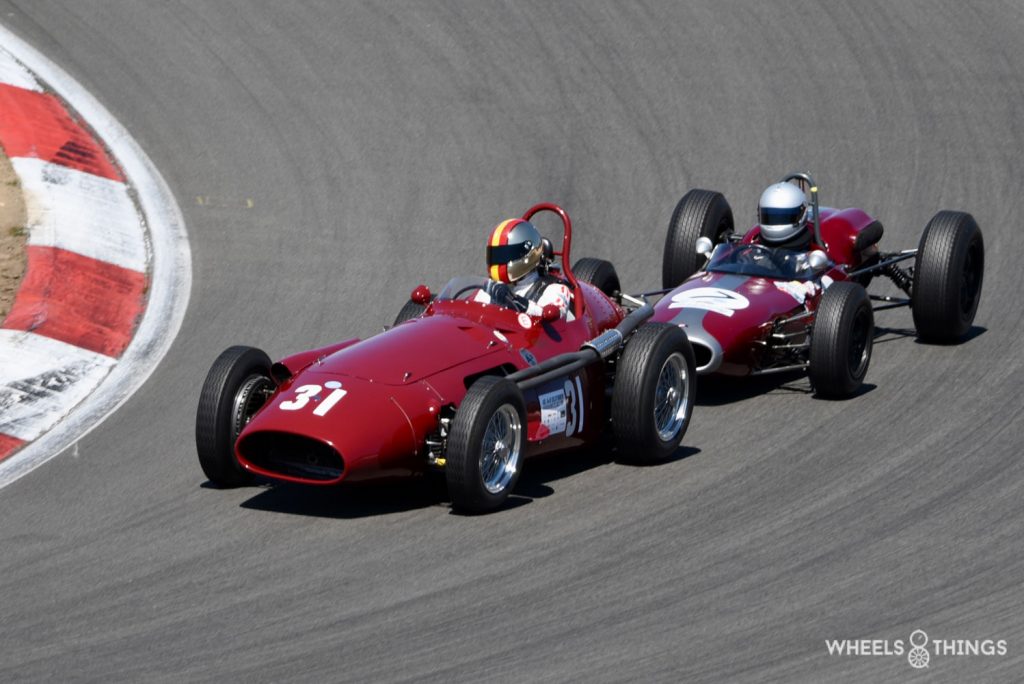
The cars with the engine in the rear are the fastest in this series. The first race was won by Michael Gans’ Cooper T 79 and the second by Will Nuthall’s Cooper T 53.
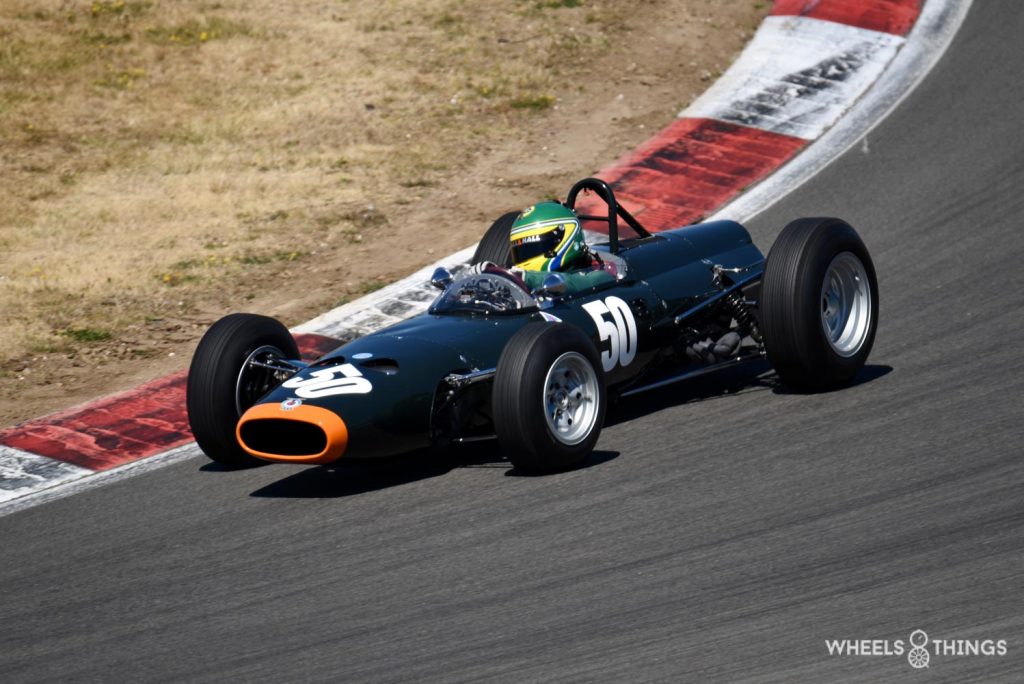
There were also four Maserati 250Fs at the start. These were not really racing for victory but against each other and we saw fierce mutual duels whereby a raised fist appeared more than once.
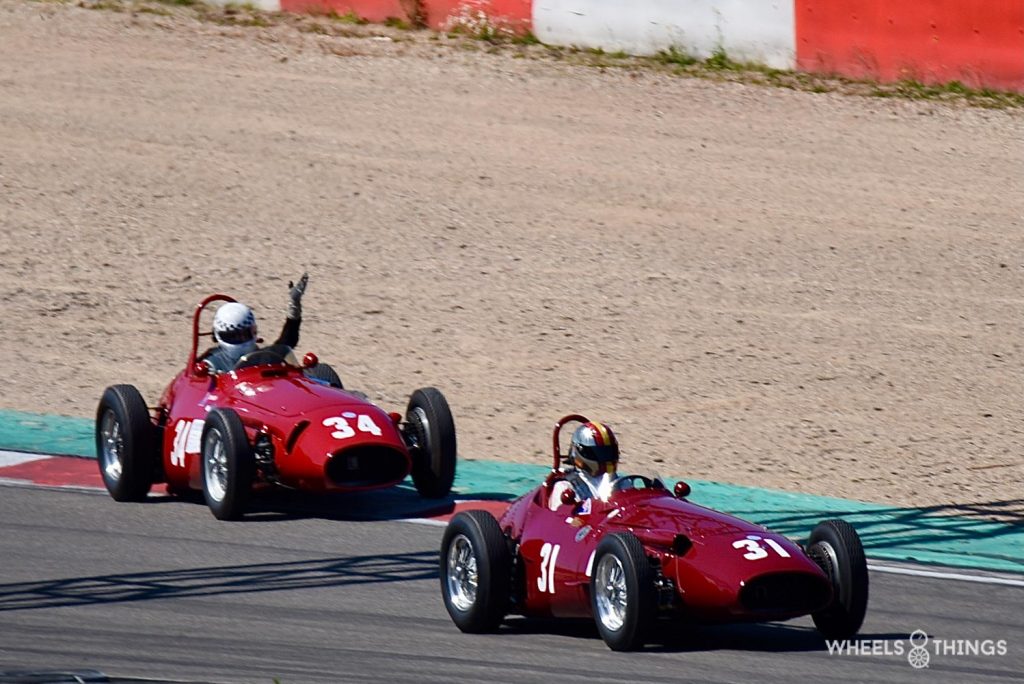
LURIANI TROPHY
The Lurianis were also present at the Zolder Historic Grand Prix a few weeks ago. A report can be found here. In both races, the podium was identical. Manfredo Rossi Di Montelera ( Lotus 22 ) took P1 in front of Roberto Tonetti ( Brabham BT 6 ) and Philipp Buhofer ( Lotus 27 ).
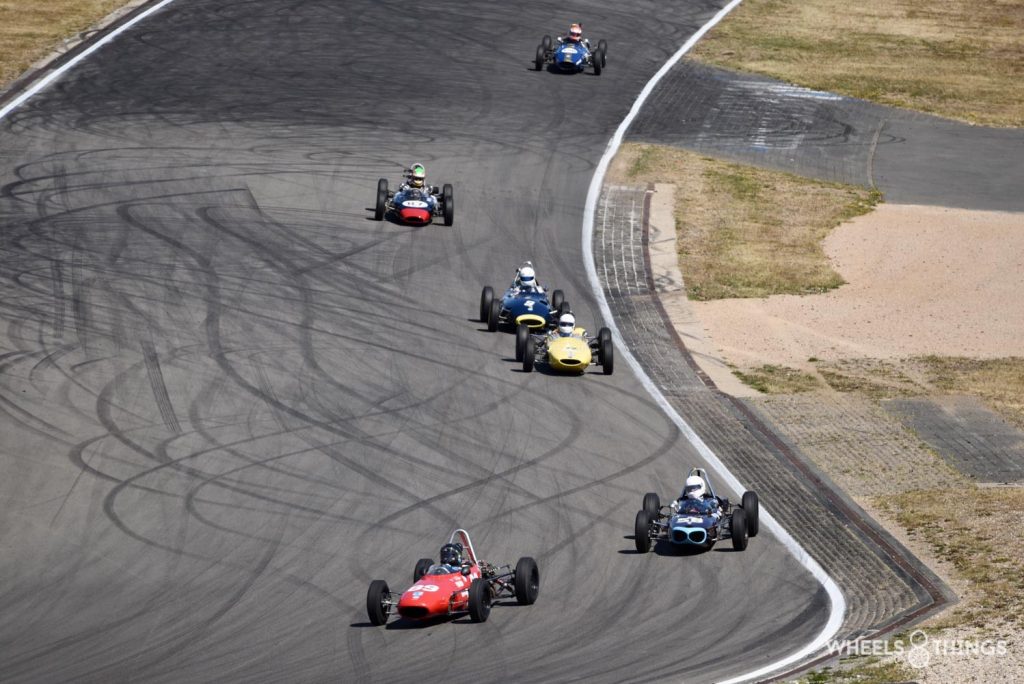
VINTAGE SPORTS CAR TROPHY
Traditionally, the oldest racers of the weekend are found in the equally old historic paddock that remains from the previous circuit configuration. A visit to this paddock is a return to times long gone. All the participants in this race were found there in the old typical Nürburgring car boxes. If there is a small BMW 328 or Bugatti 35B, there is still enough space for the mechanics to carry out any repairs. If it contains a gigantic Mercedes SSK or SSKL, this is not really the case. This Vintage Trophy is not really a competition but a regularity event. The participants must try to drive laps with the least difference in time. Whoever can do this best is the winner. This is an ideal system to not overburden these oldies. Fans of pre-war cars had a great time here, with brands such as Mercedes, Bentley, Jaguar, Packhard, Hotchkiss, Maserati, BMW, Riley, Wolseley and Bugatti.
Uli Sauer drove for the 49th time in this series with his BMW 328. He is the only participant who can show this and not only in this series but of the entire OGP organisation.
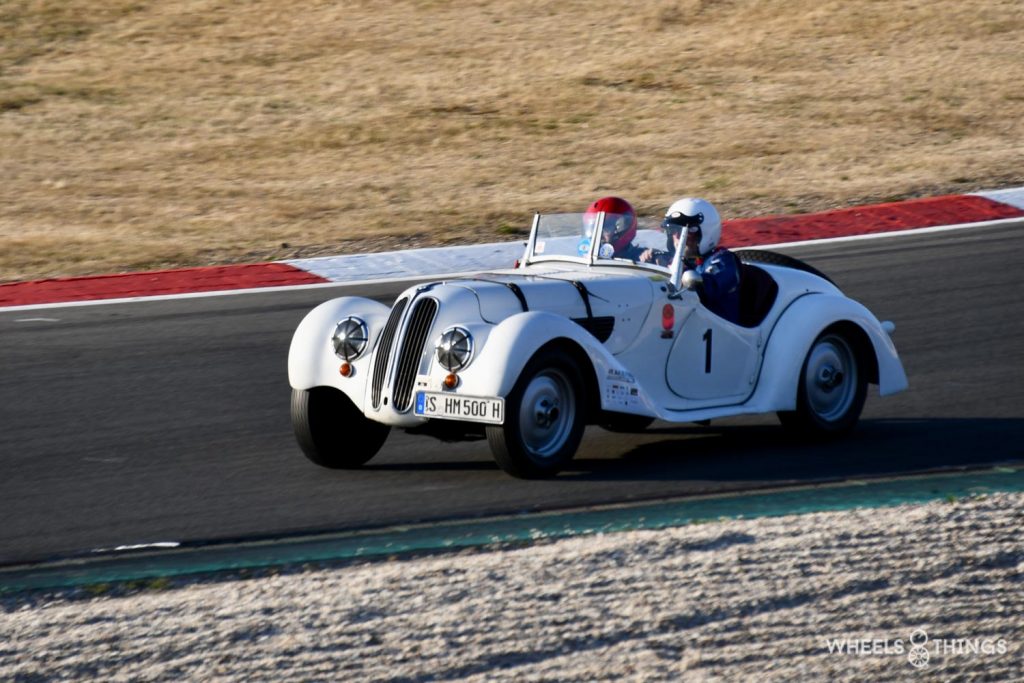
It may be a regularity race, but we saw a big Mercedes SSKL drifting through the same bend every lap. You just have to do it this “white elephant”, the nickname Ettore Bugatti gave to this Mercedes.
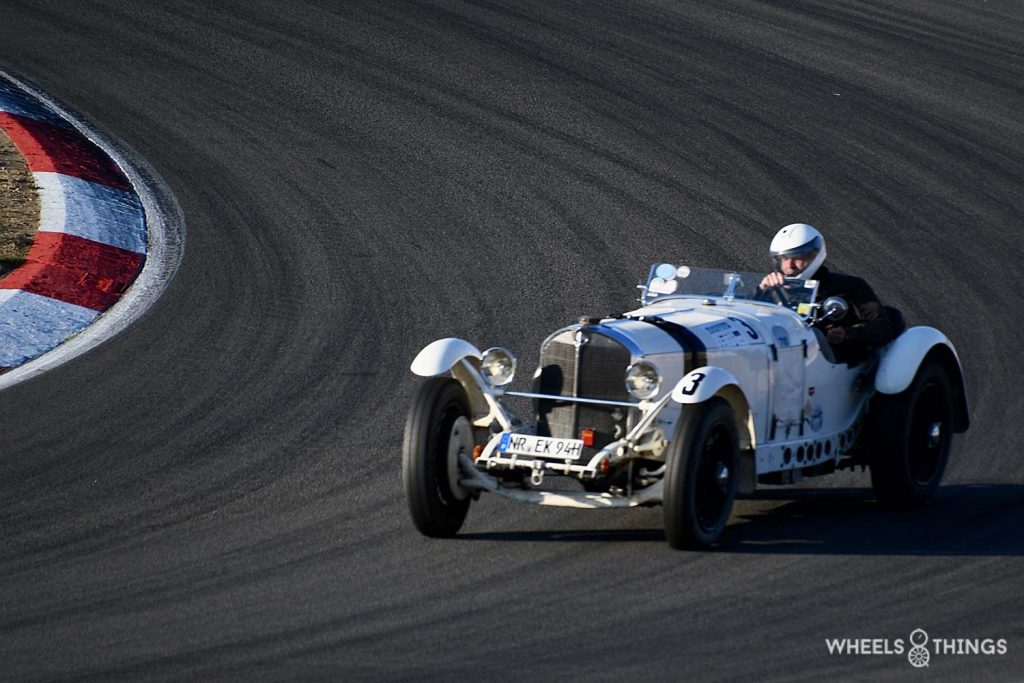
MOTOR KLASSIK
Every edition, German Oldtimer magazine Motor Klassik invites its readers to two laps of the Nürburgring during the OGP. We saw a procession of more than 165 cars with the most diverse cars. Of course many German examples of Porsche, Audi, Mercedes, Opel and BMW but also Japanese such as Mazda and Toyota appeared on the track. And with 165 cars, the whole track was full.
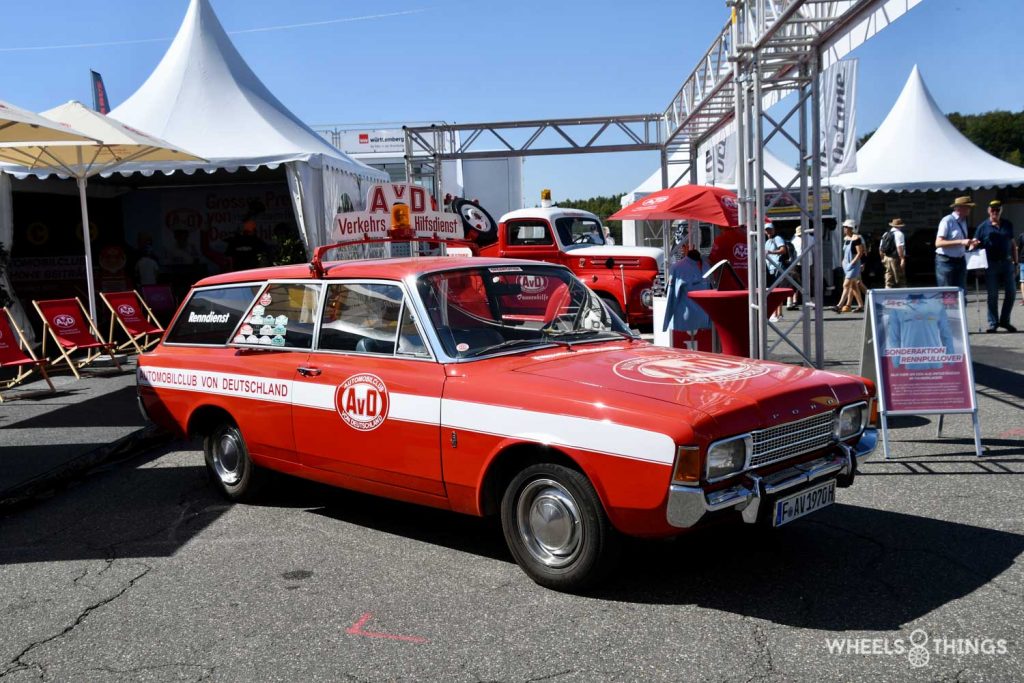
There was also a Motor Klassik tent where anyone who wanted to could buy a cup of coffee with the appropriate Motor Klassik coffee mug edition 2022. Afterwards you could refill your coffee all weekend long for 1 euro per cup.
SCHNITZER CLASSIC
BMW and the Schnitzer racing team were regular partners in car racing for many years. At the end of 2020, their cooperation came to an end during the Corona pandemic. You can read more here. At the end of 2021 the almost complete infrastructure, including five historic racing BMWs, was taken over by the Trautweinn family. From 2022, a new chapter in this history begins with the establishment of Schnitzer Classic. Schnitzer Classic is participating in the DTM championship this year with two cars. An M3 E30 DTM and a 320i STW Supertourer. For the race at the Norisring, BMW Classic called on the team to deploy a 320i for BMW factory driver Bruno Spengler, who achieved second place with it.
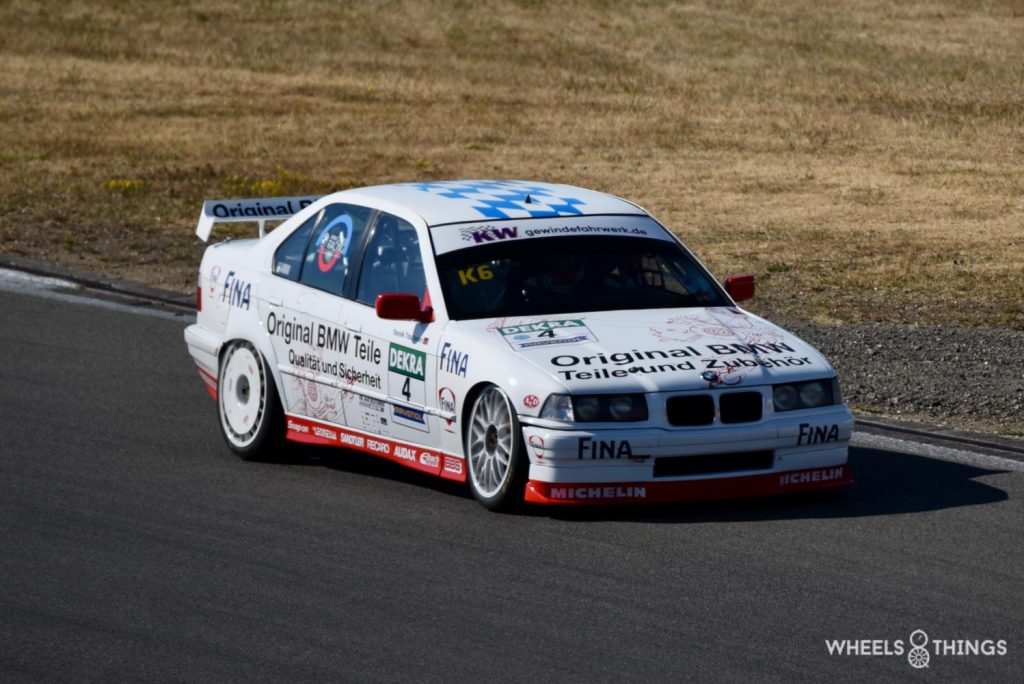
Under their tent in the paddock, they had brought two of the five Schnitzer BMWs they had acquired. A 2002 turbo group 5 from 1977 and the mighty BMW M3 E46 V8 GTR from 2004. The 2002 was the first car in the two litre class to be fitted with a turbo engine in the then DRM. The 2002 turbo achieved two victories in 1977. The turbo engine was then transferred to the new 3 series and won the DRM title in 1978. The M3 GTR became champion in the American ALMS championship and took two victories in the 24 Hours of Nürburgring.
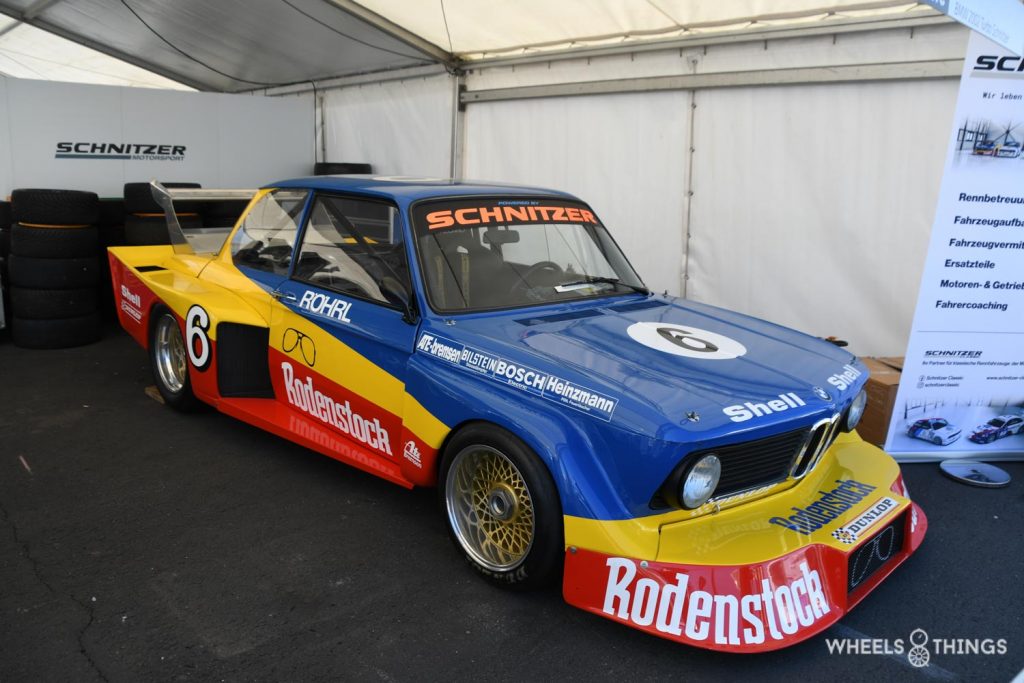
The intention is to prepare the 2002 Turbo and the M3 GTR for competition again. We are eagerly awaiting their return to the racetracks. Besides these two, the acquisition also included an original BMW 635CSi group A, a 320i WTCC and an M3 E30 DTM.
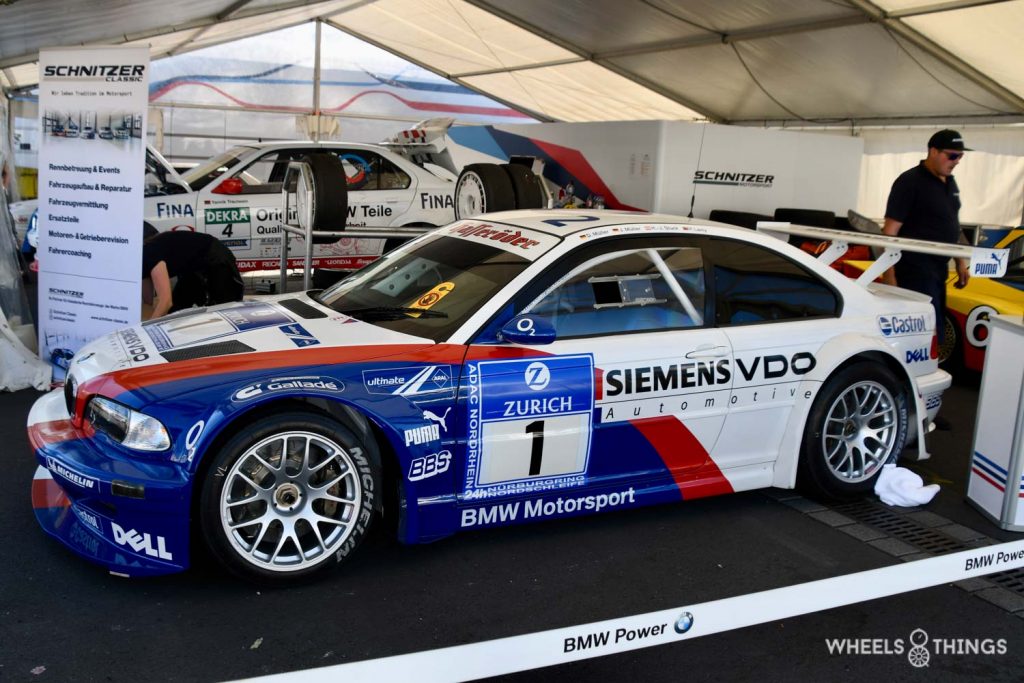
Ferrari Club Deutschland Racing Series
A little less classic are these races of the Ferrari Club of Germany. Admitted are Ferrari and Maserati racing cars. Apart from one Maserati, the entire field is made up of Ferrari 430, 458 and 488 GT racing cars. We find there the so called “Cup” or “Trofeo” cars but also GT2 and GT3 cars which are no longer used in international races.
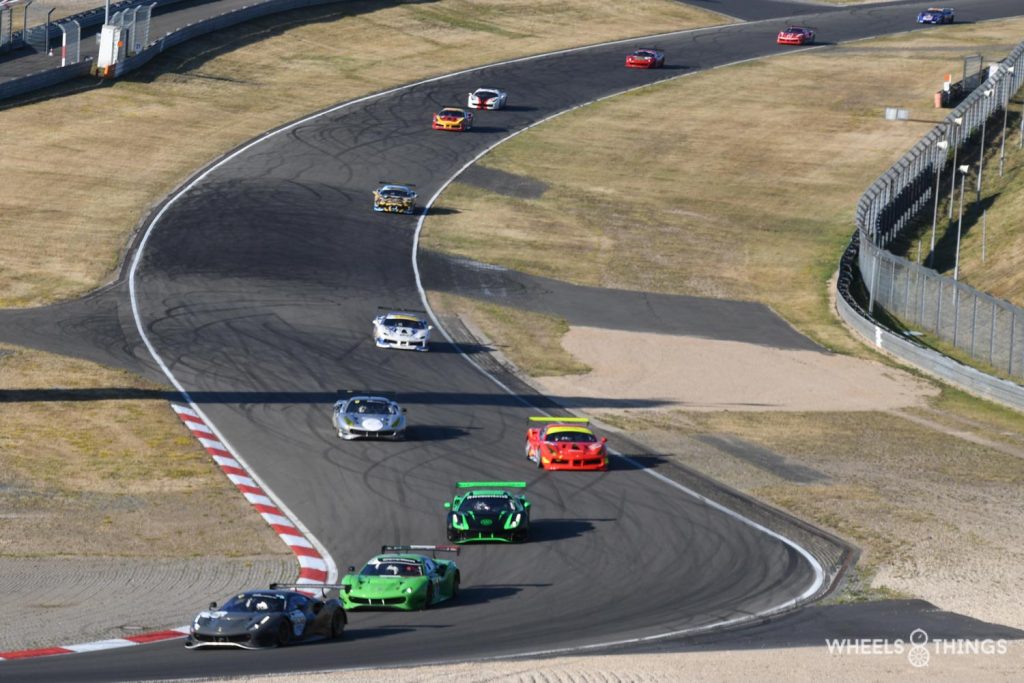
Amongst the participants, we saw an ex-Belcar Ferrari 430 GT3 of the Delahye Racing Team in full Red Bull livery. Not really a successful car in our national championship but a very nice appearance.
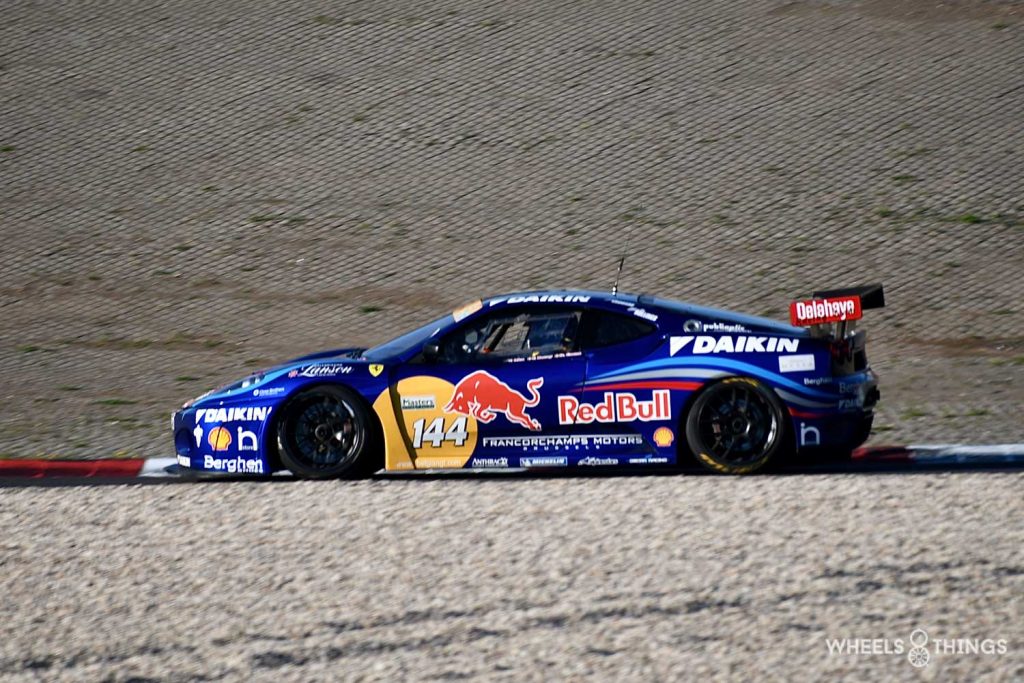
And the fact that it was driven fast and it was still quite warm is proven by these glowing brake discs that appeared on several Ferrari models.
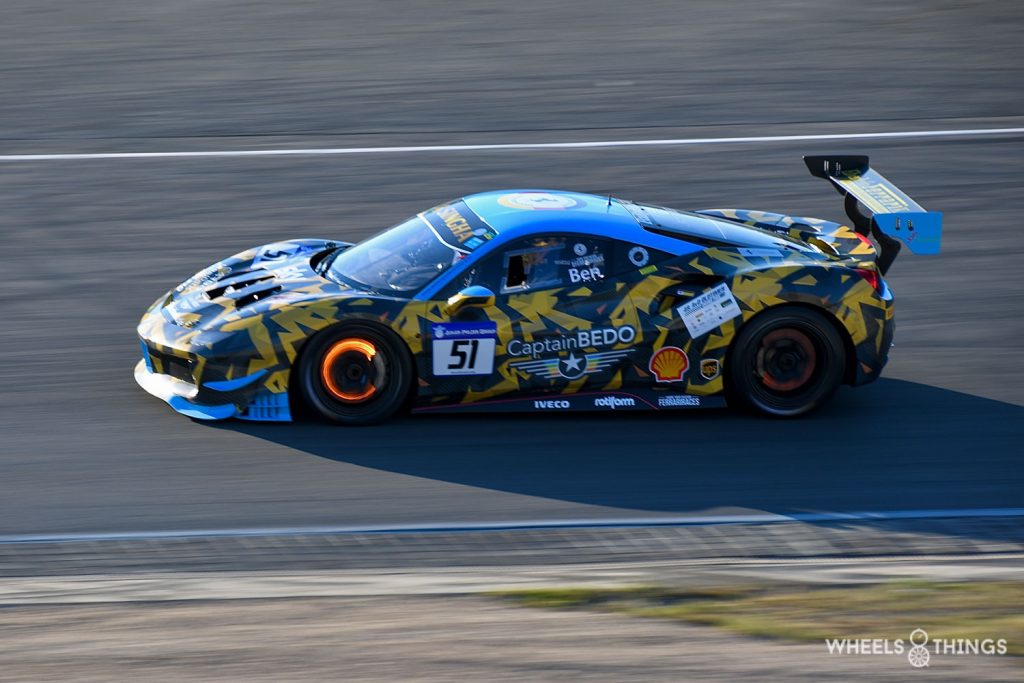
With more than 30,000 spectators, this Nürburging AVD OGP was again a success. The numerous spectators enjoyed the beautiful cars and spectacular races, such as the DTM Classic, under a wonderful sun and even in pleasant temperatures of 25/26 degrees. After three years, it was a very nice reunion with this circuit and the perfect organisation. Yes, we are in Germany after all.
This organisation was also able to announce with great satisfaction that a new contract had been signed by the various parties and that the continuation of the OGP was already certain until 2028.
And let us hope that for the 50th edition, which will take place on the second August weekend in 2023, there will be some special surprises. Maybe the big German car brands can all do an “efforke” again. Mercedes, BMW, Opel and Porsche have supported the OGP for years but have now all left. Difficult to understand and so we hope that next year they will certainly come to their senses and make the anniversary edition an even more beautiful spectacle.
Report & photos: Joris de Cock
